If you’re ever in Salem, Massachusetts, and want to walk the Salem Heritage Trail, a good place to start (and to park) is The House of the Seven Gables. I’m always a fan of a good house tour, and this one is almost as interesting for its history as a tourist spot as it is for the Hawthorne novel that made it famous.
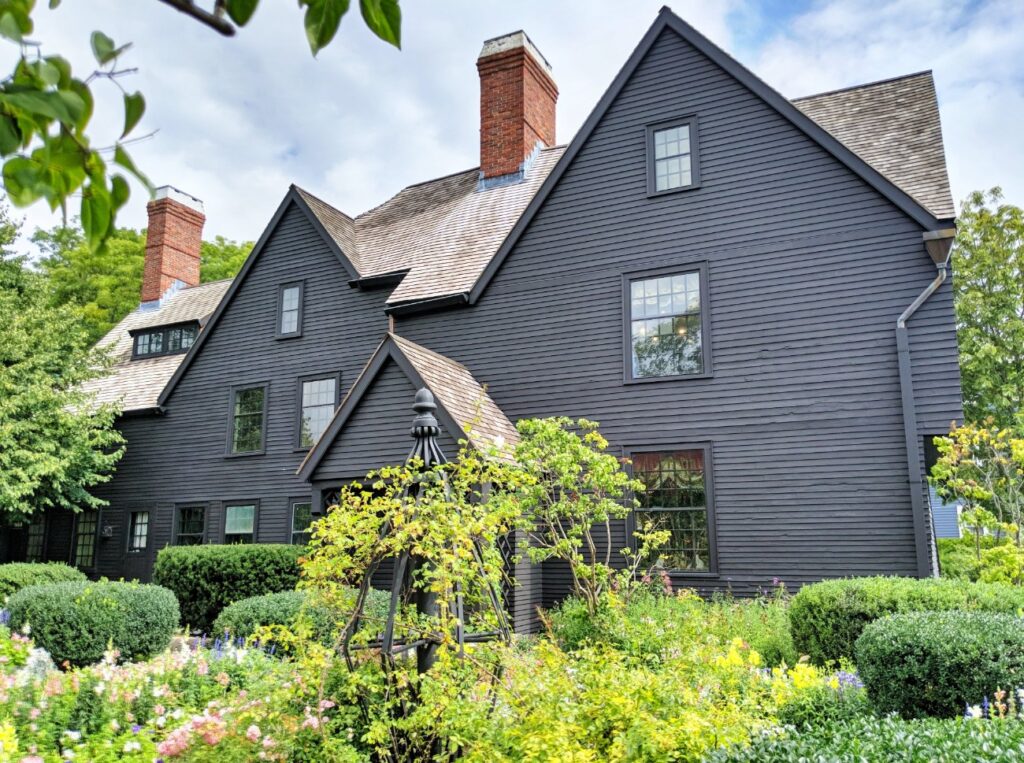
Visiting The House of the Seven Gables
The first section of the seaside house was built in 1668 and added onto – and detracted from – in the 355 years since. Around 1850, visiting cousin Nathaniel Hawthorne was impressed enough with the history of the house – and its previous additional gables – to write a book called The House of the Seven Gables. And while it is referred to by that name, the official name is the Turner-Ingersoll Mansion, named for the previous owners.
By 1908, the house was sold to Caroline Emmerton, who restored it to directly appeal to fans of the novel. She added back the missing gables and installed a “secret stairway” that you get to climb on the tour. Plus, she added some elements related to the novel that were never original to the house, like a “cent shop” and a well. She installed colonial-style gardens, and over the years, moved several other historically important buildings to the site, including Nathanial Hawthorne’s birthplace. The result is a literary/colonial attraction that drew visitors from its opening day in 1910. At various times, there was a tea room, boarding rooms, and even an academy (I think) on-site.
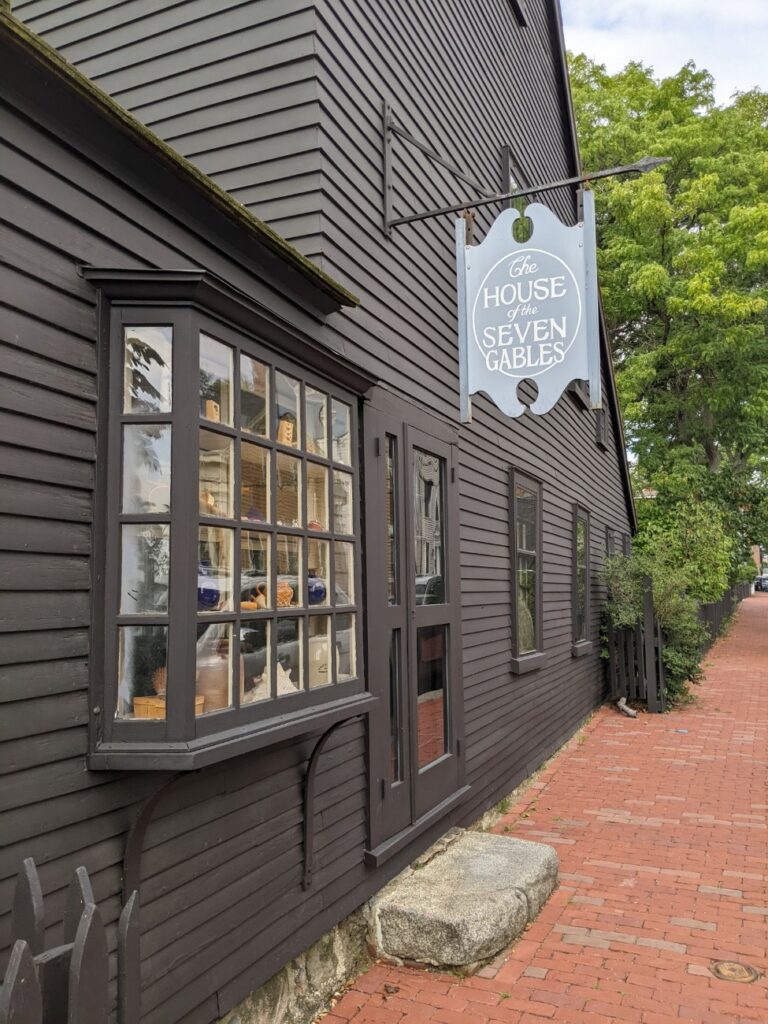
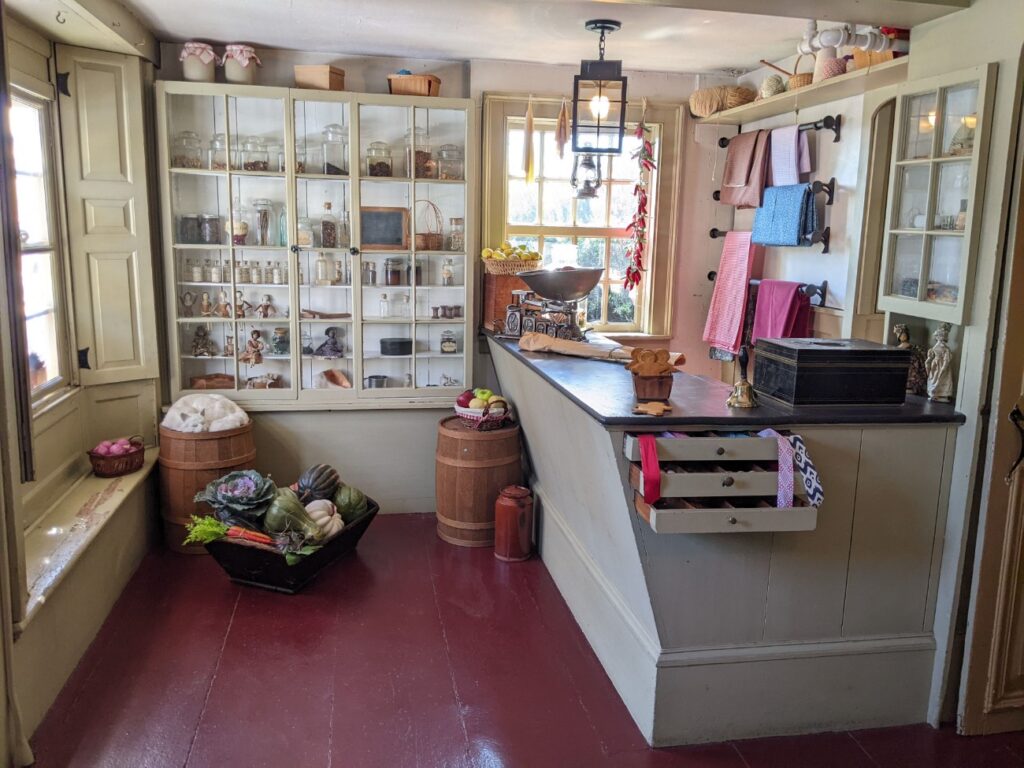
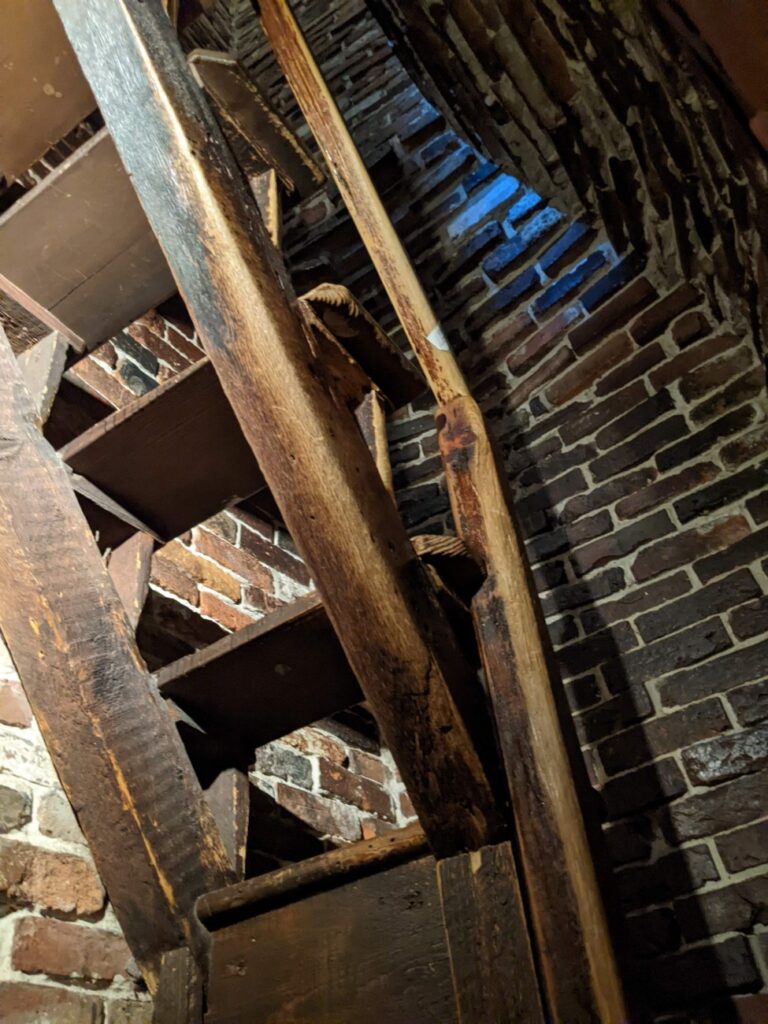
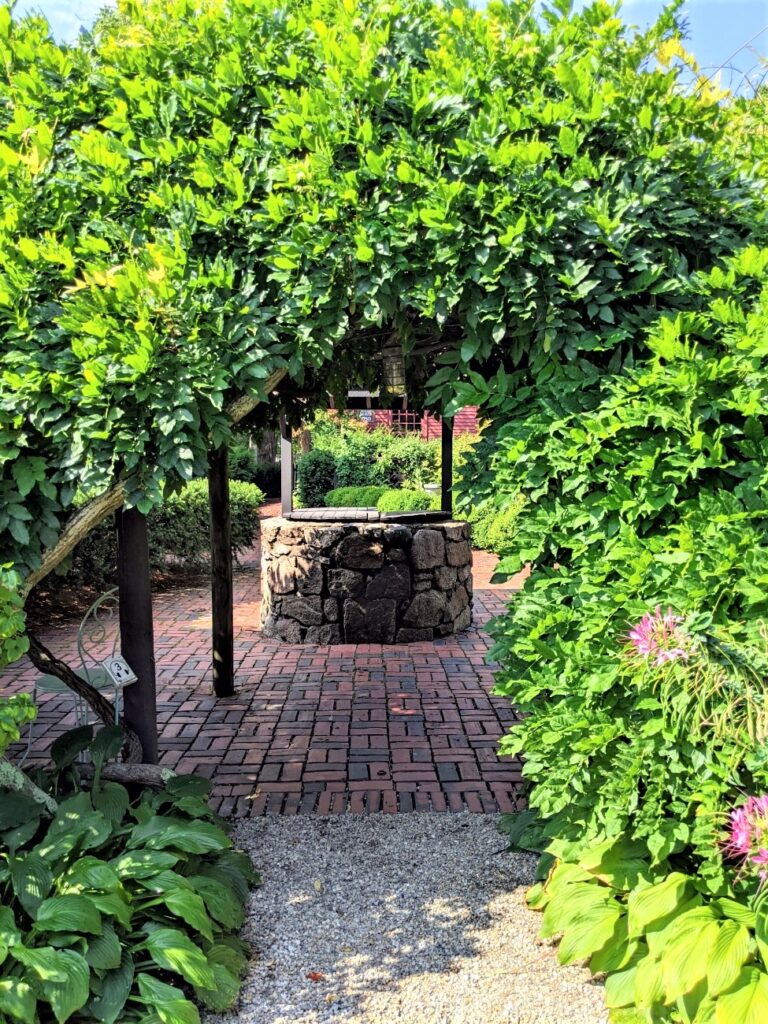
Now, the complex has a modern visitor center and not only hosts tours of the gardens and the houses but also special events. It seems to be particularly popular to get married on the seaside lawn.
Seamans Visitor Center
You start your visit at the 1994 Seamans Visitor Center. There’s a fairly generous free parking lot (and even a cute Little Free Library.) In fact, you might be able to park here without touring the house, though I wouldn’t try it on a summer weekend.
Inside, you can purchase or present your tickets, visit the bathroom, and even connect to the wifi. Look around at the walls to see old signs from the early years of the attraction. There are also event and education rooms in this building. And it incorporates an old barn and the old 1910 tea room buildings.
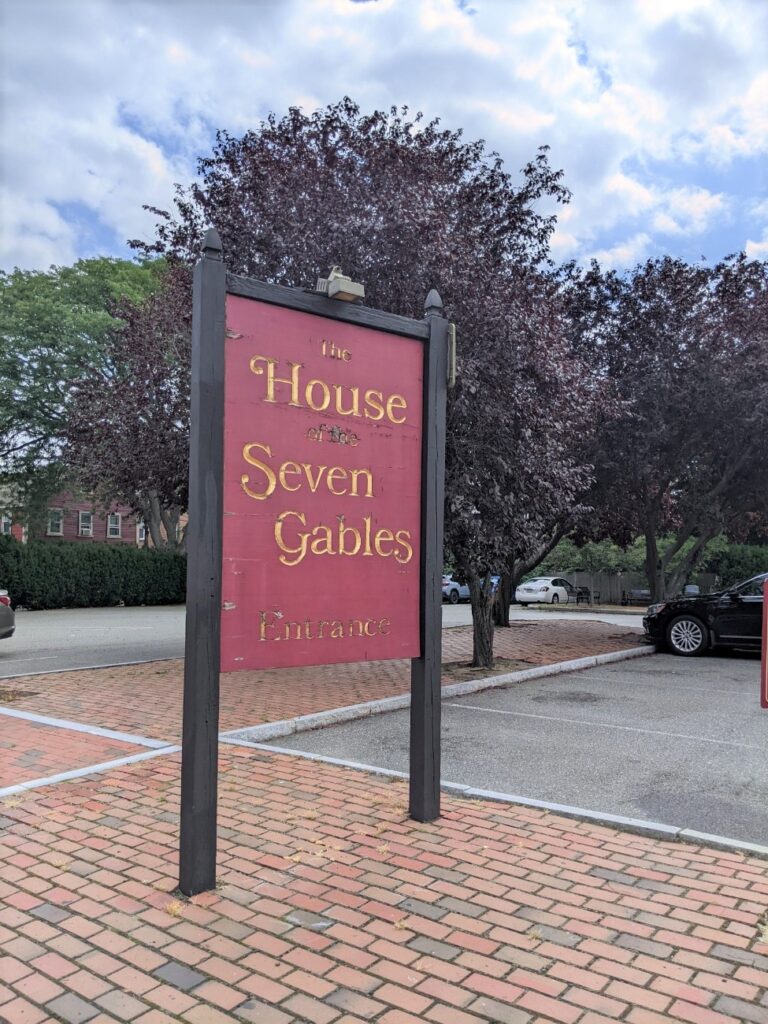
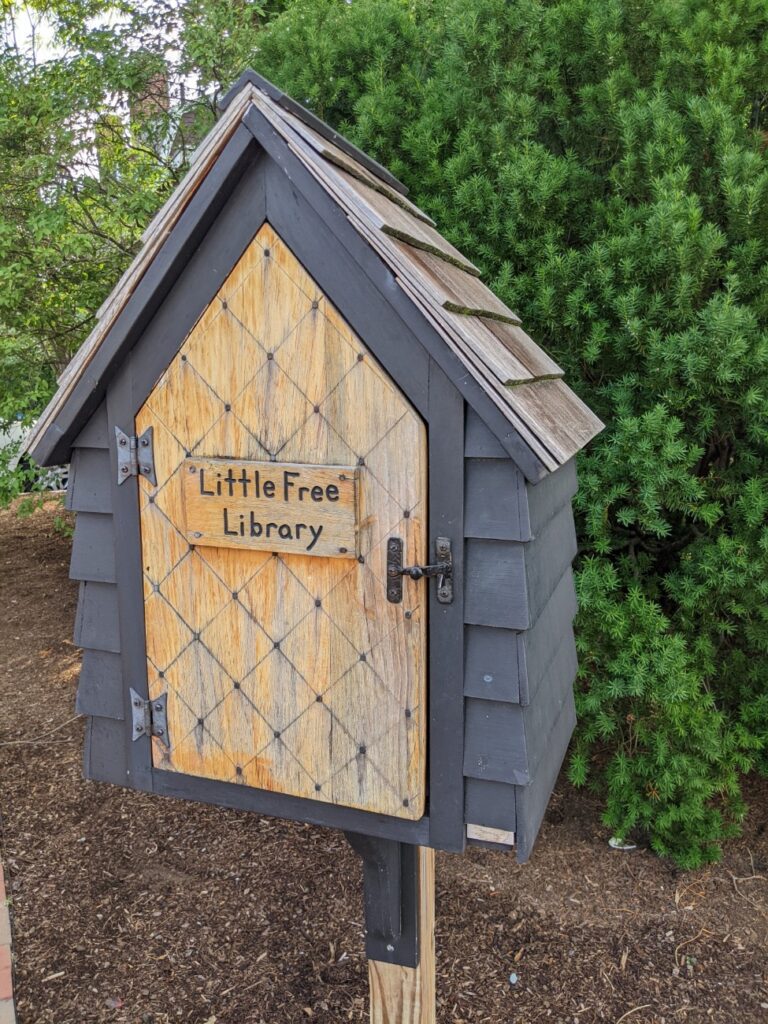
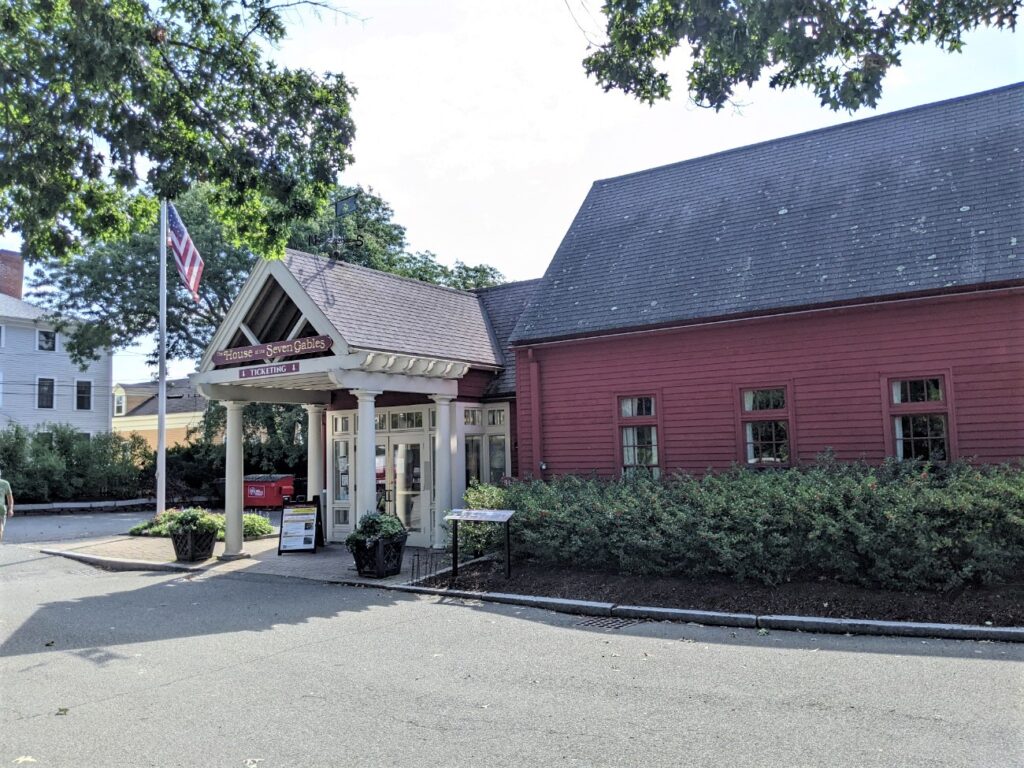
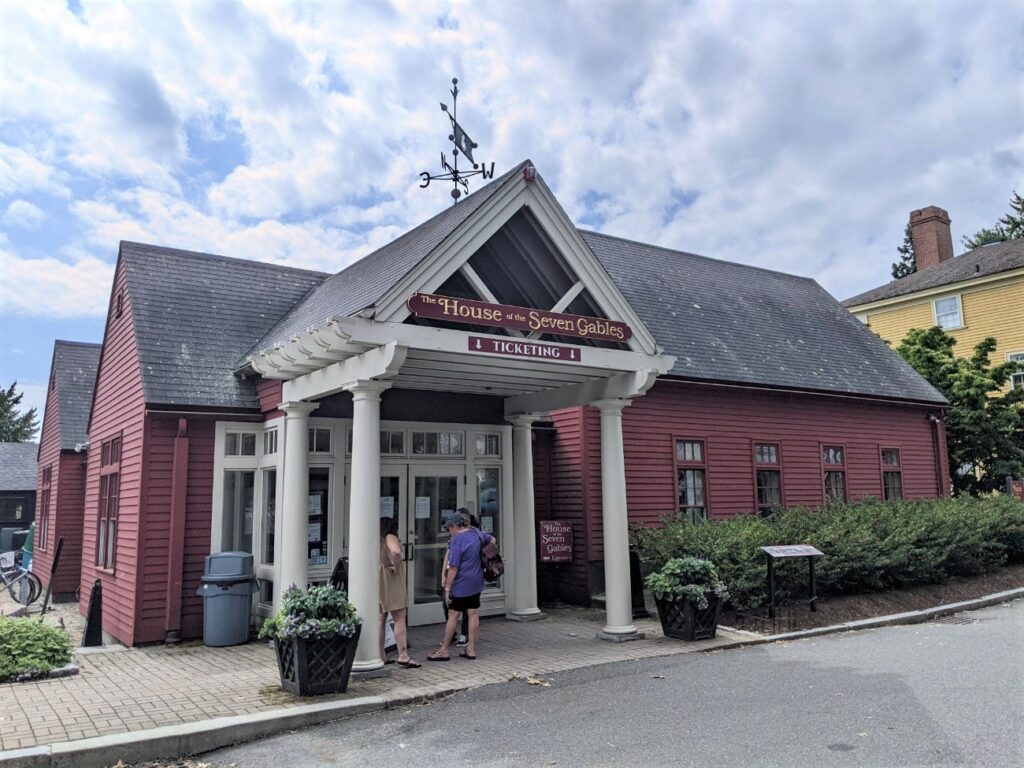
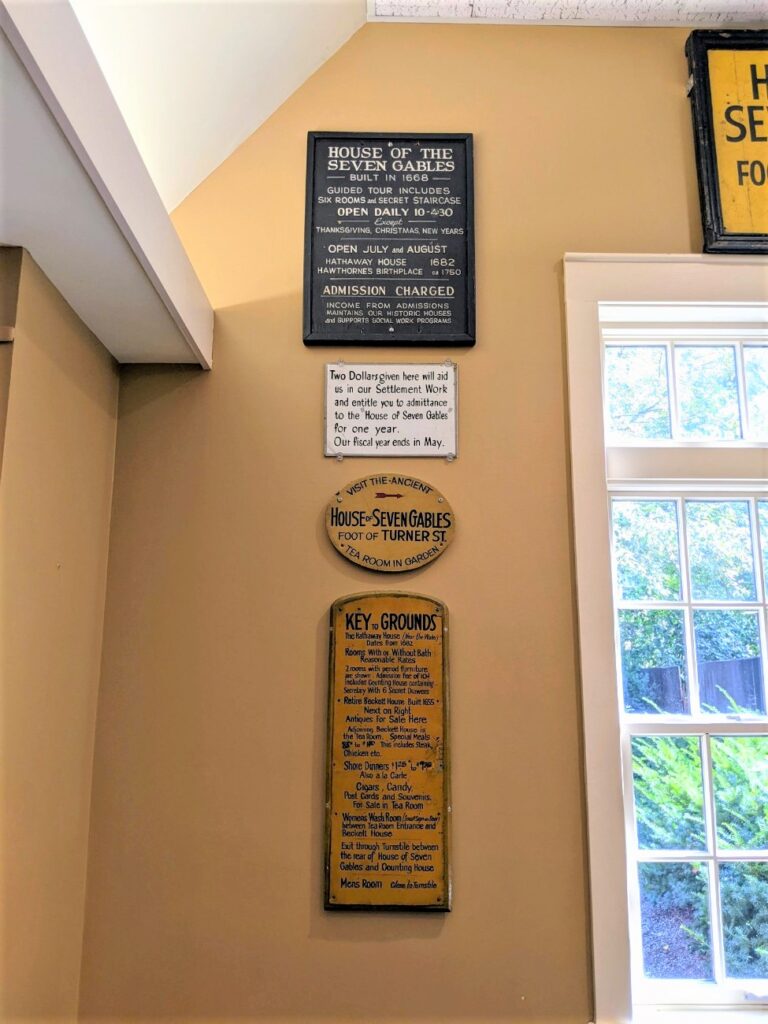
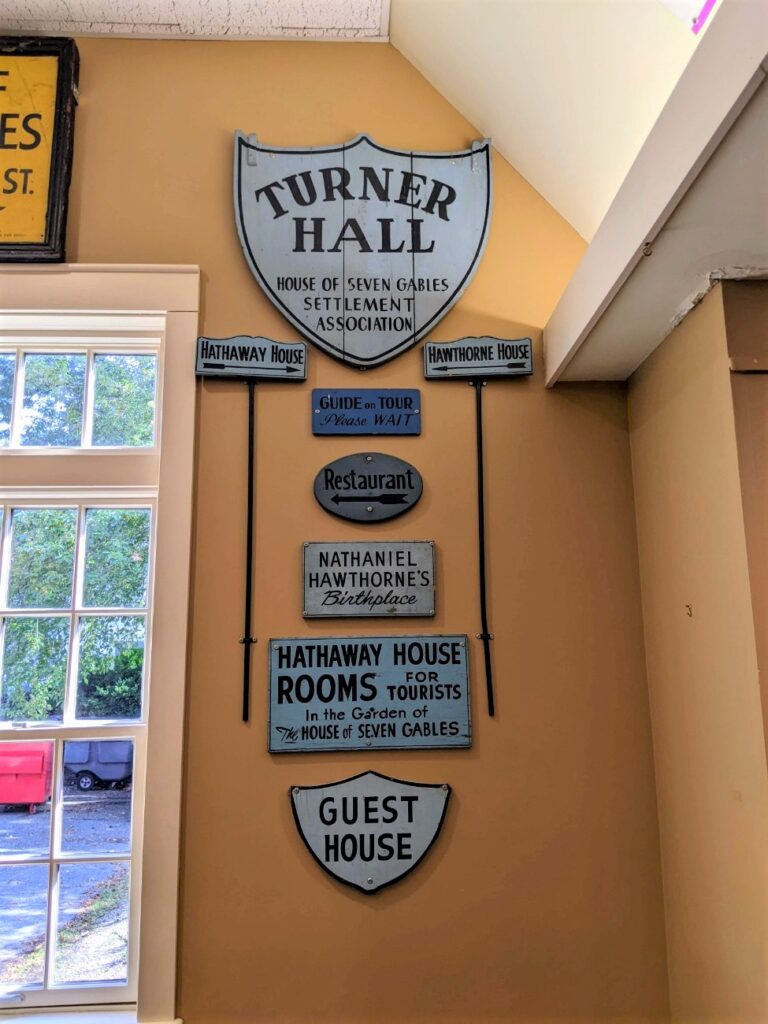
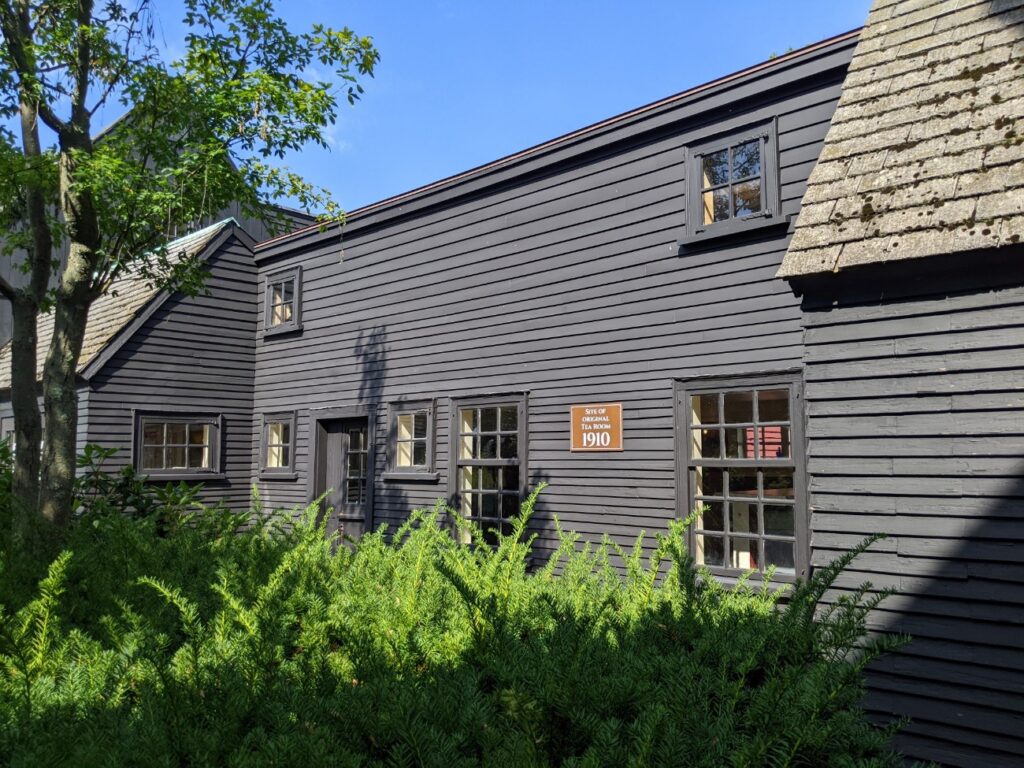
Turner-Ingersoll Mansion/The House of the Seven Gables
Tickets are timed entry, so if you have a little time before your tour, take a walk around the gardens and the house. Note that the space inside the grounds makes it a little hard to get a picture of the whole house at once. And actually, one of the best views (and the one that’s on many book covers) is outside the grounds, standing on Turner Street. The only problem with that vantage is that there are almost always cars parked along the curb.
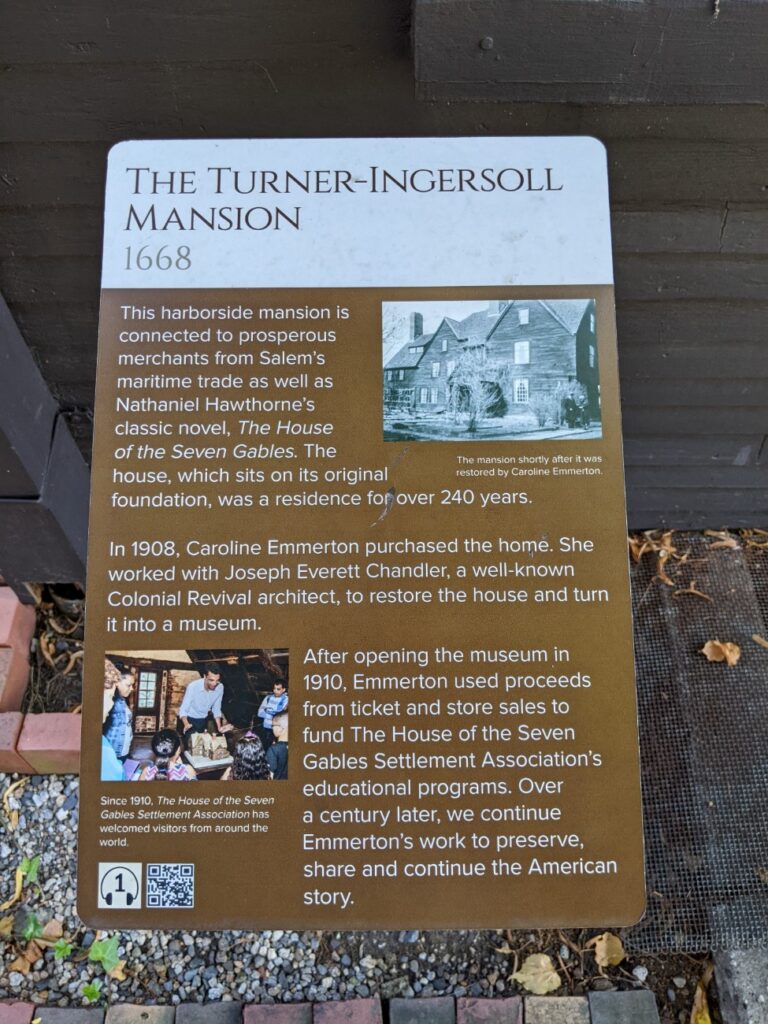
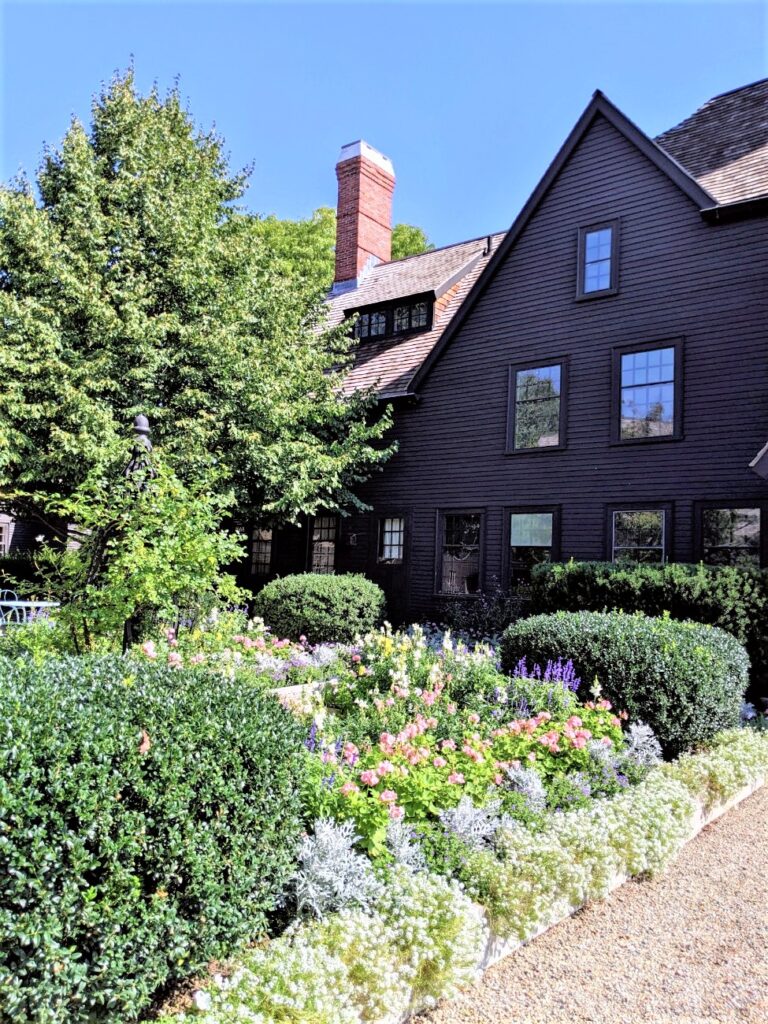
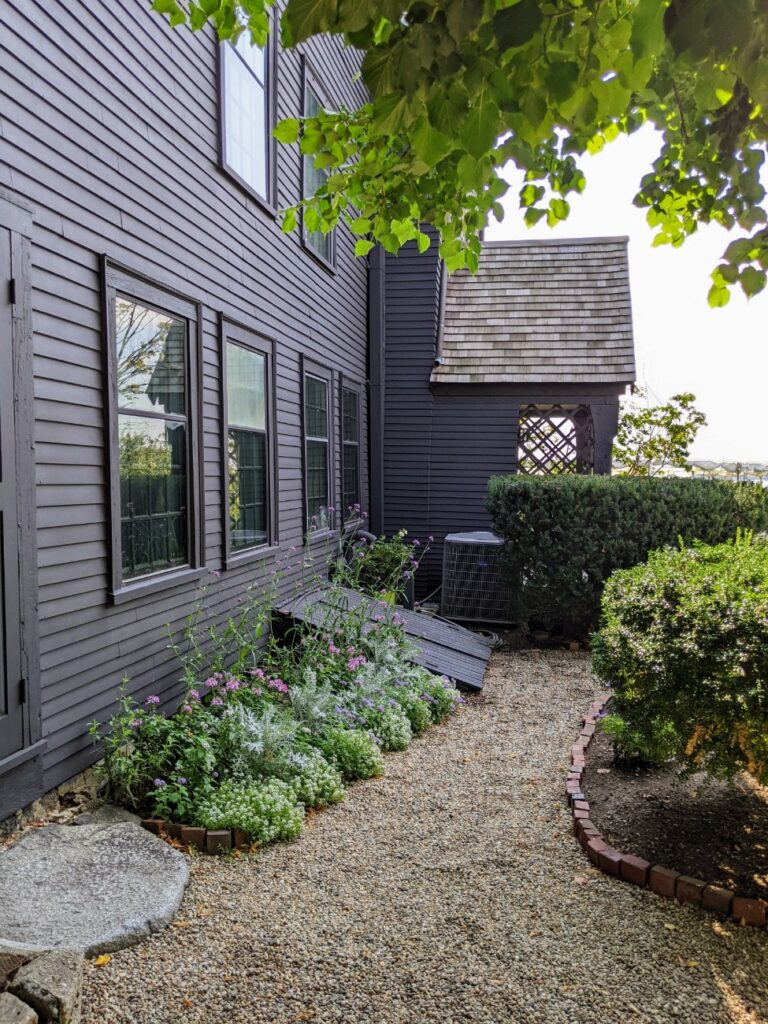
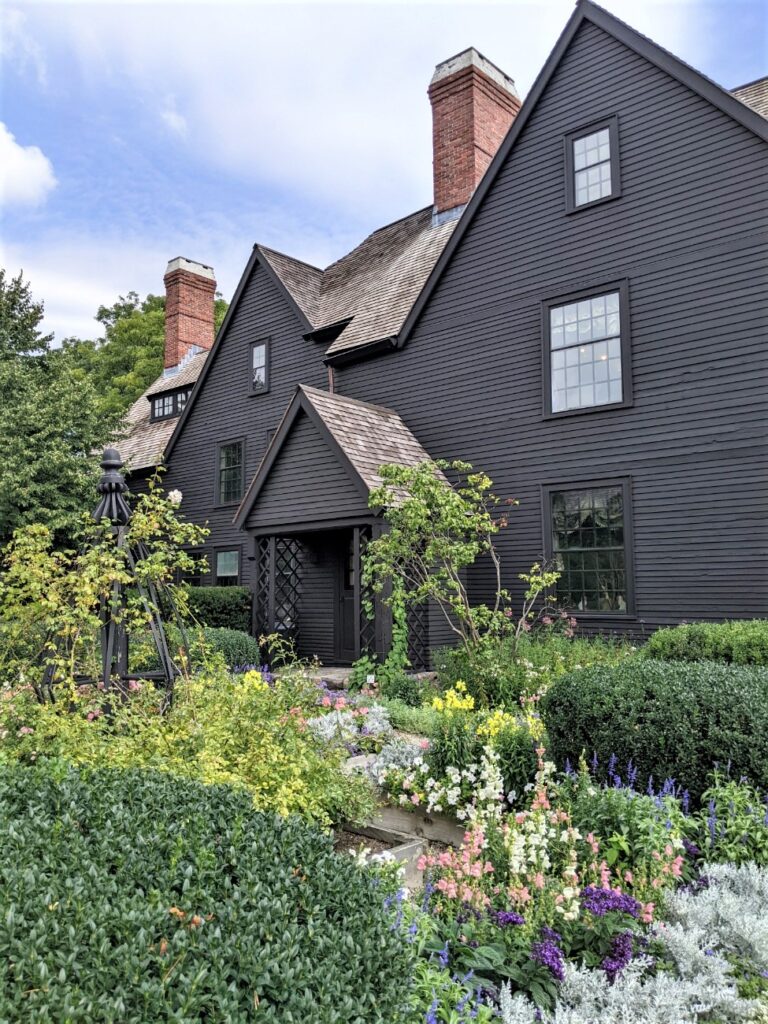
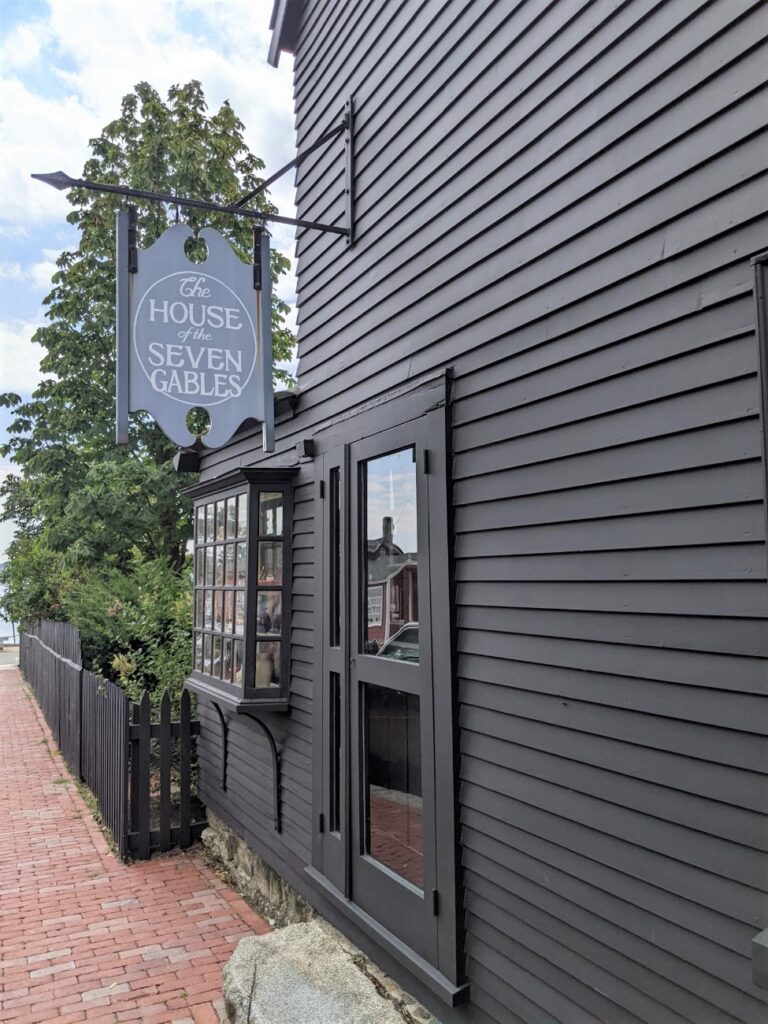
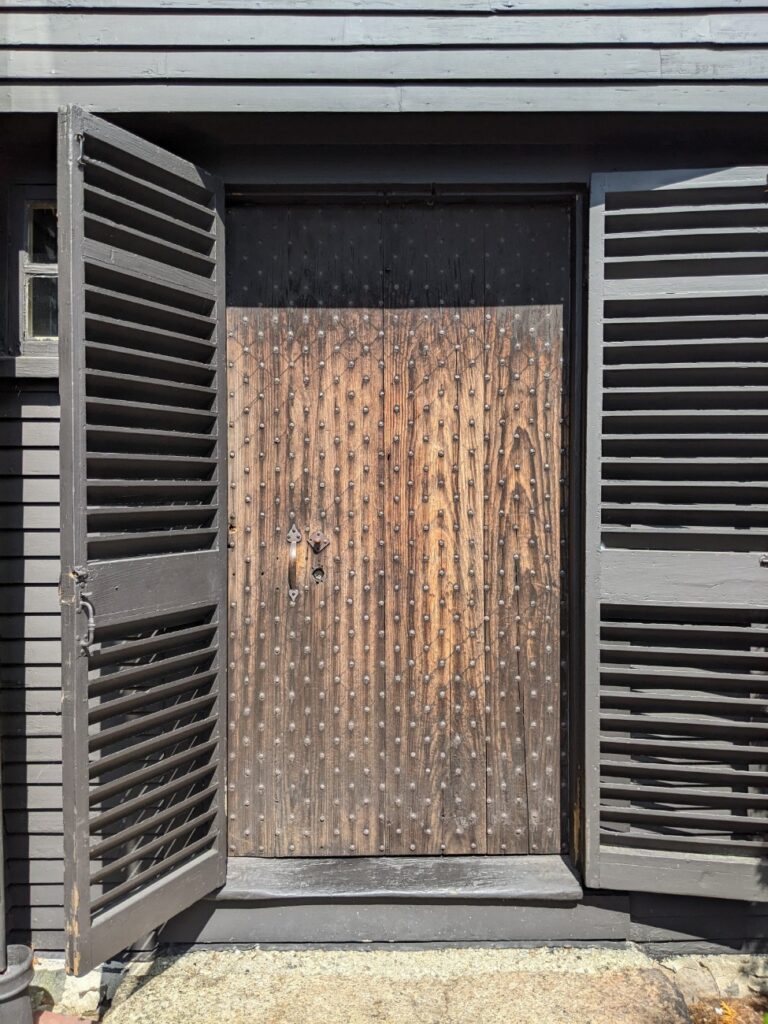
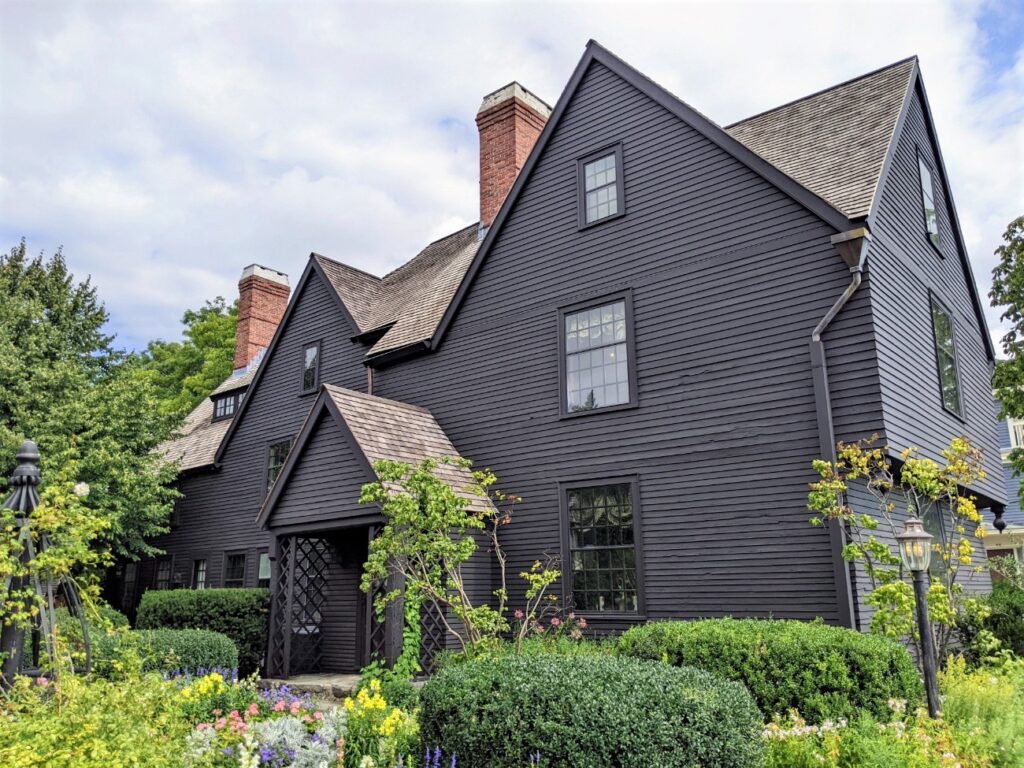
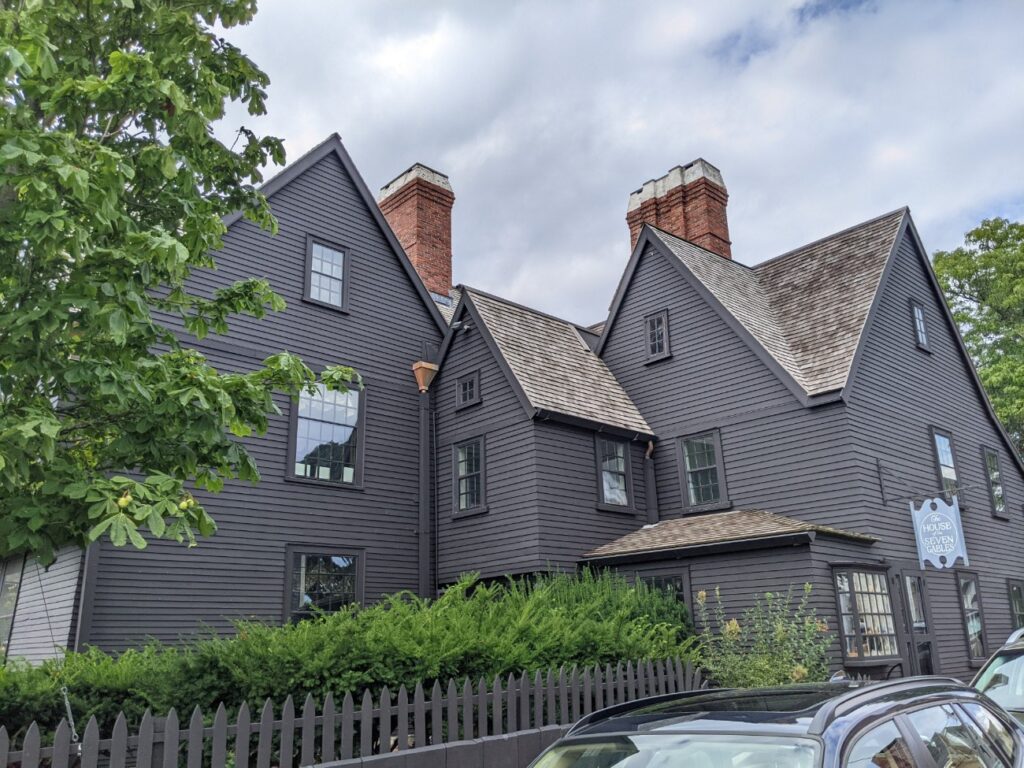
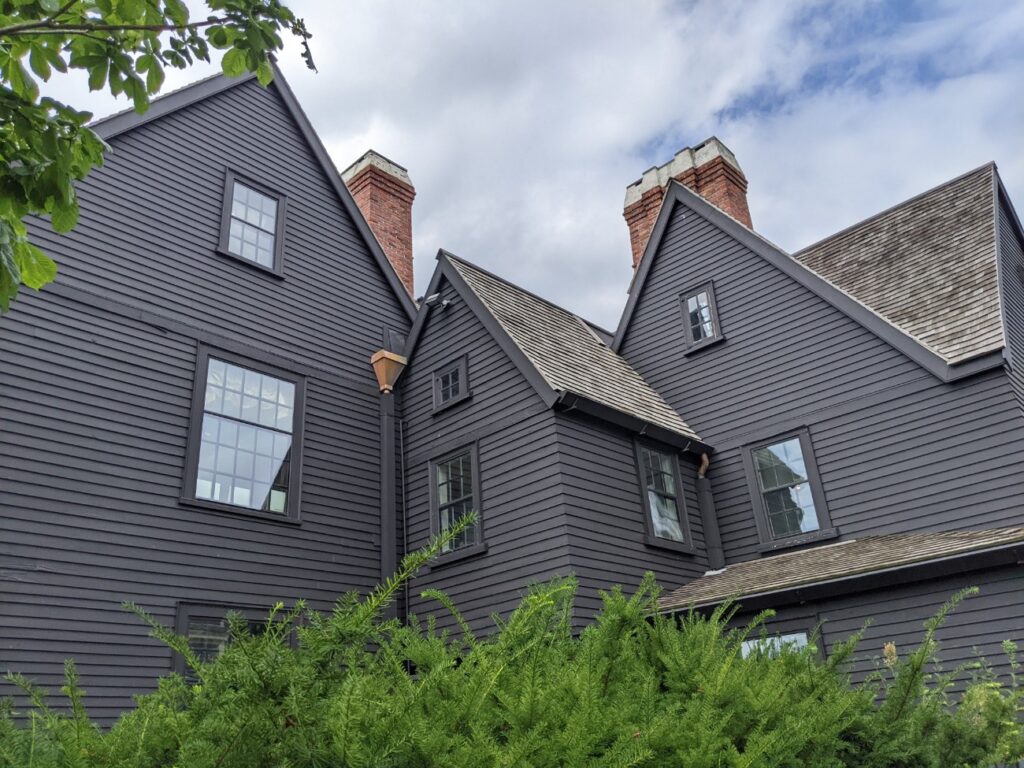
Inside, a tour guide will take you through the history and rooms of the mansion. You start in older rooms with low ceilings, and through richly decorated public and private rooms of a rich captain and trader. You also get to climb the fun secret staircase to the original attic, where you see the gables join together. There are other secret compartments, like hidden doors and liquor cabinets. And overall, the tour is a lot of fun and informative about the history of Salem.
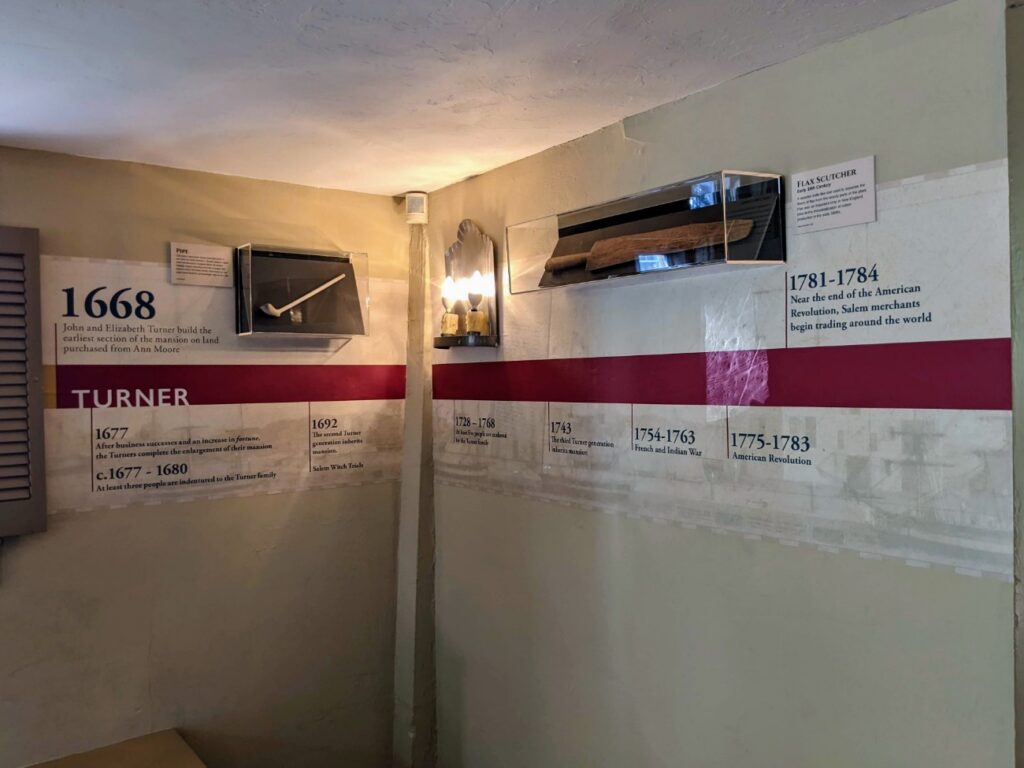
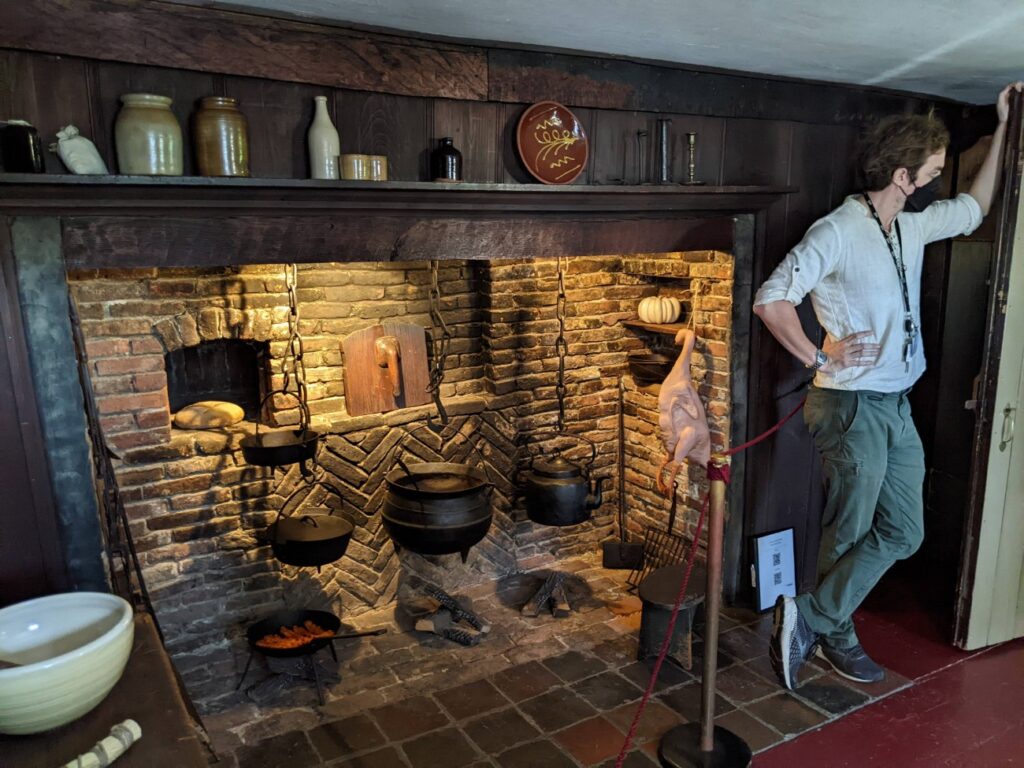
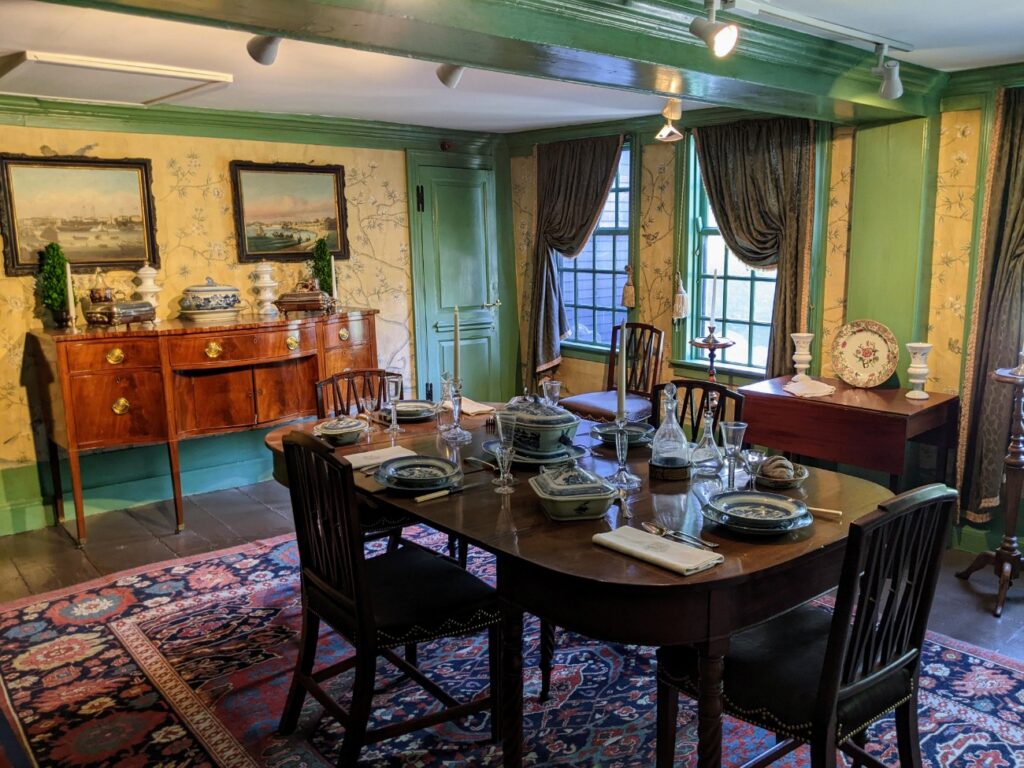
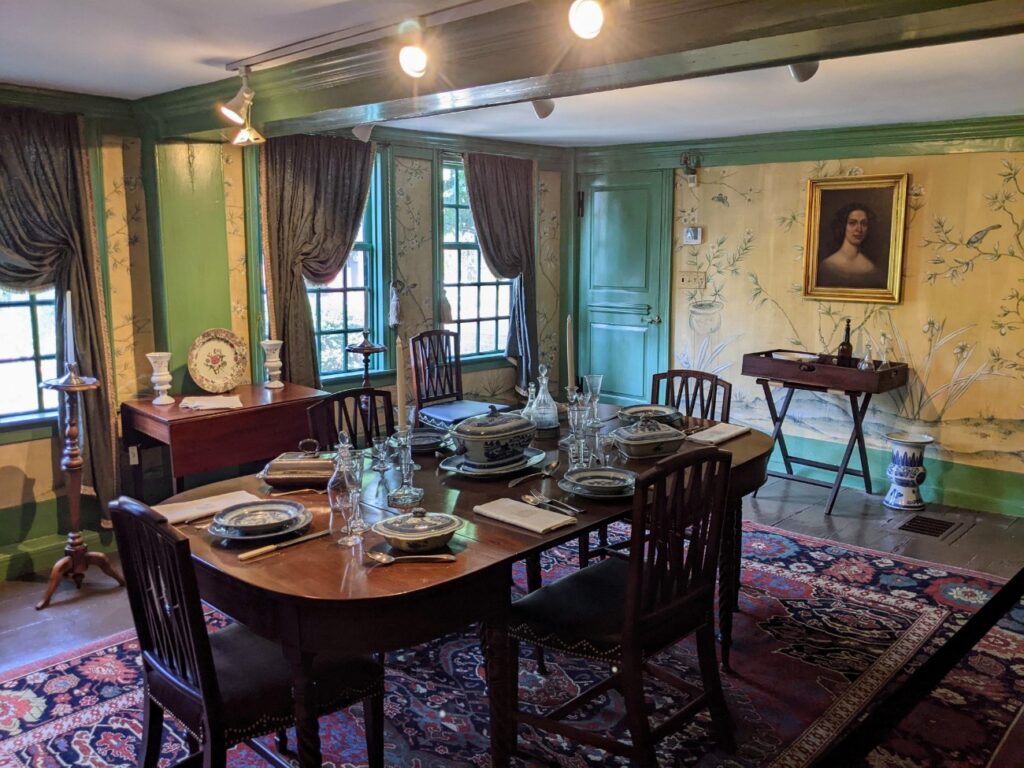
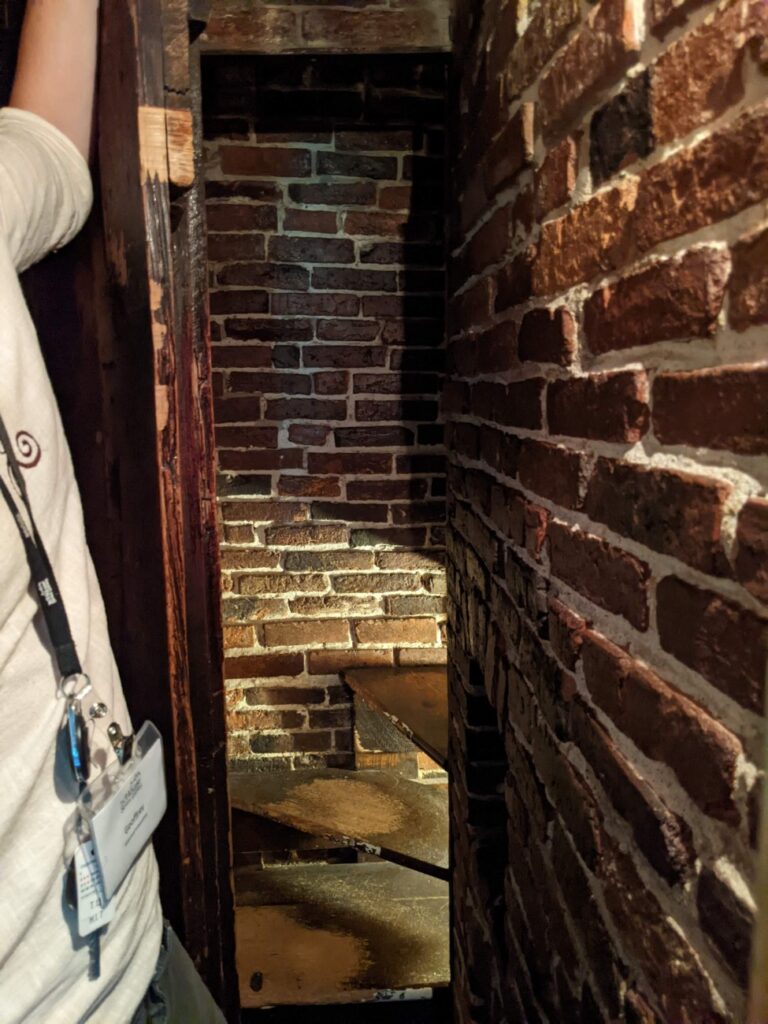
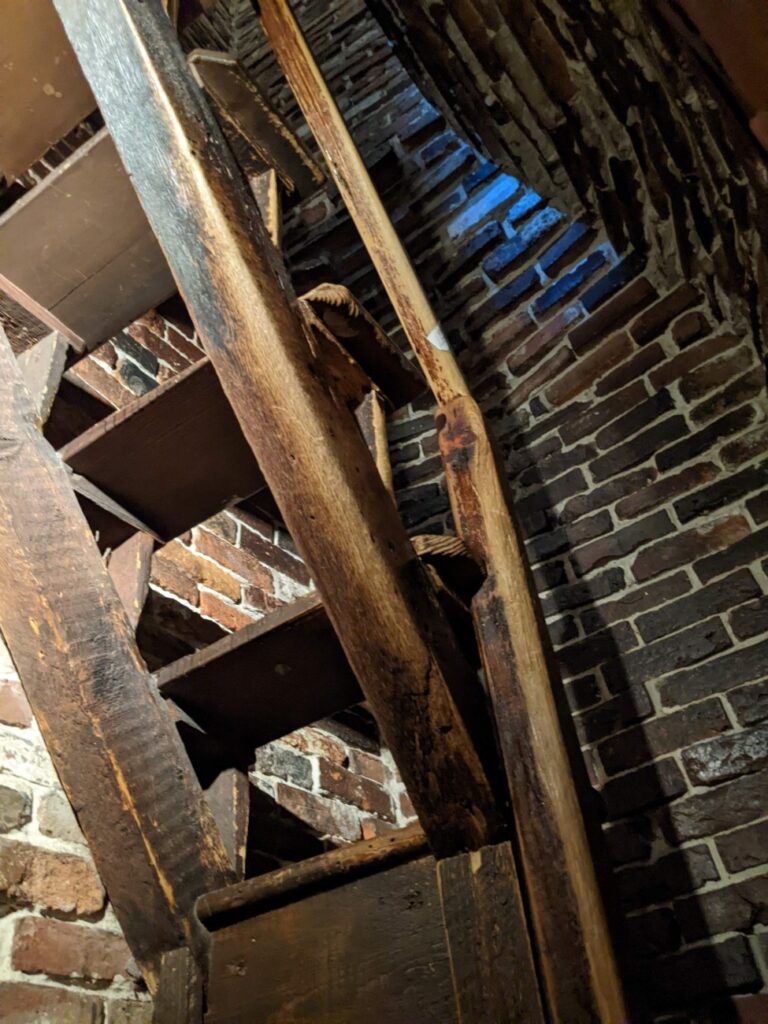
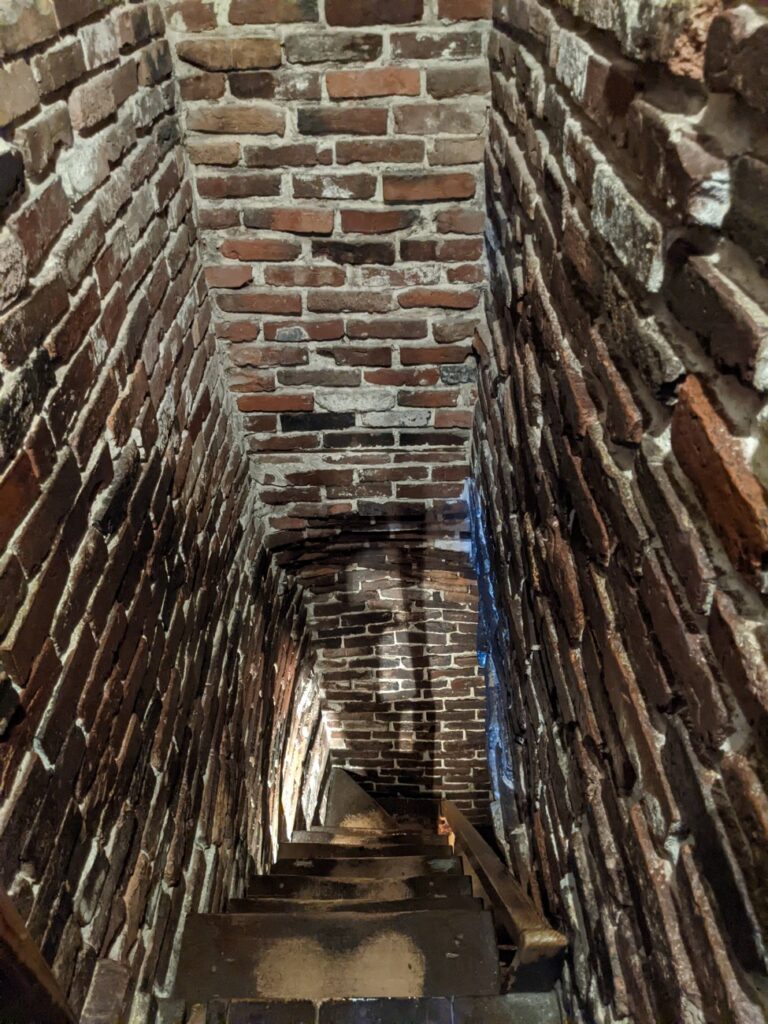
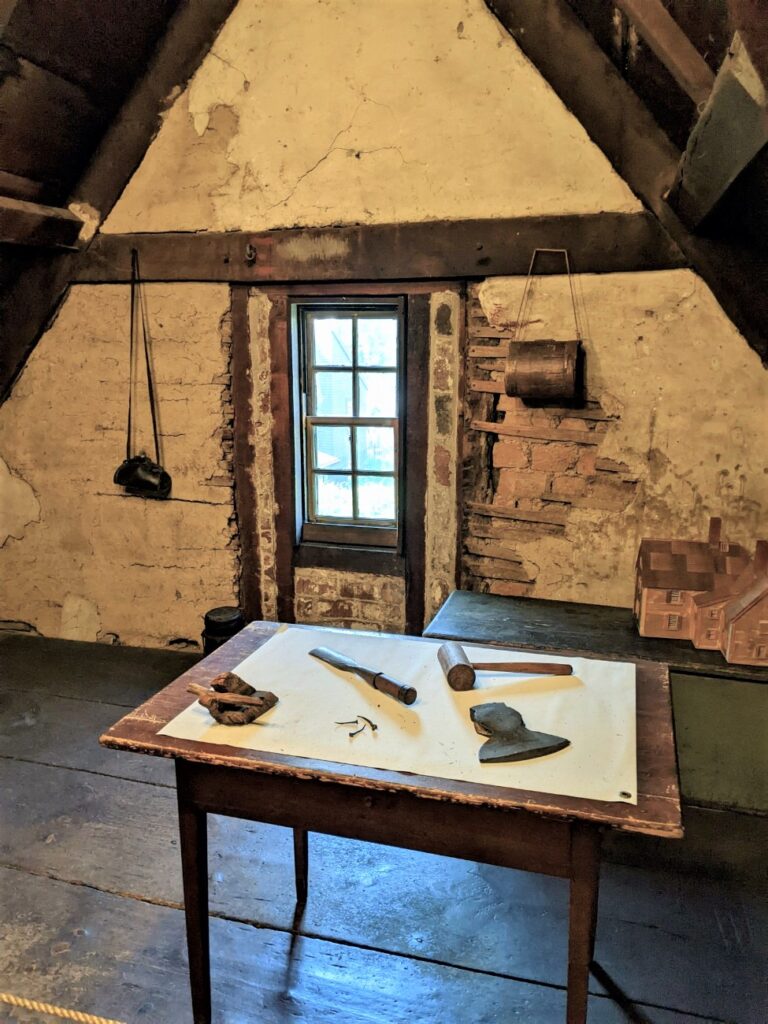
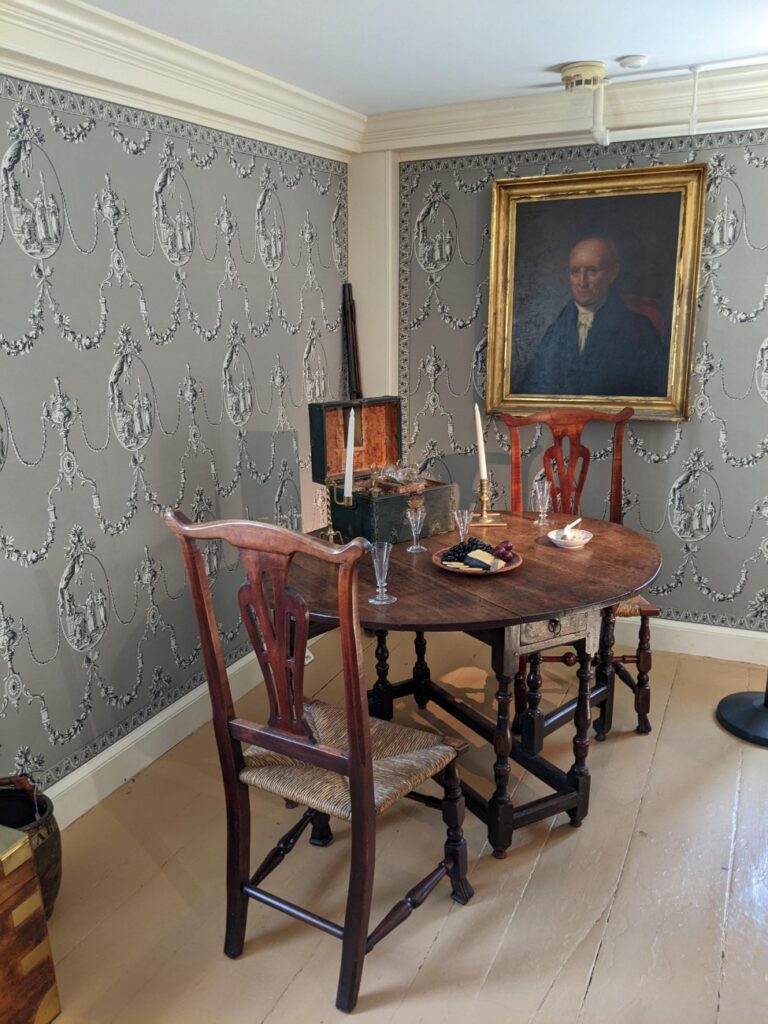
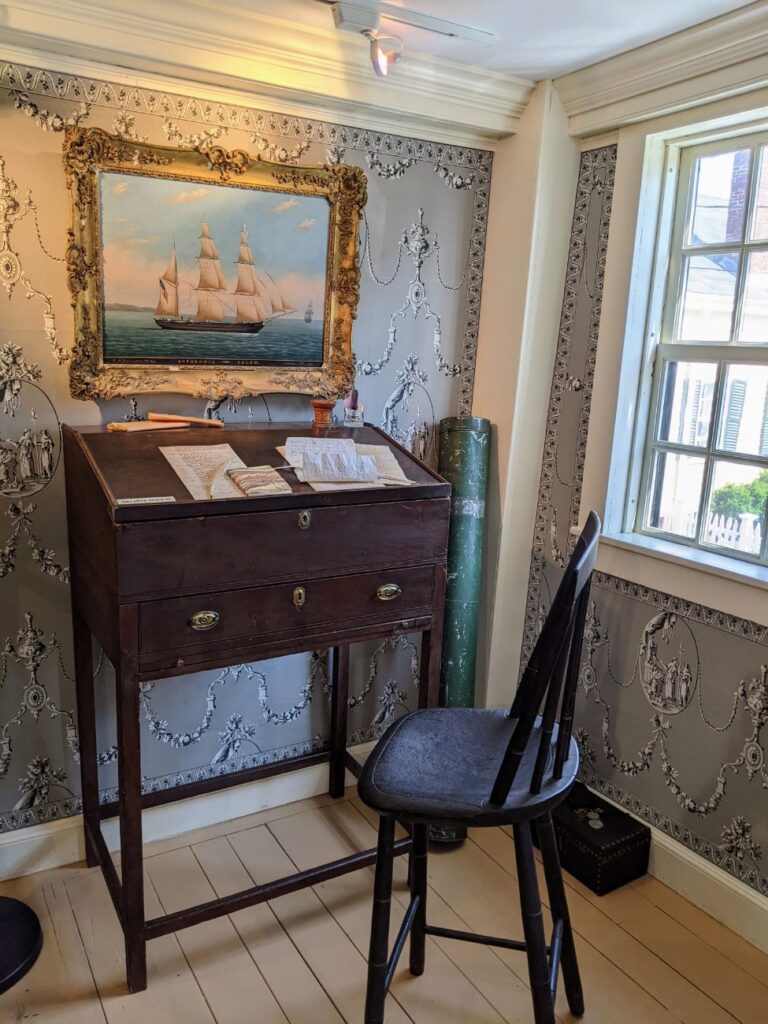
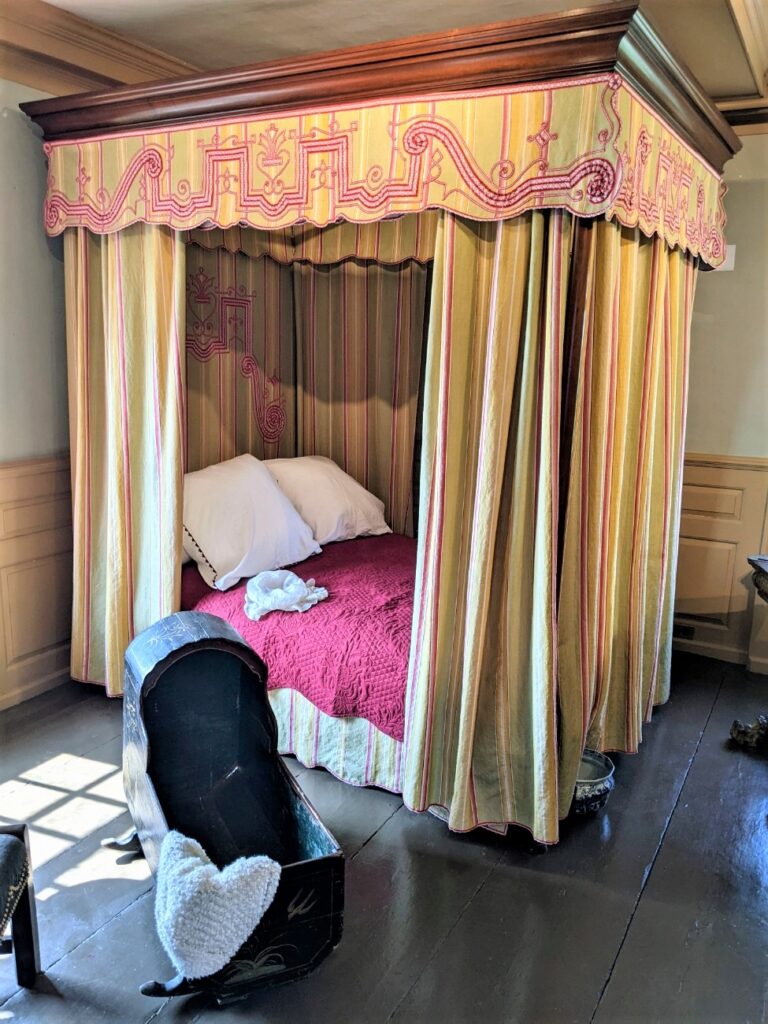
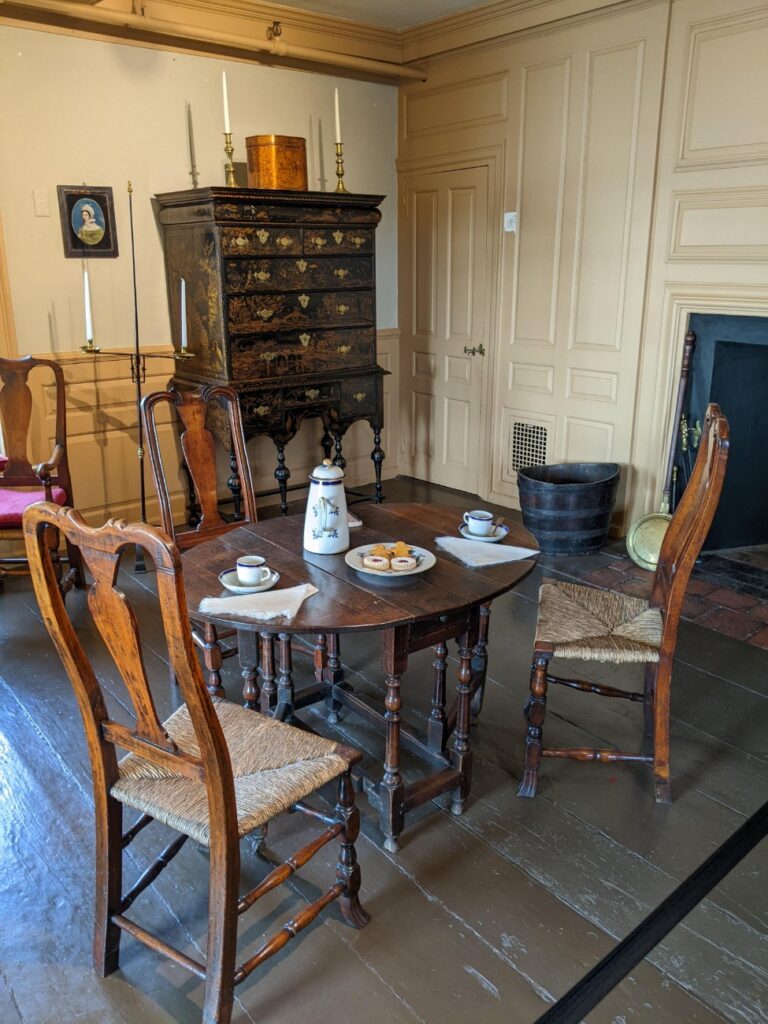
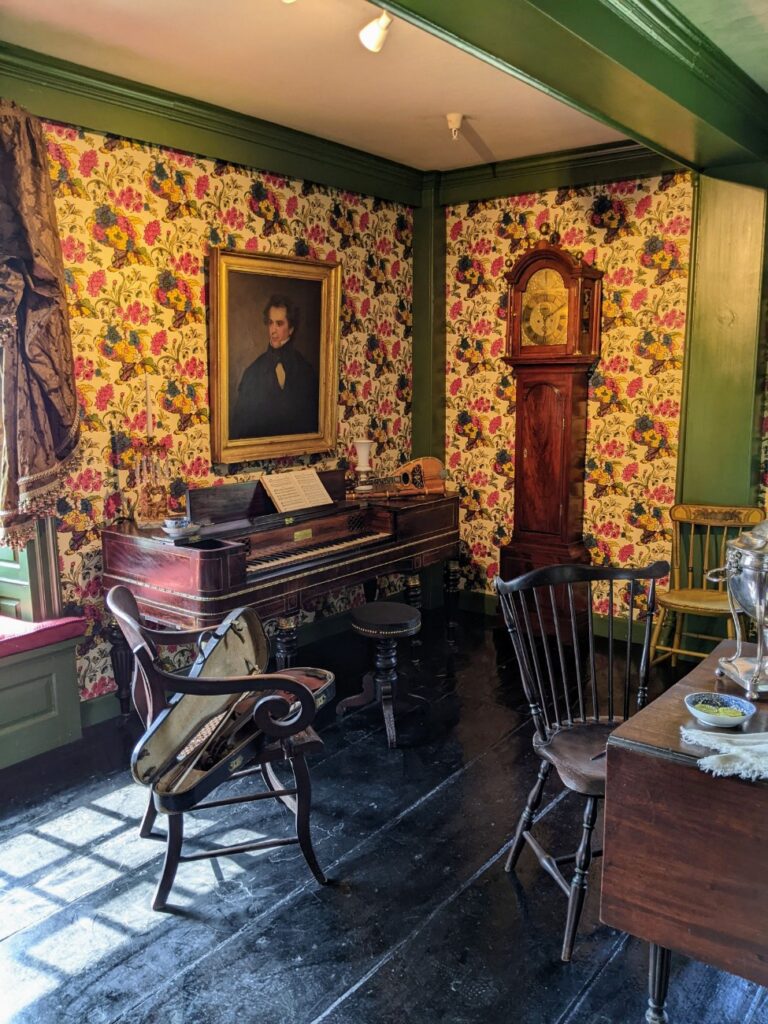
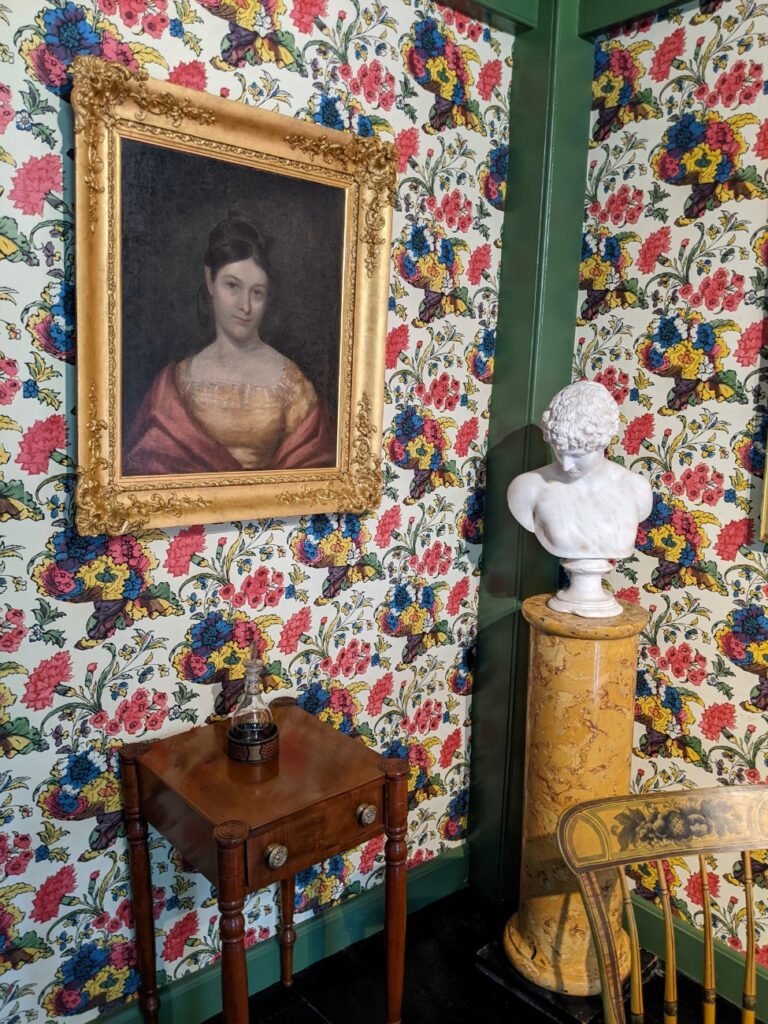
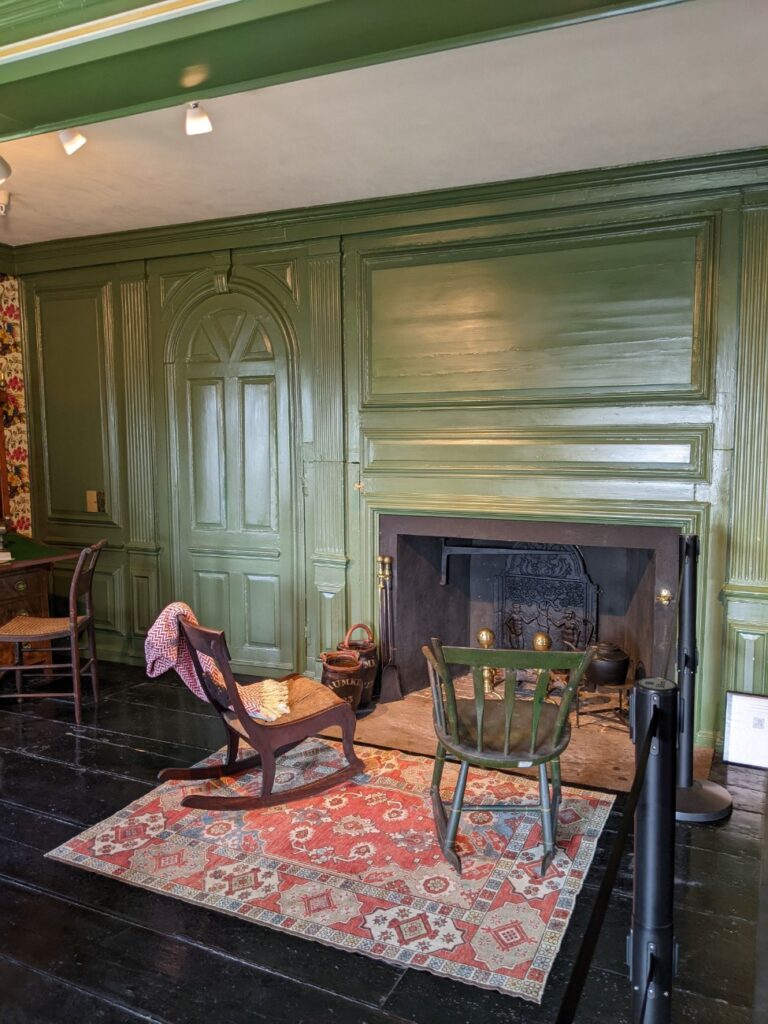
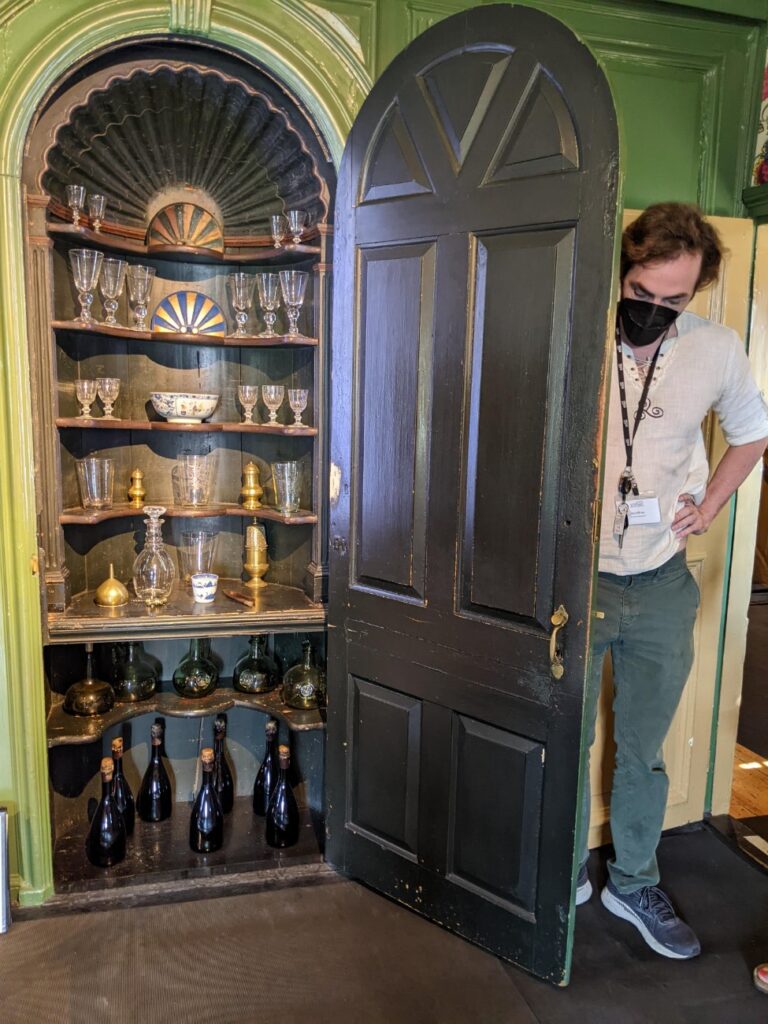
Nathaniel Hawthorne Birthplace
Once you’ve made it through the House of the Seven Gables, the same guide will open up Nathaniel Hawthorne’s birthplace to tour. The most interesting things here are upstairs with the bed he was born in and a few personal artifacts.
The house itself was built around 1750 and moved to the site in 1958. There’s a fun picture in the timeline room of the Turner-Ingersoll Mansion of the house being moved down the street.
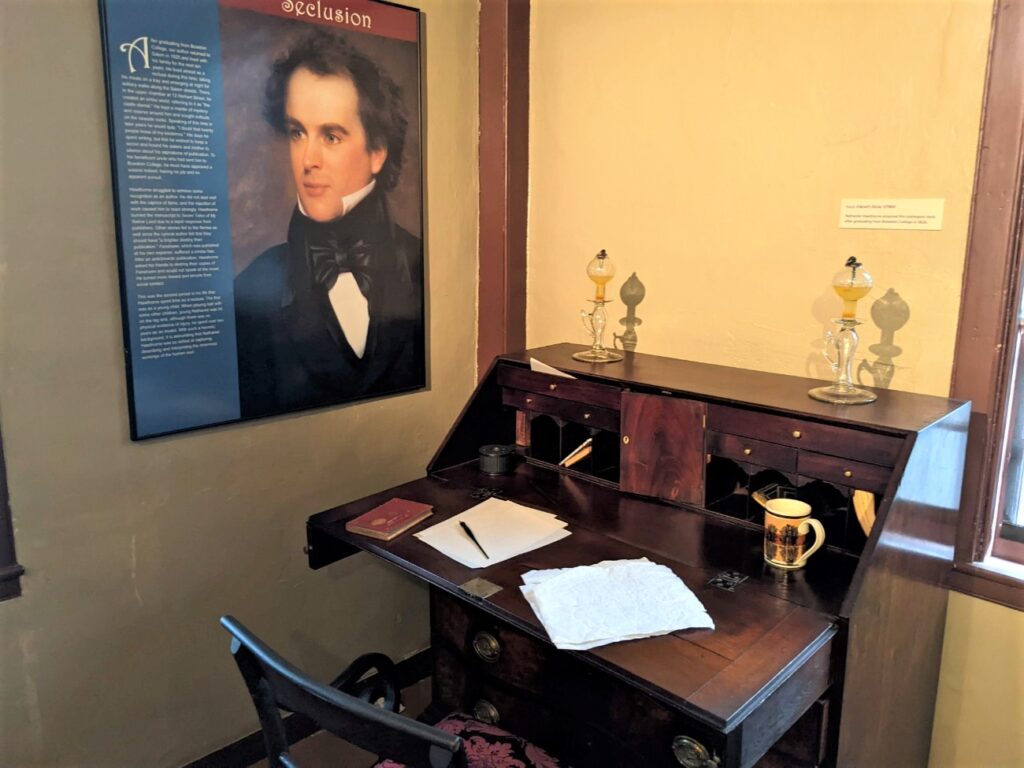
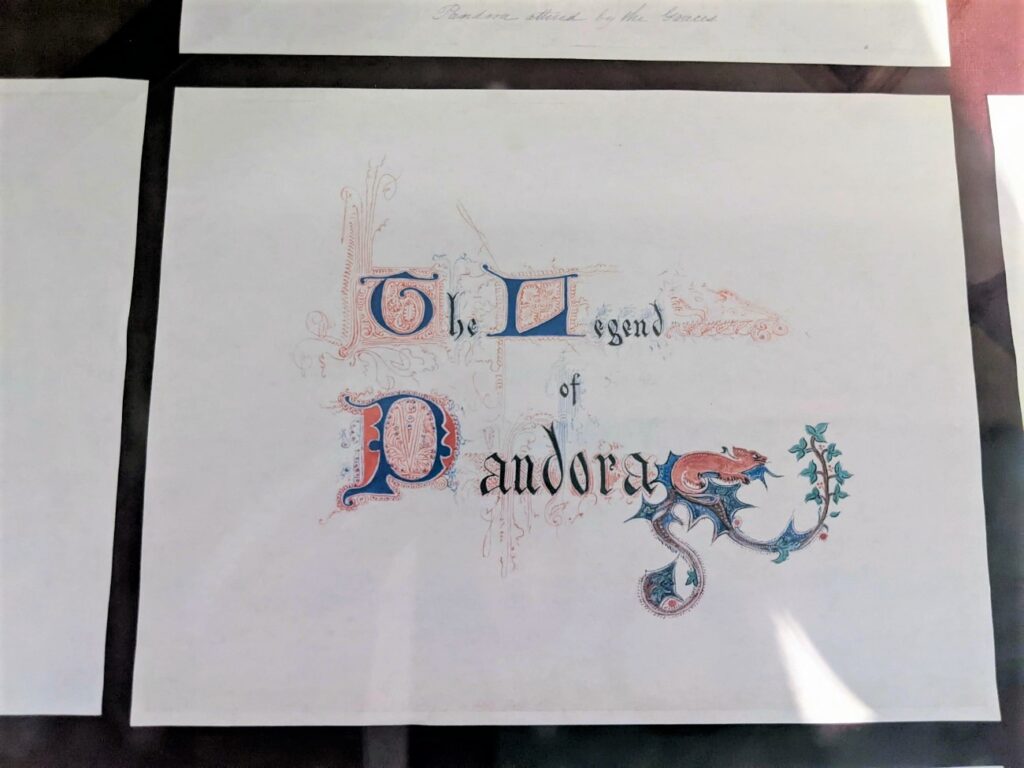
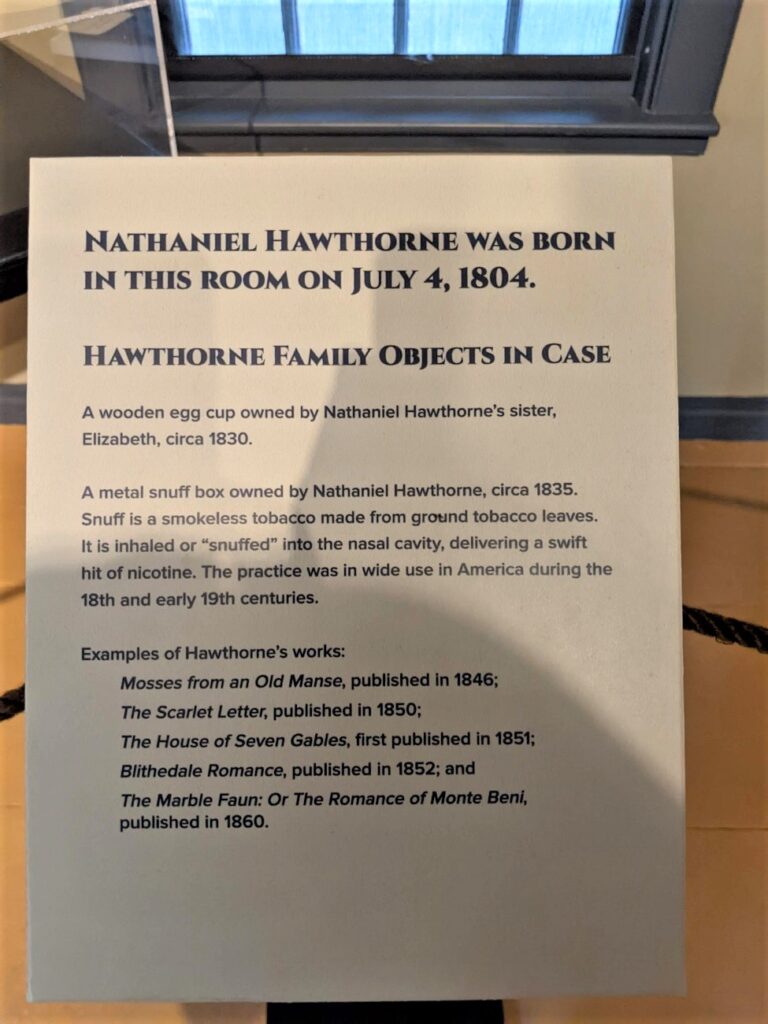
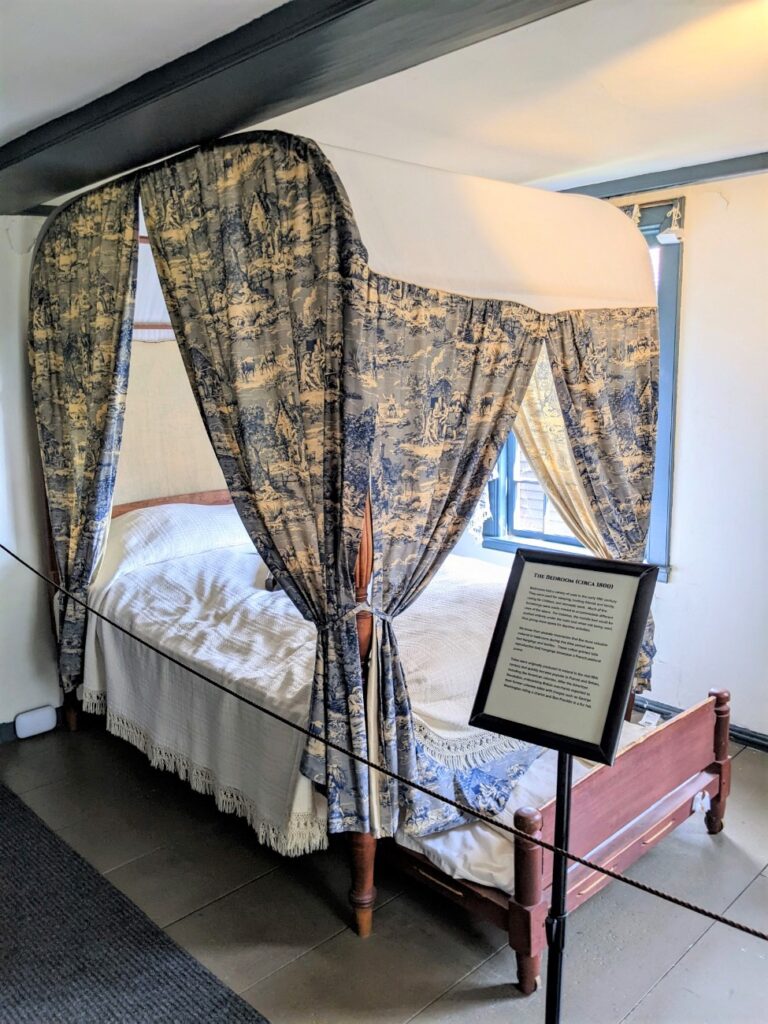
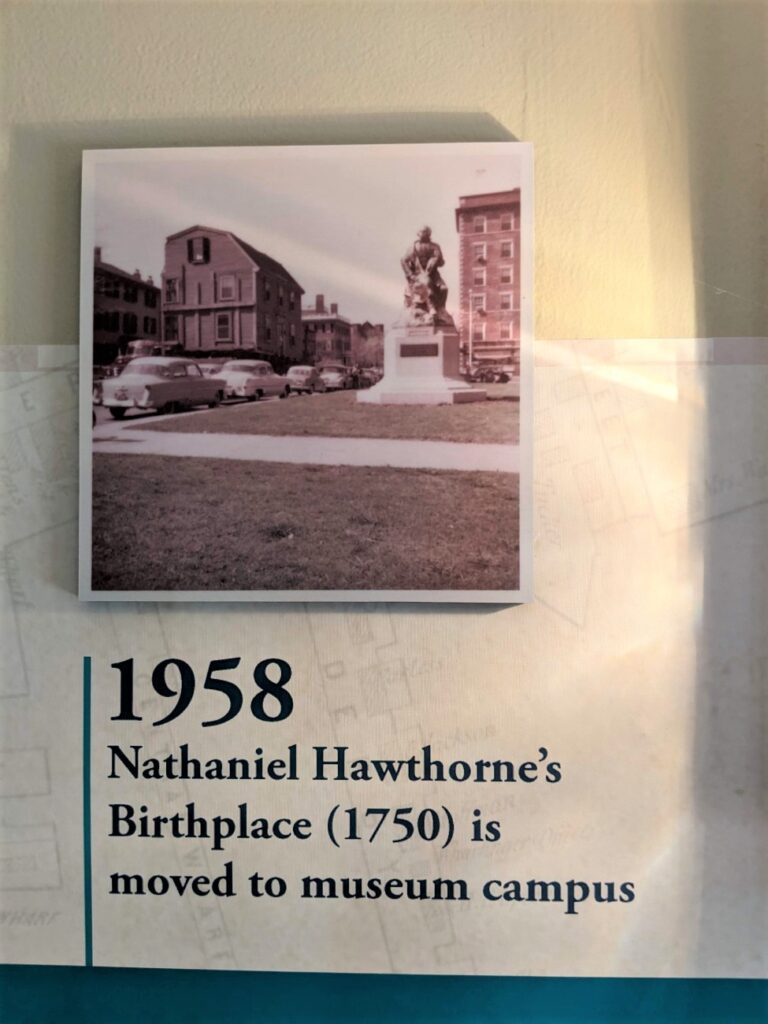
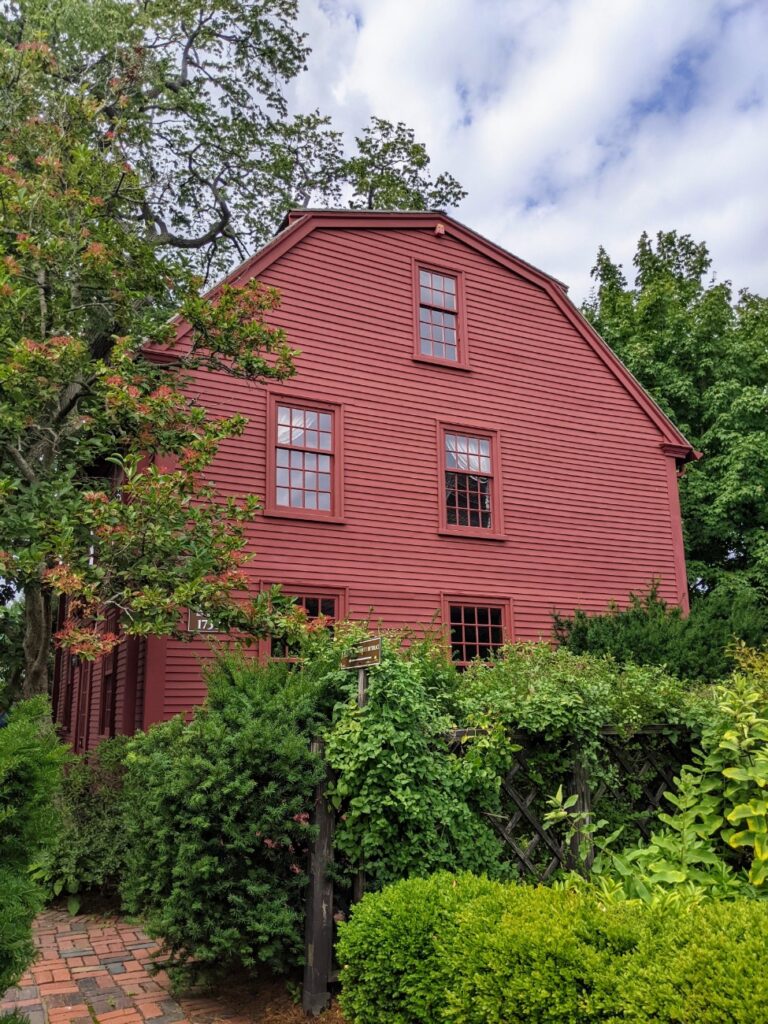
Hooper-Hathaway House
The Hooper-Hathaway House was built in 1682. It was moved from Washington Street in Salem to the museum grounds in 1911. I don’t recall being able to go inside, so I wonder if it’s closed or only used for special events. Mr. Hooper himself was a cordwainer, an old term for a shoemaker.
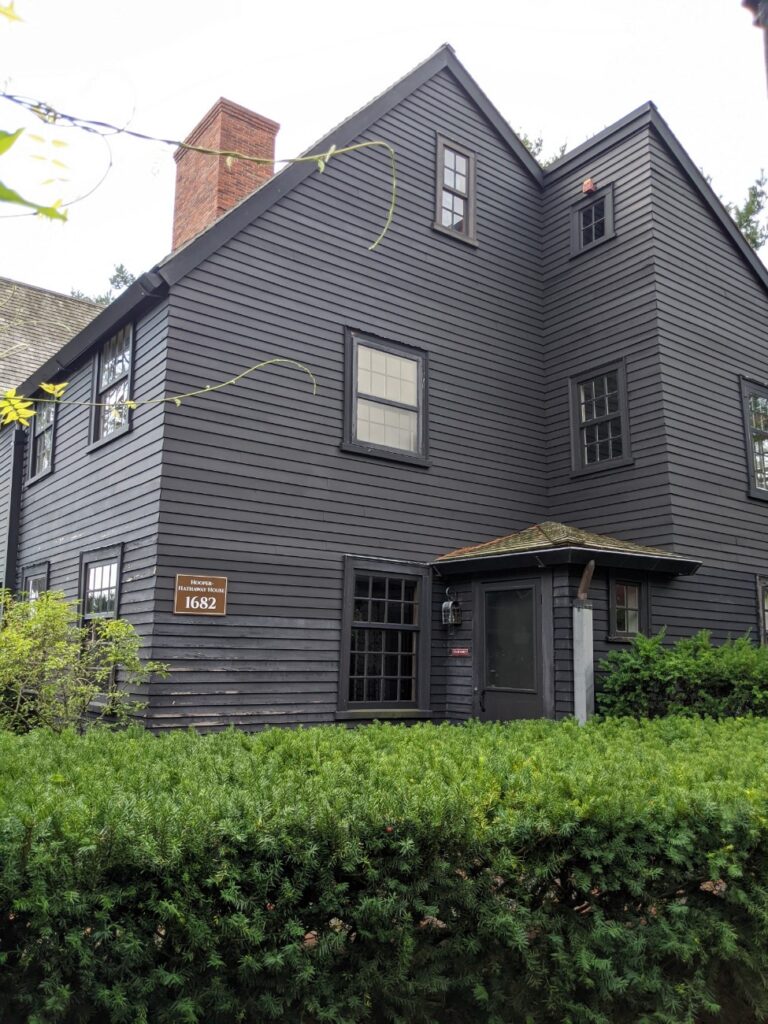
Counting House/Kid’s Cove
A small counting house from 1830 anchors an area just for kids. Inside the small house are portholes and telescopes, as if you were a sailor at sea. A little play boat is just outside, facing the bay.
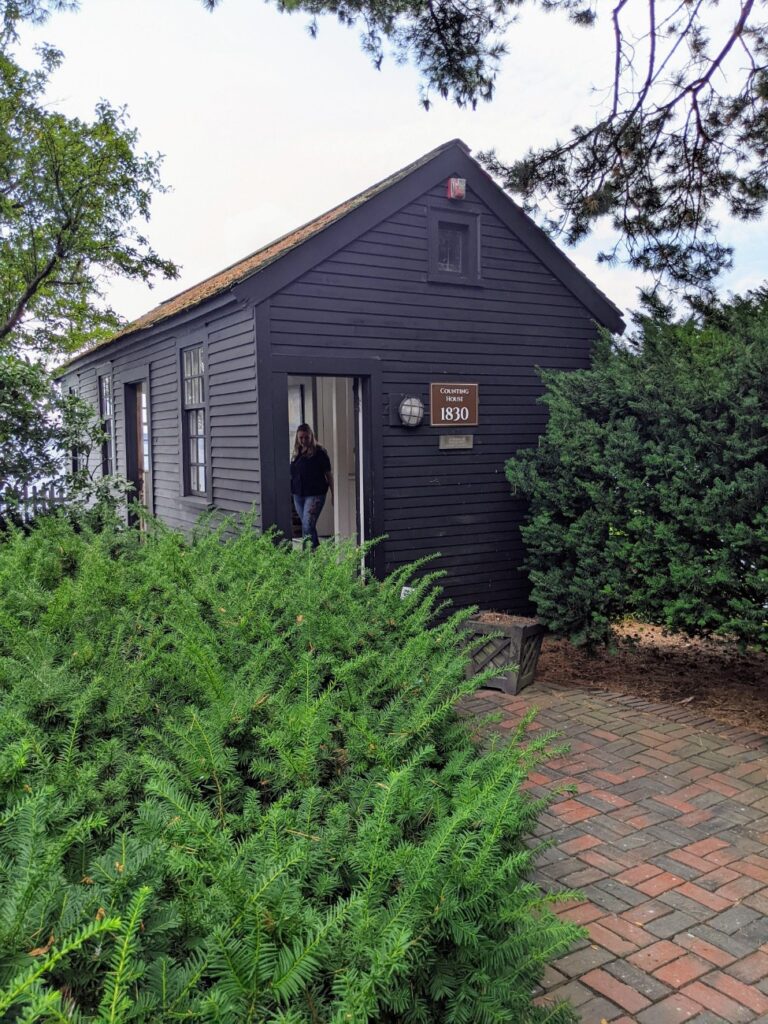
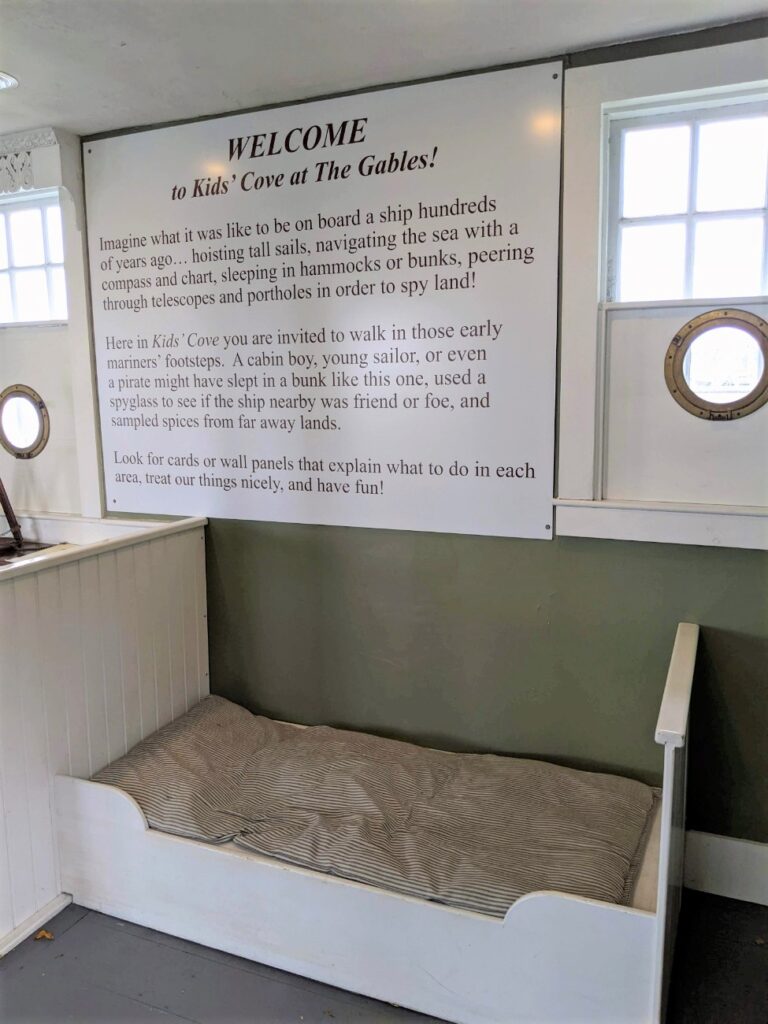
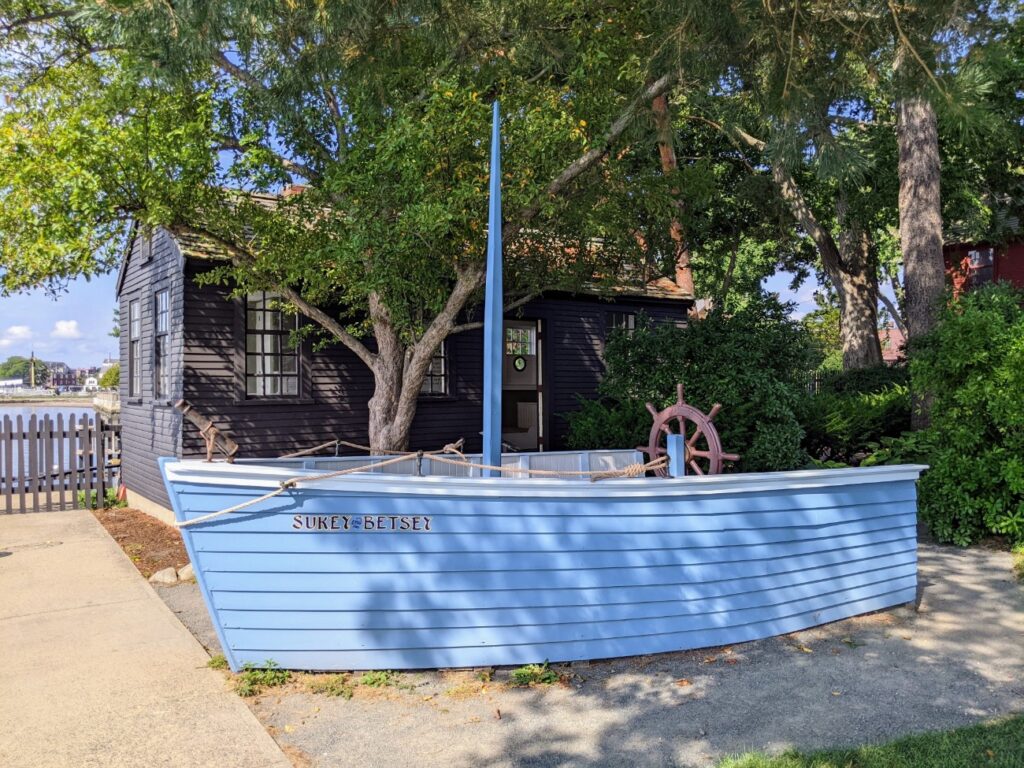
Retire Beckett House/Gift Shop
The 1655 Retire Beckett House was originally built by a family of ship makers. It was moved to the site in 1924 and now serves as the museum’s gift shop. It’s a fun shop, too, with lots of books, home items, souvenirs, and fun little gifts.
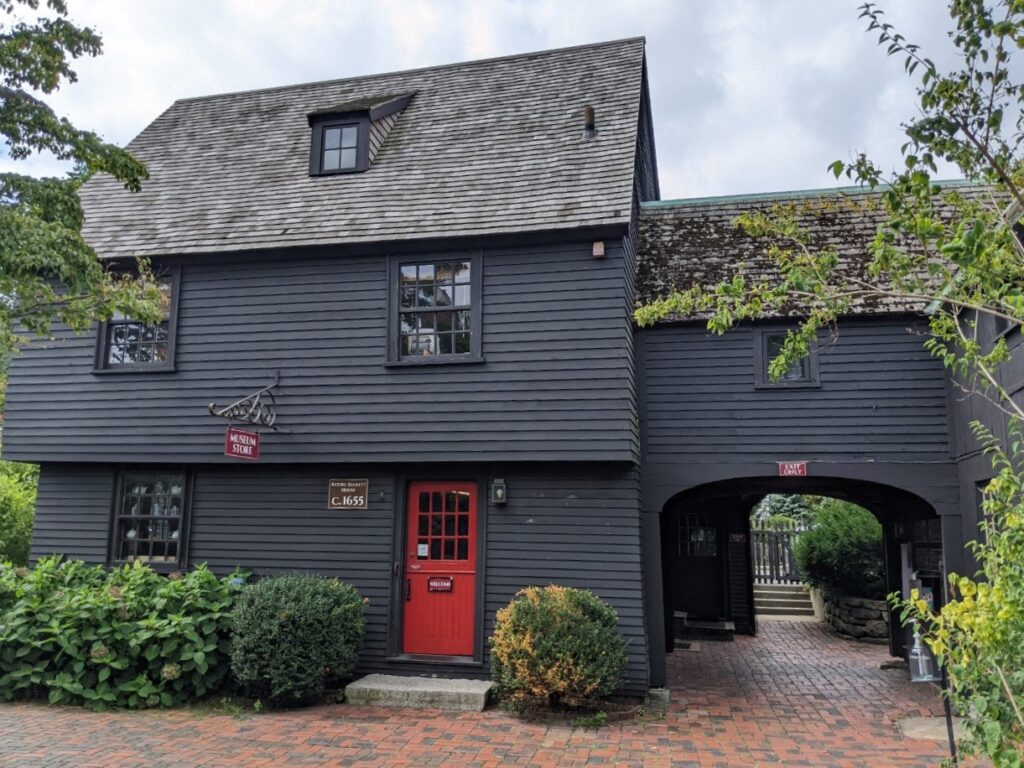
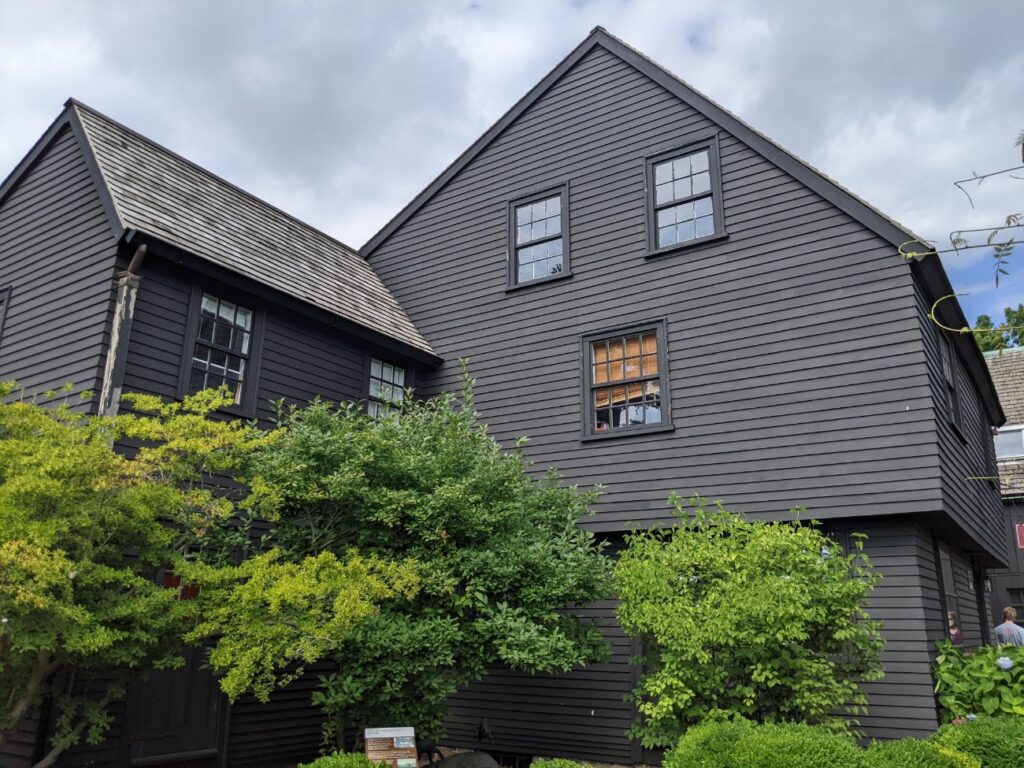
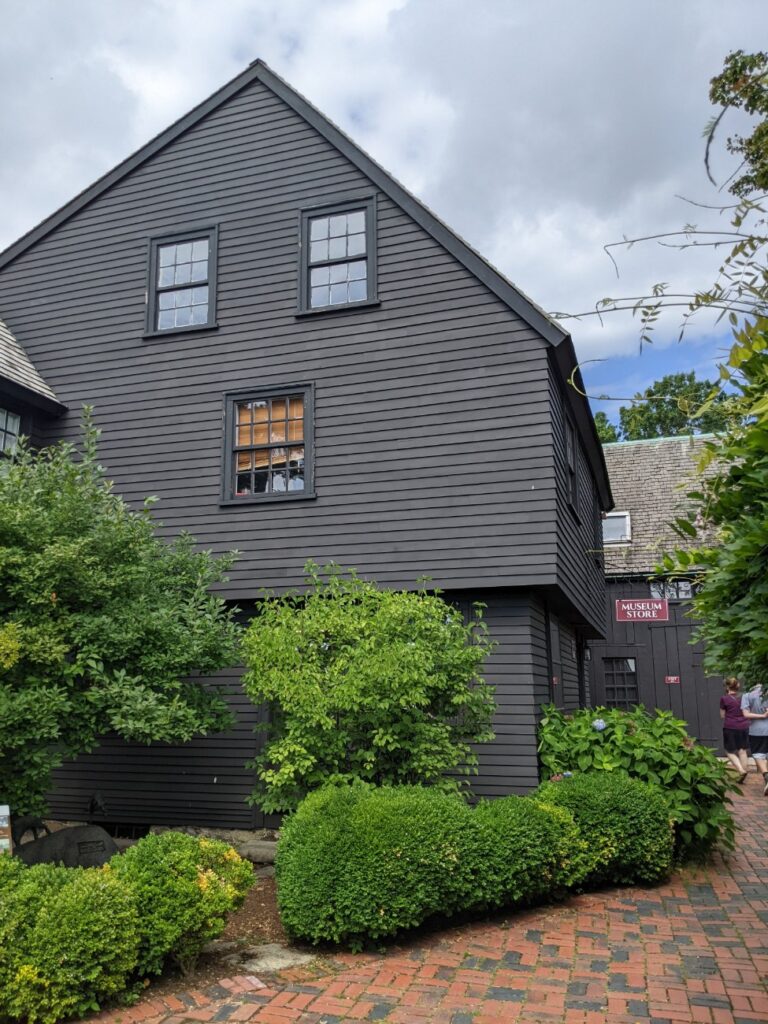
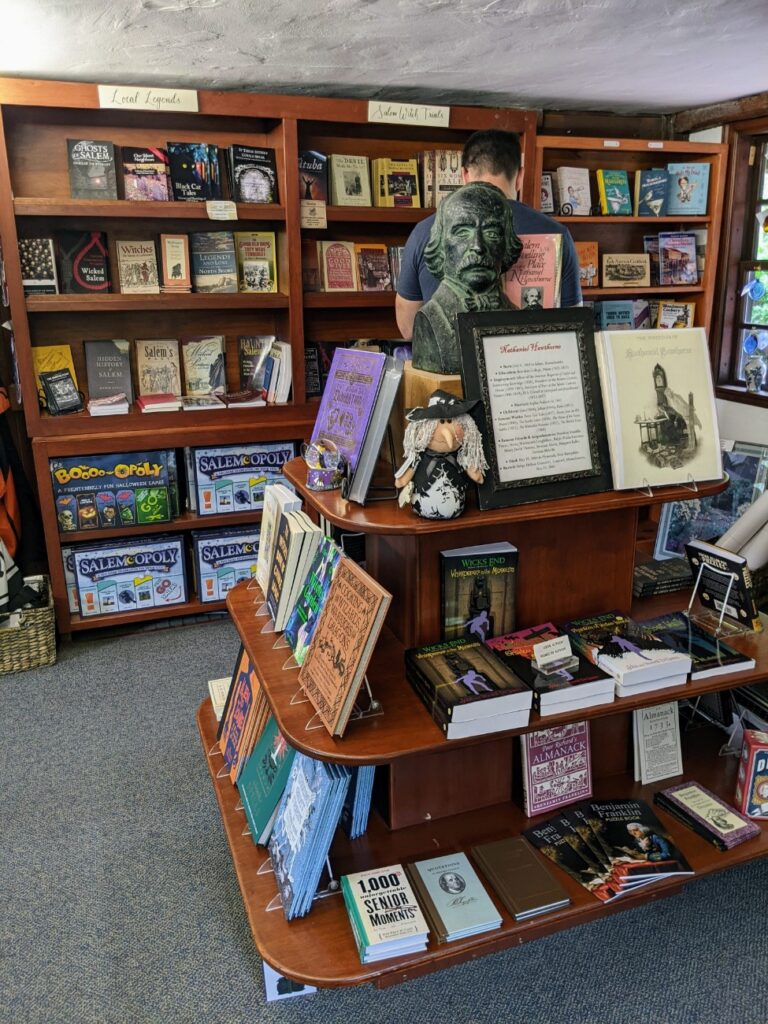
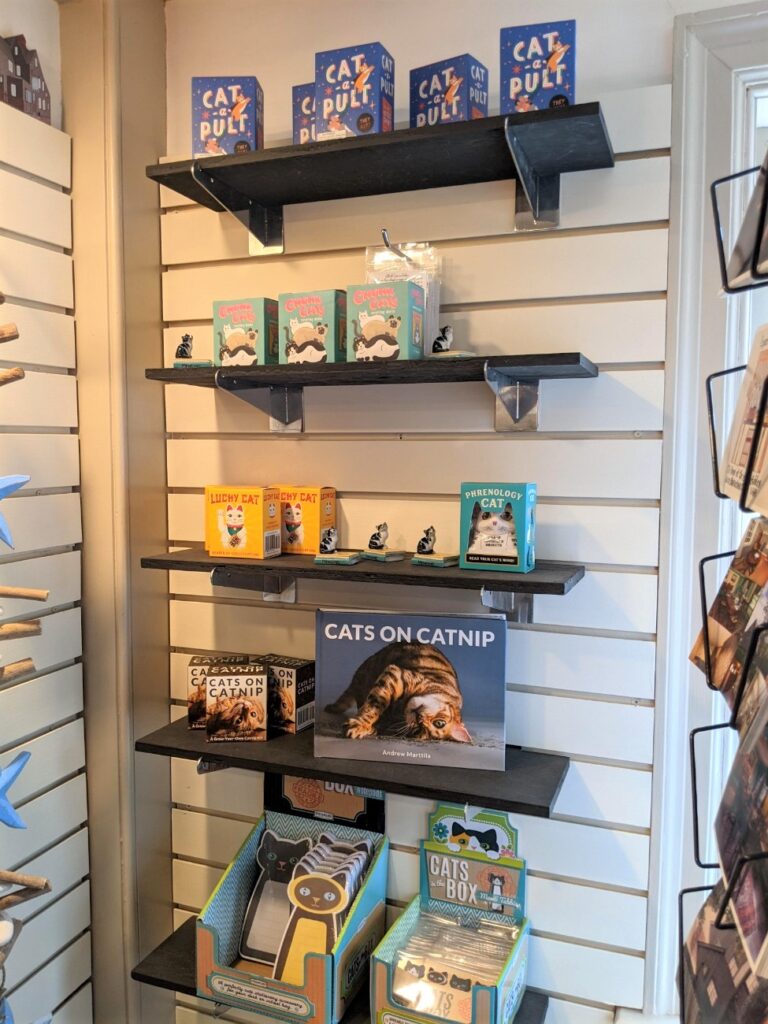
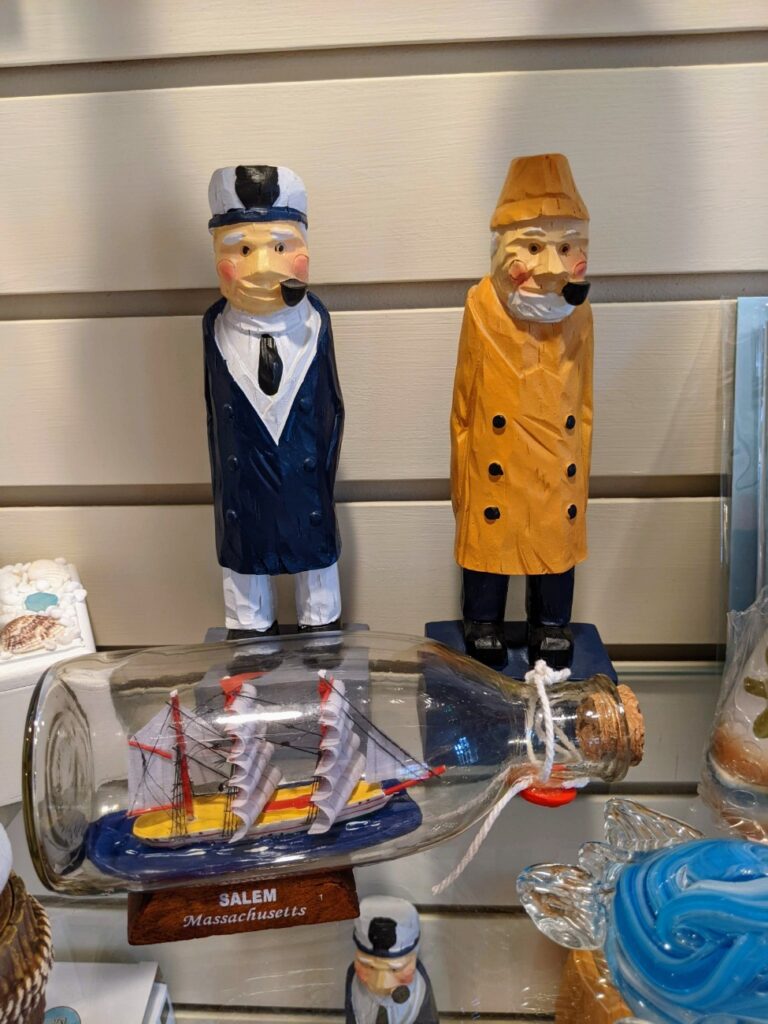
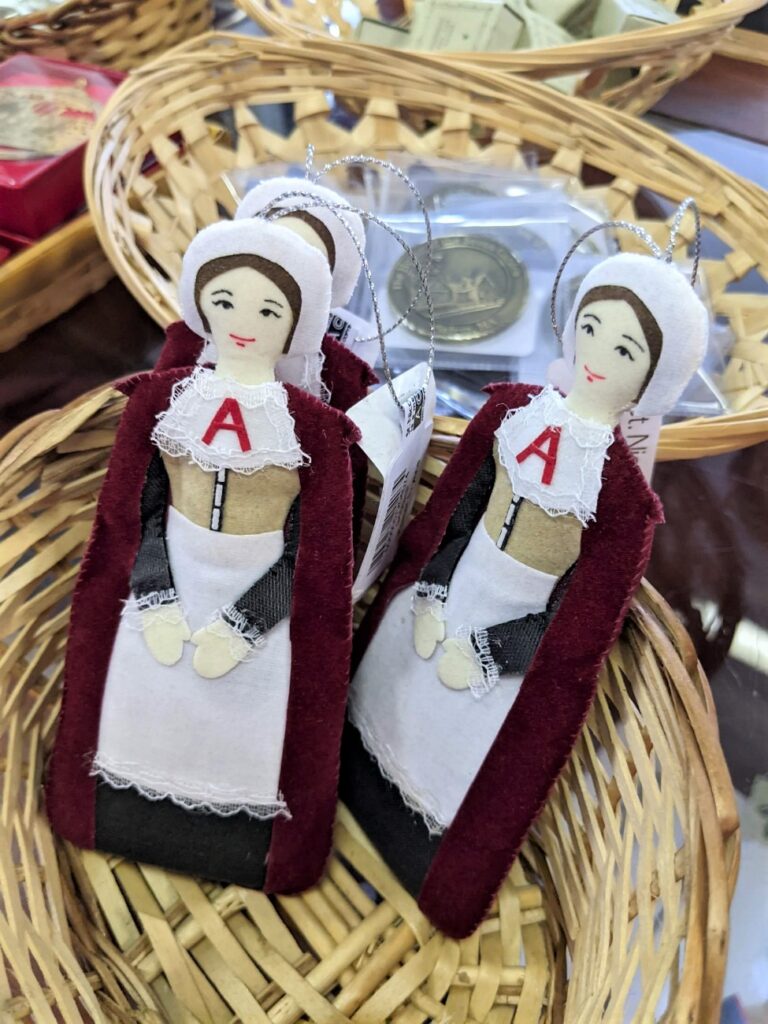
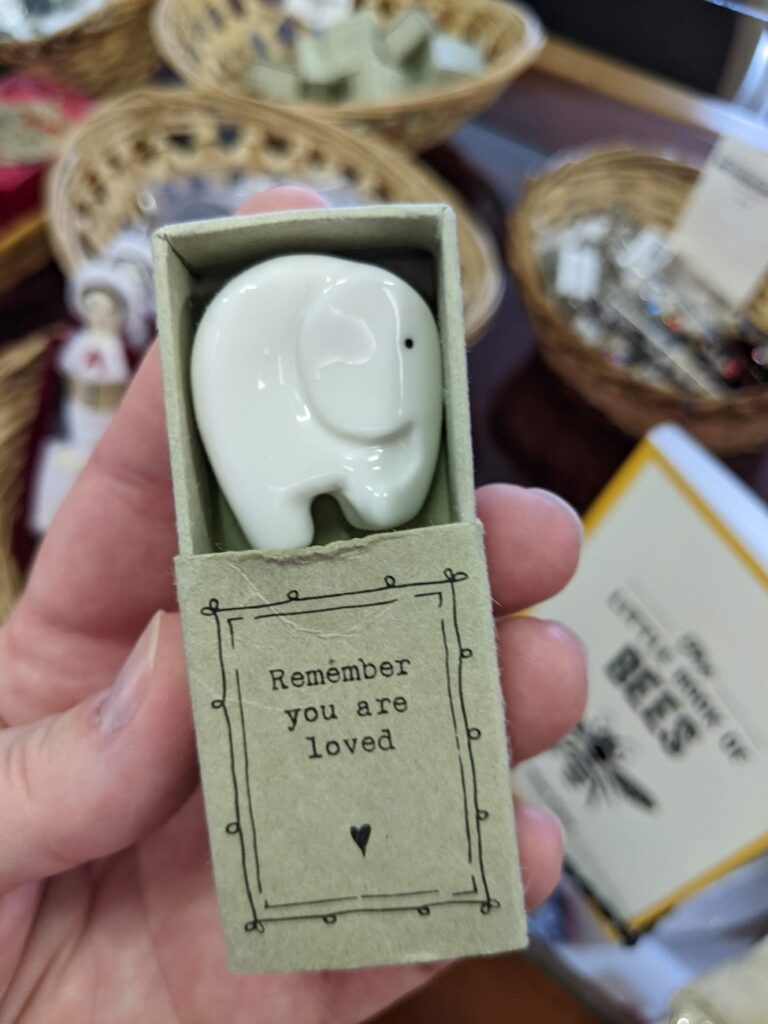
Colonial Revival Gardens
The Colonial-style gardens were planted in 1909 during the reconstruction of the property. They feature a Jacobean Knot layout with boxwoods and heritage lilacs and geraniums. A huge wisteria arbor shelters small tables. And roses climb beehive-shaped trellises.
A seaside lawn is the perfect place for events and sometimes there are tents set up. And it’s the perfect vantage point from which to view the bay, marina, Marblehead across the way, and the ferry to Boston.
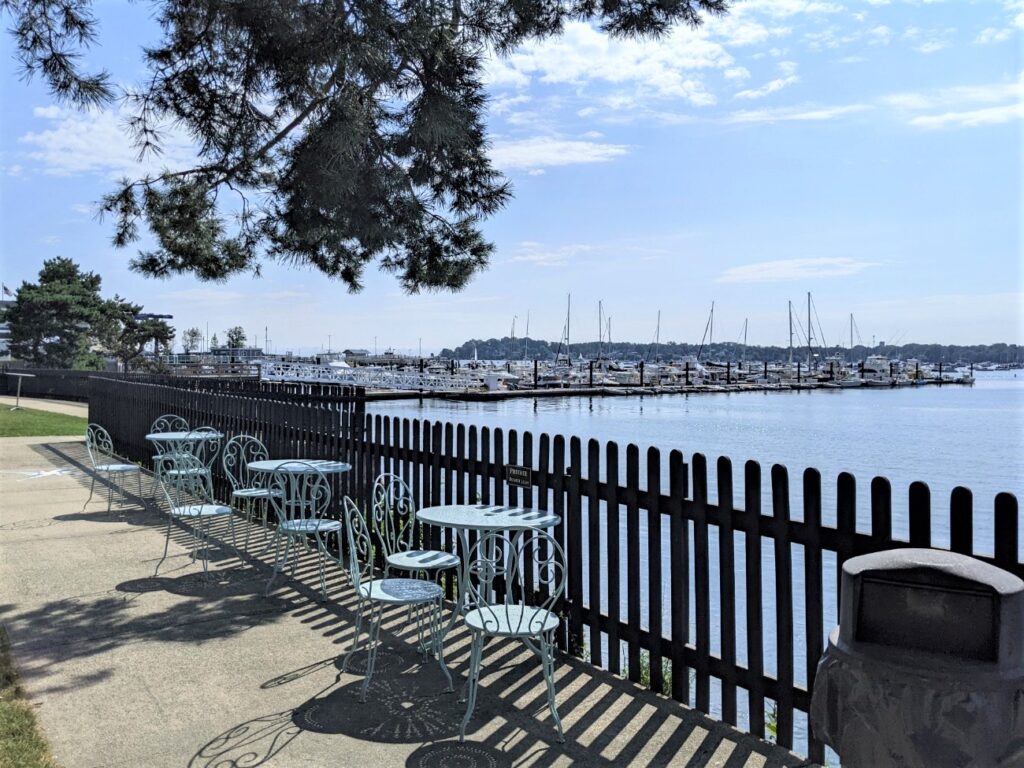
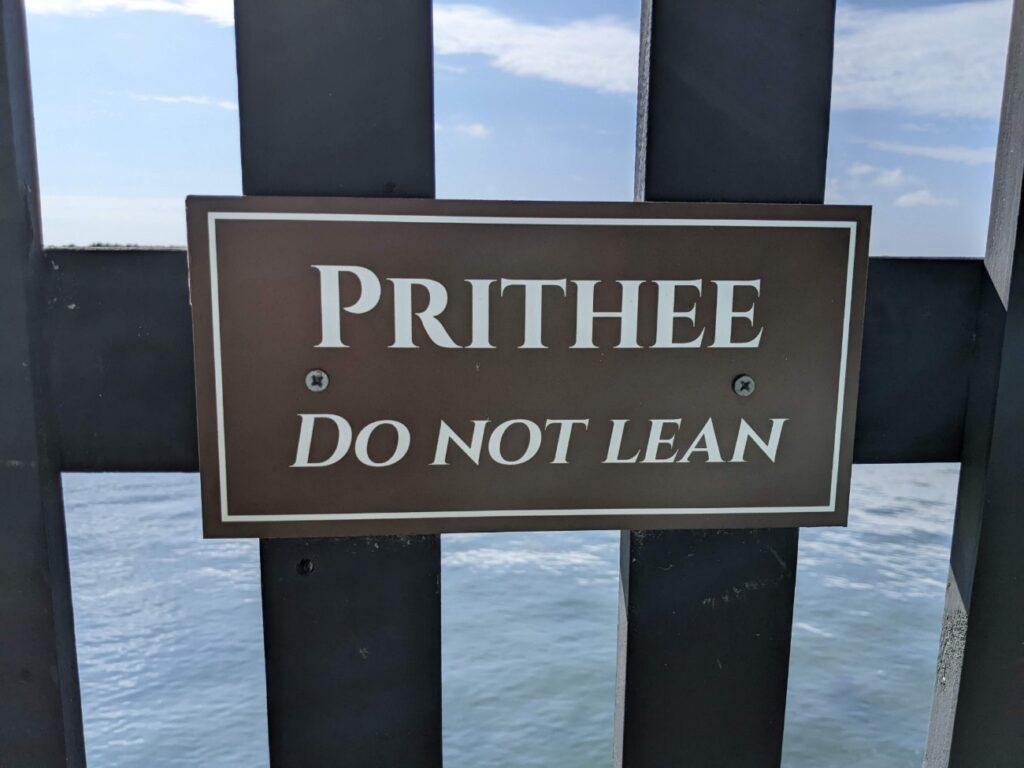
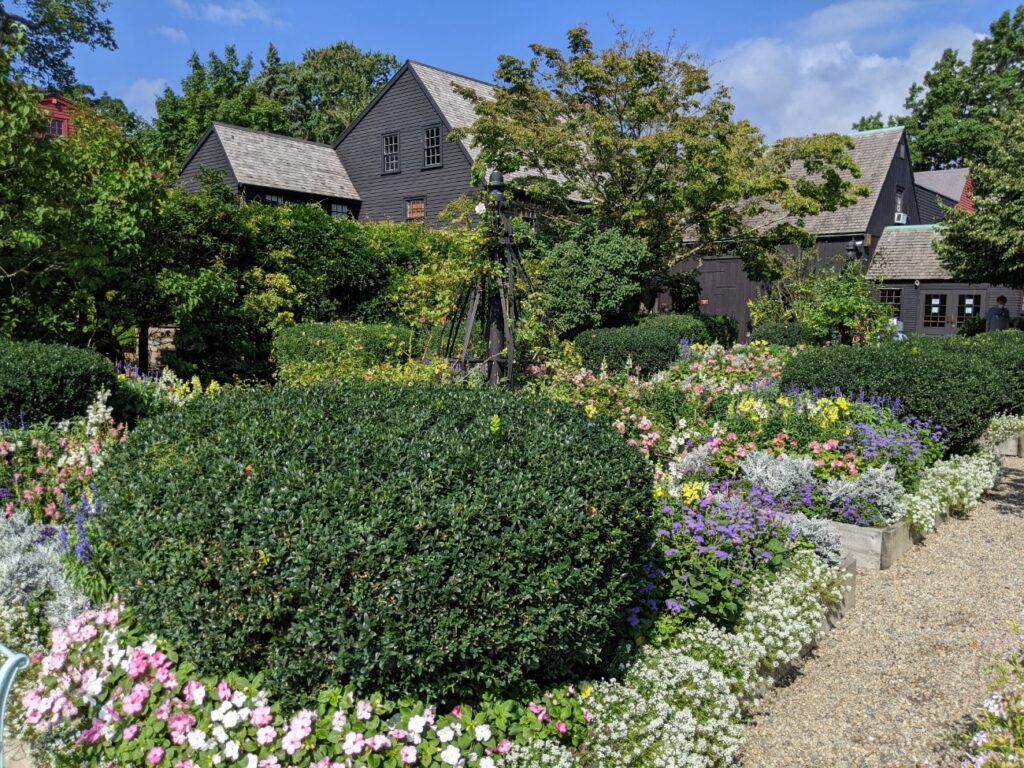
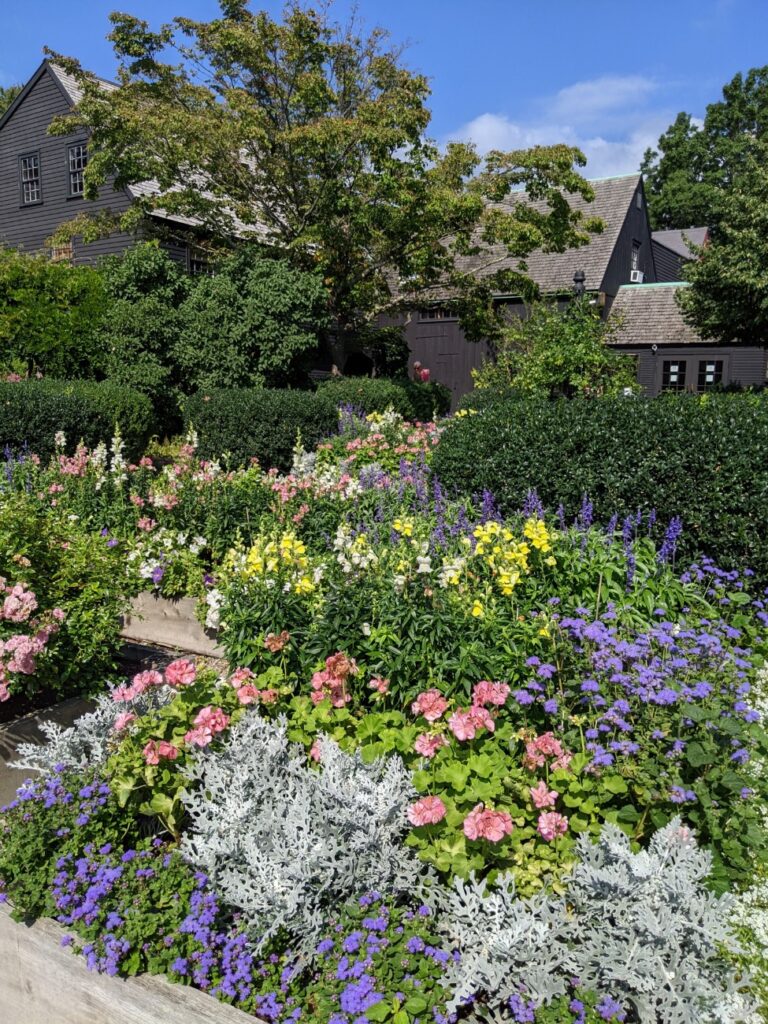
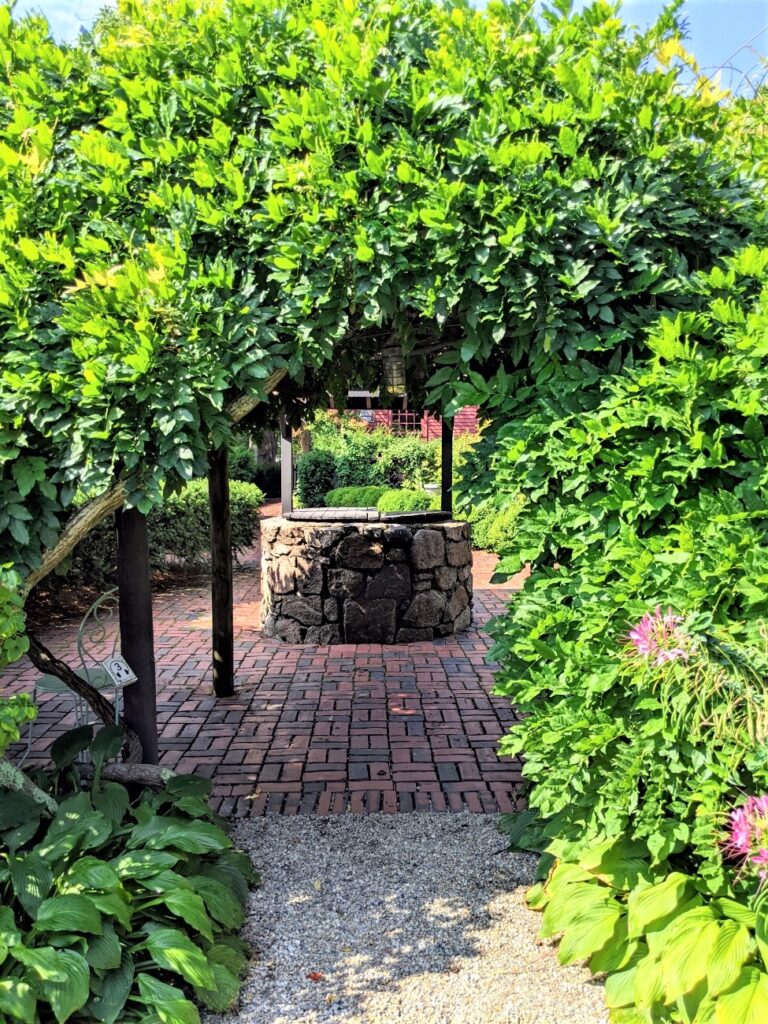
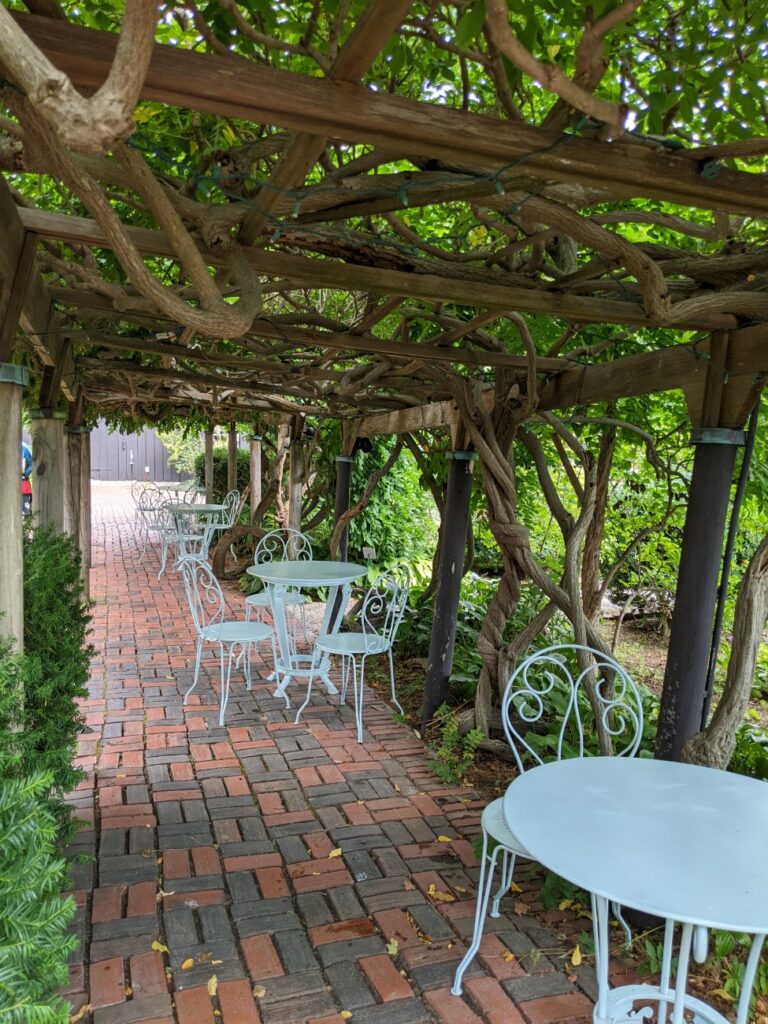
Admission & Hours
The cost to visit The House of the Seven Gables and the rest of the grounds is $25 for adults, $20 for seniors 65+, $17 for kids 5-17, and free for children under 5. You can tour just the grounds for $12, but that only applies from May 11-Nov. 30. The rest of the year, it’s free. Admission to the house and the grounds are free year-round for Salem residents with ID, including school-issued ID. Purchase at the visitor center, or online. You can even get your free passes online to get a time that works for you.
Hours are generally 10 am-5 pm, with the last entry at 4 pm. But as always, check the calendar before you go – it’s currently closed until February 11. Tickets are timed-entry, and masks must be worn inside the mansion. Parking is free.
Salem Heritage Trail
If you are in Salem to walk around on the Heritage Trail, you’ll find it easy to do. There’s a red & yellow line through town, connecting the most important sites. Most have to do with the Salem Witch Trials, for which the town is famous. While The House of the Seven Gables isn’t directly connected to the witch trials, it’s true the Turners lived through that time. And Hawthorne’s novel is set and heavily influenced by the spirit and guilt of that age.
The House of the Seven Gables is on one end of the heritage trail, so it makes a good spot to start from, especially with the free parking. There’s also a paid parking garage across from the Salem Visitor Center. Just follow the painted line on the sidewalk. I didn’t go into most of these other places, so I don’t feel like I can make a proper post about the Heritage Trail itself, so I thought I’d just tack it on here.
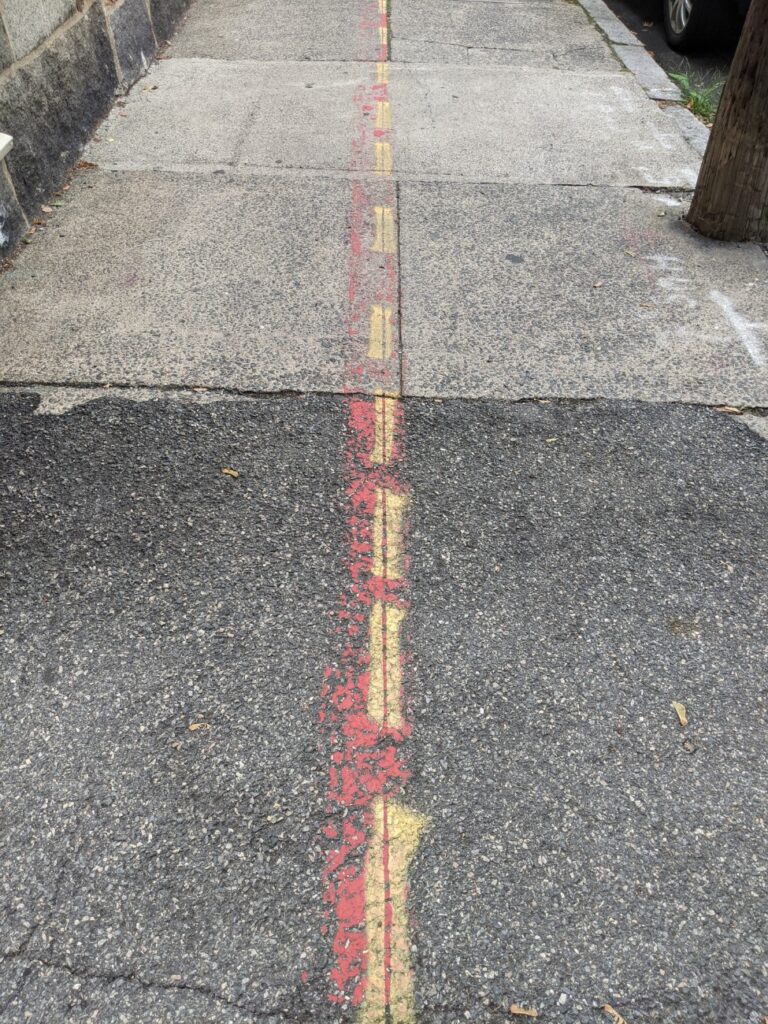
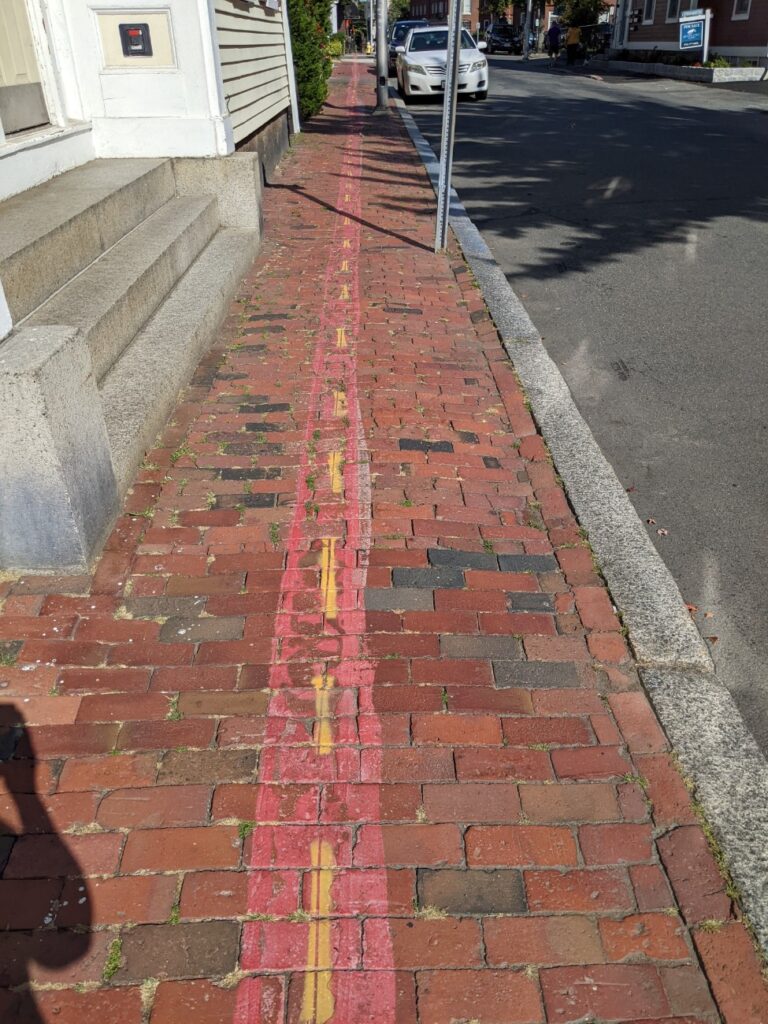
BONUS: Herb Mackey’s Sculpture Yard
Right away, I’m going to start off with a spot that’s not on the official list. Right next door to The House of the Seven Gables is Bob Mackey’s Metal Sculpture Yard. You can’t go inside or pay for admission, but you can see the whimsical sculptures from the street. Some of them have price tags on them if you want to leave your money in the mailbox!
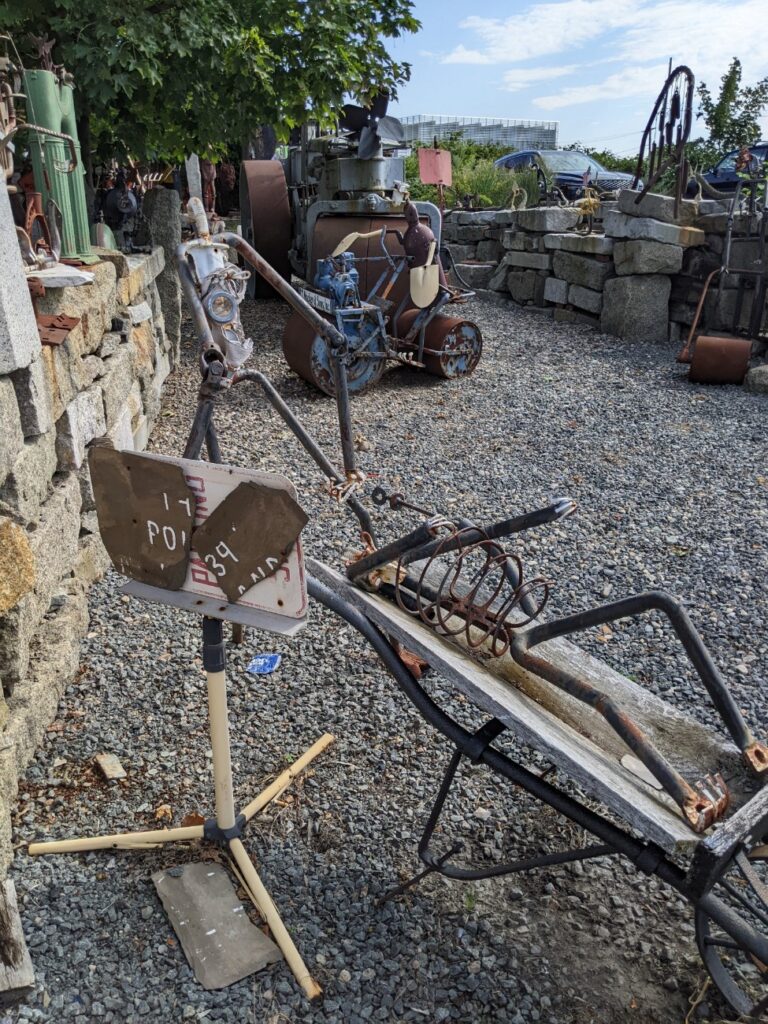
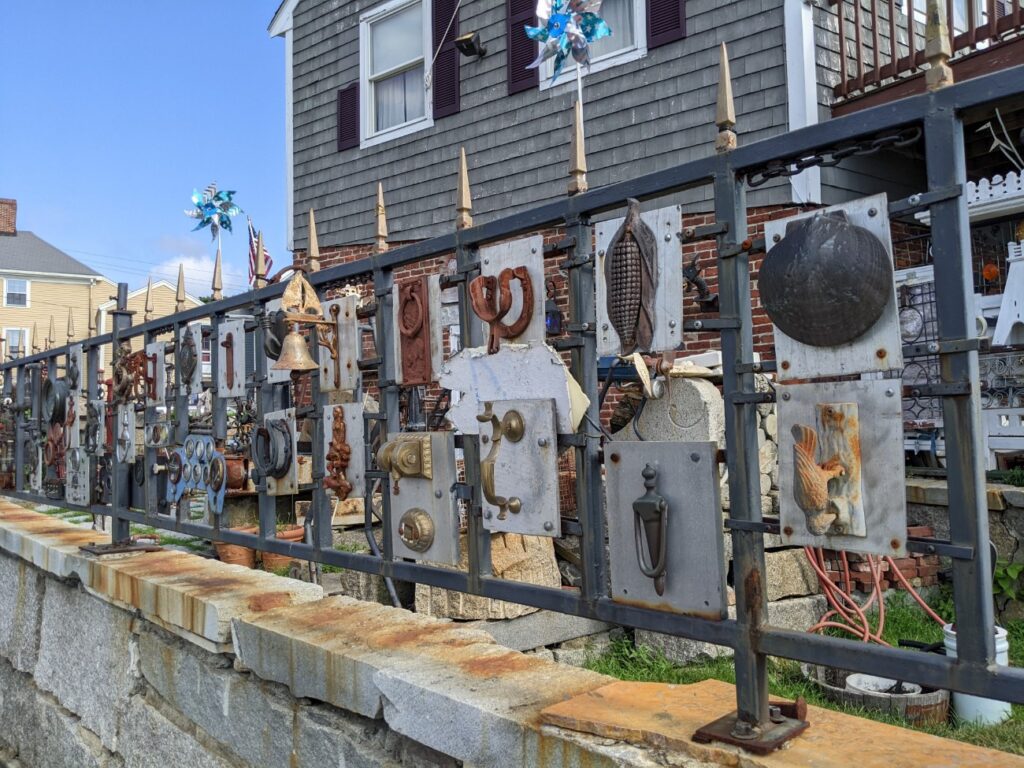
Salem Maritime National Historic Site
If you walk on the Heritage Trail Line towards the middle of town, you’ll come to the Salem Maritime National Historic Site. Before Salem was known mainly for prosecuting supposed witches, it had always been a bustling seaport. This slice of park honors that history with a jetty out to a short lighthouse and a recreated sailing ship.
The area is free to visit, open 24 hours, and there is no parking. But the ship, the Friendship of Salem has limited hours. I can’t find what they were, but it was pretty limited, like 11-3. Right now, during the winter, the ship is at the Peabody Essex Museum.
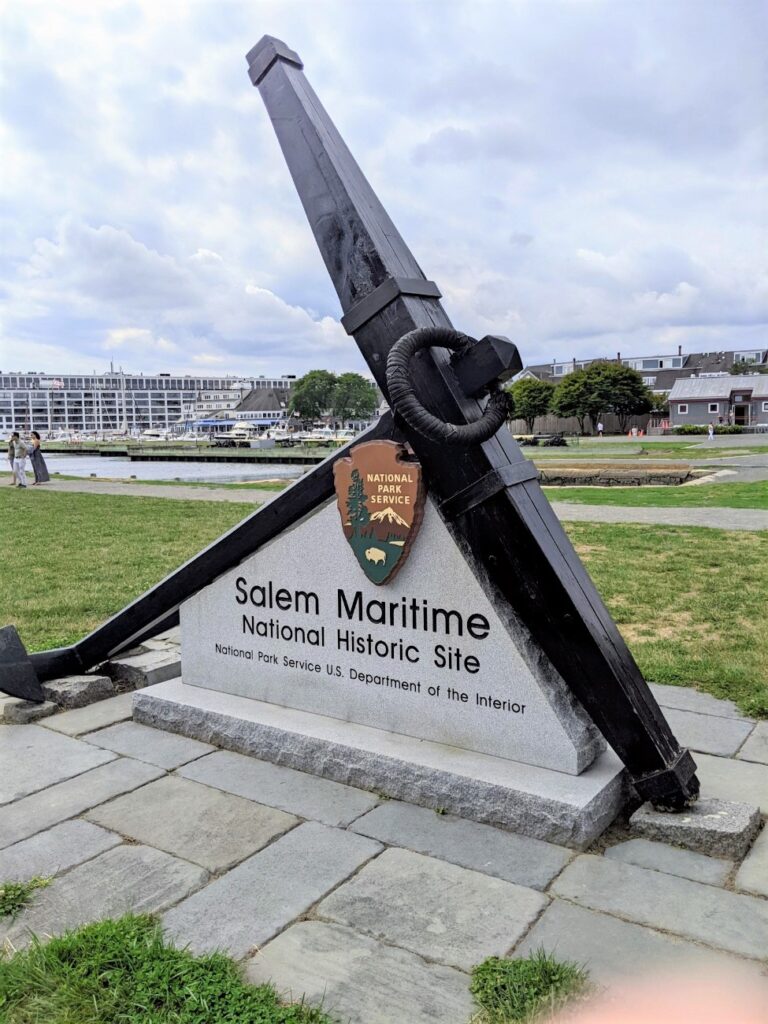
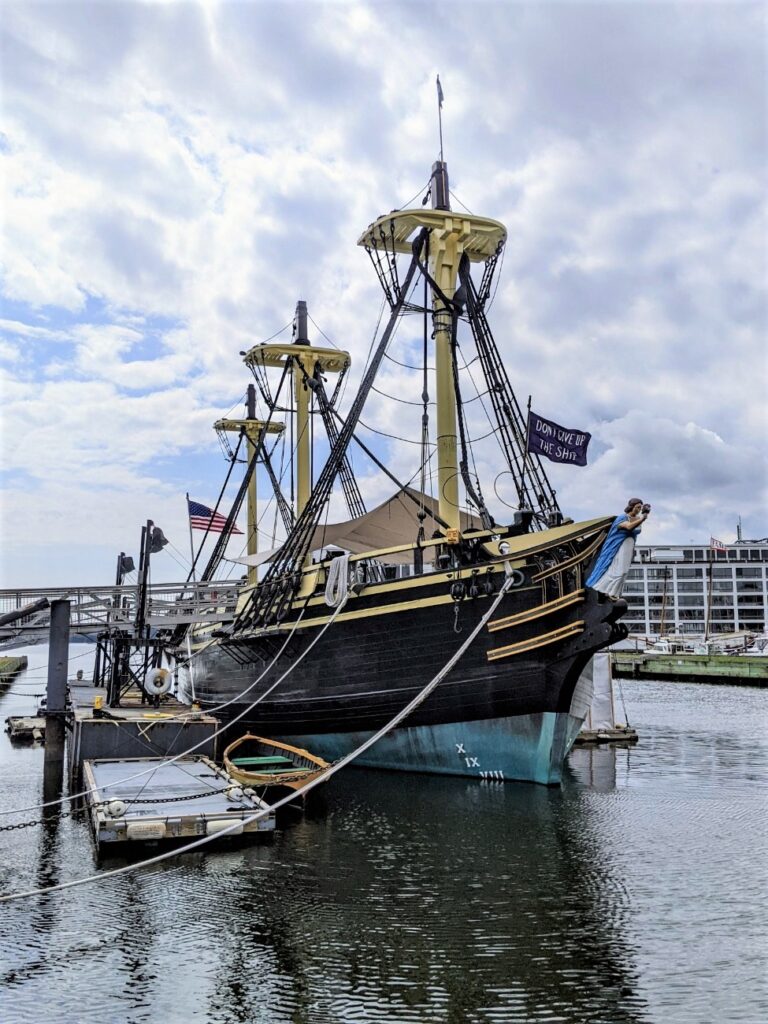
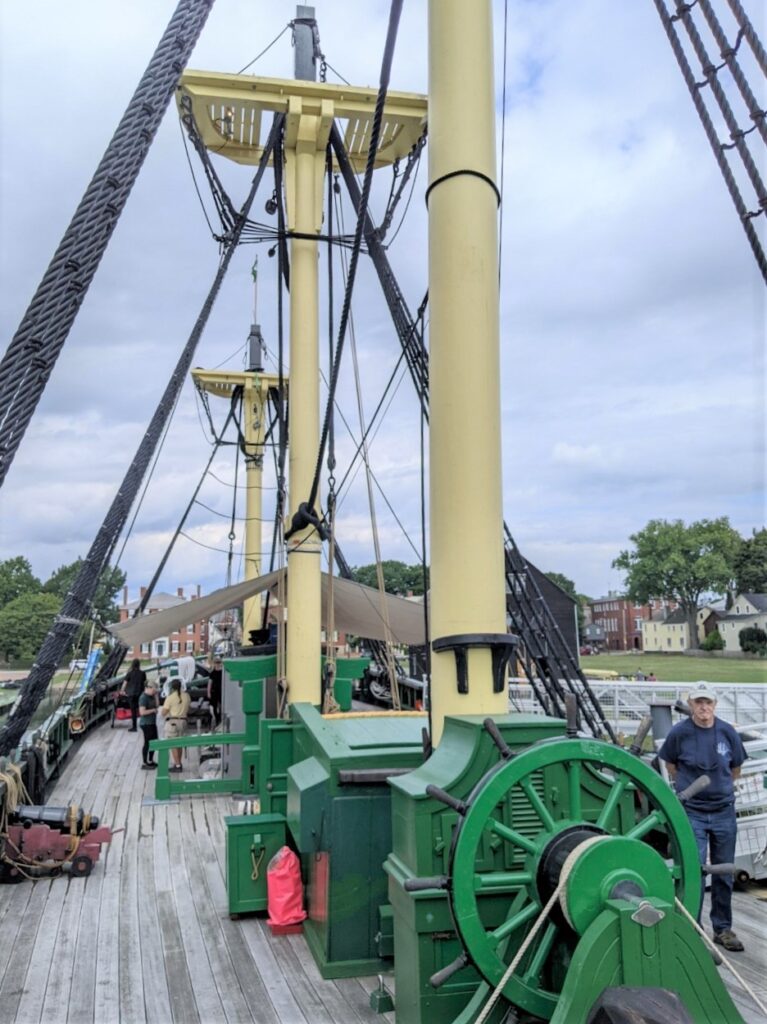
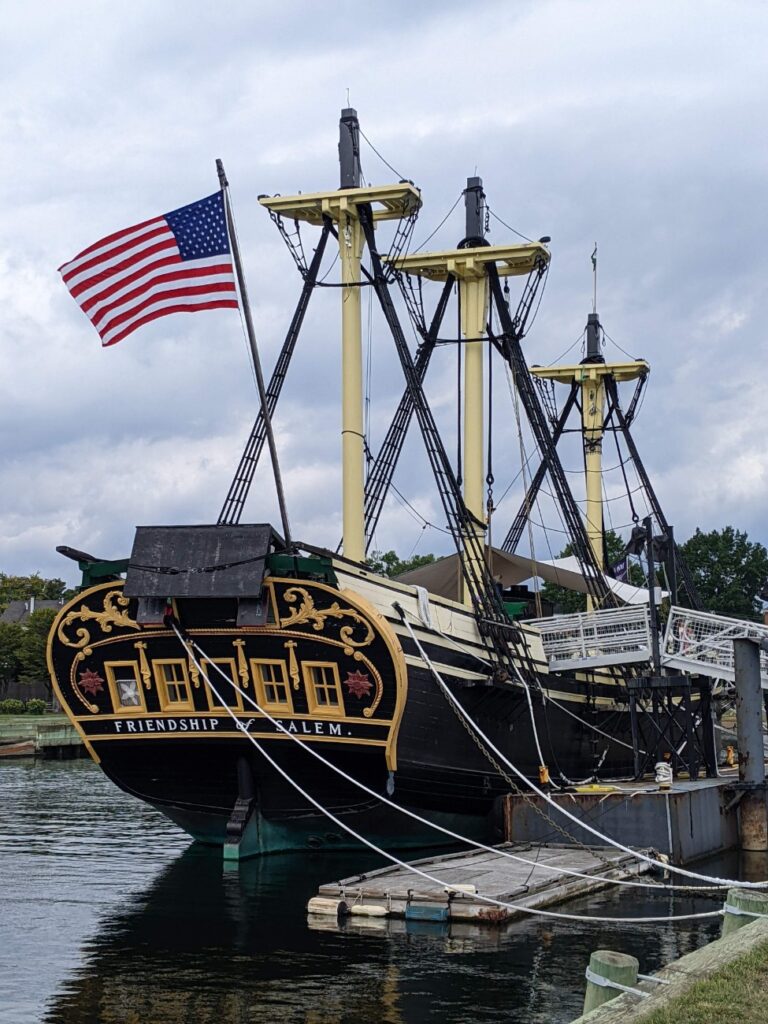
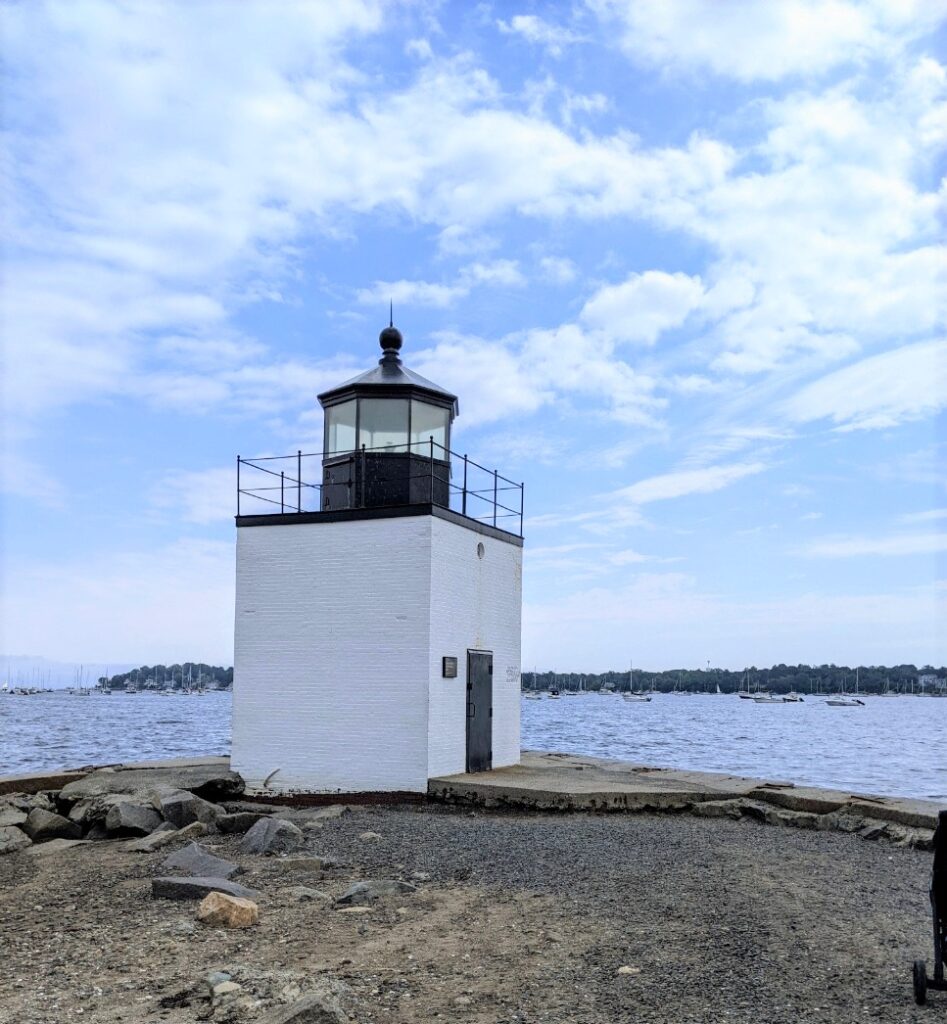
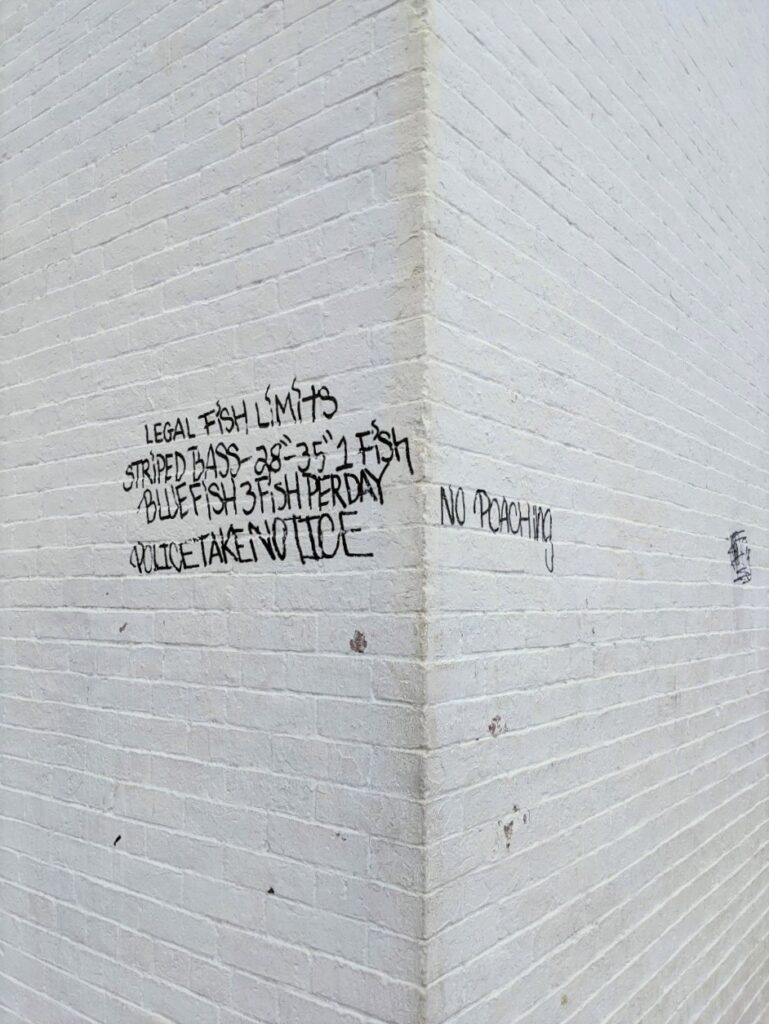
Charter Street Cemetery
The Old Burying Ground was first used in 1637 and holds some notable locals. Susanna Ingersoll, cousin of Nathanial Hawthorne and owner of The House of the Seven Gables is here, as well as some other Hawthorne/Hathorne family members. One of the prominent judges of the witch trials is also buried here.
The small cemetery is free to visit, and you can get a map at the entrance. (I forget if you have to pay for the map, but if so, it’s nominal.) A welcome center is in a small two-room historic house adjacent. The graveyard surrounds the newer Salem Witch Trials Memorial, both of which are at the top of a short street with some other “witchy” attractions – a silly wax museum and “witch village” shop. There’s no parking, but the garage & visitor center are only a block north.
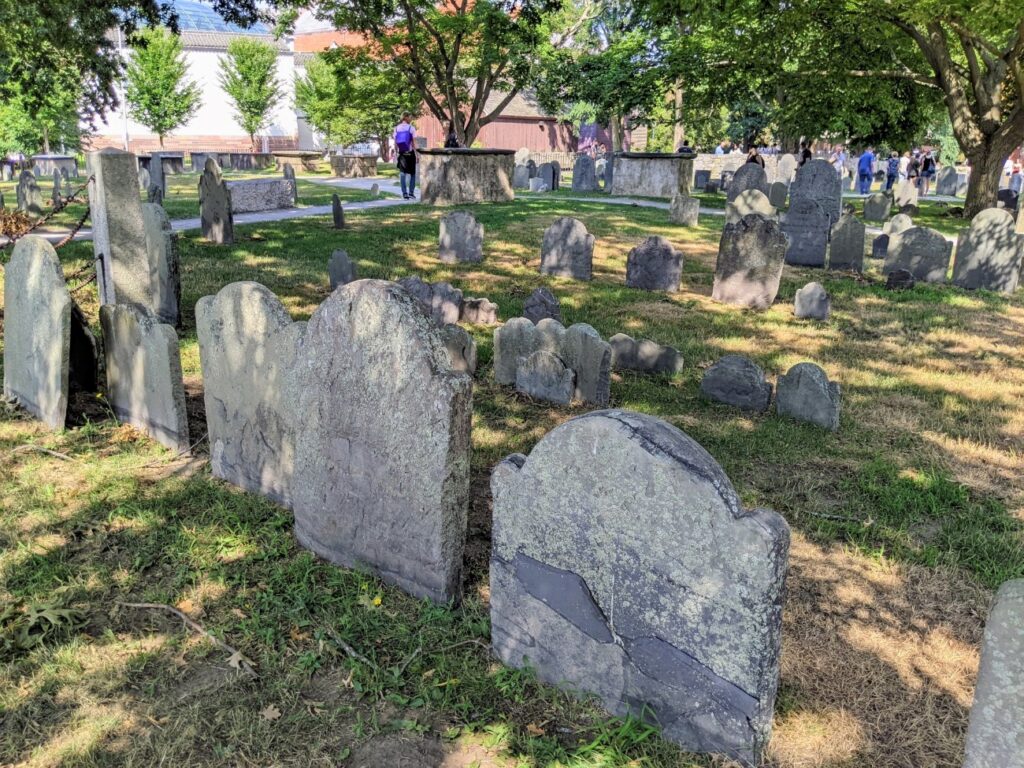
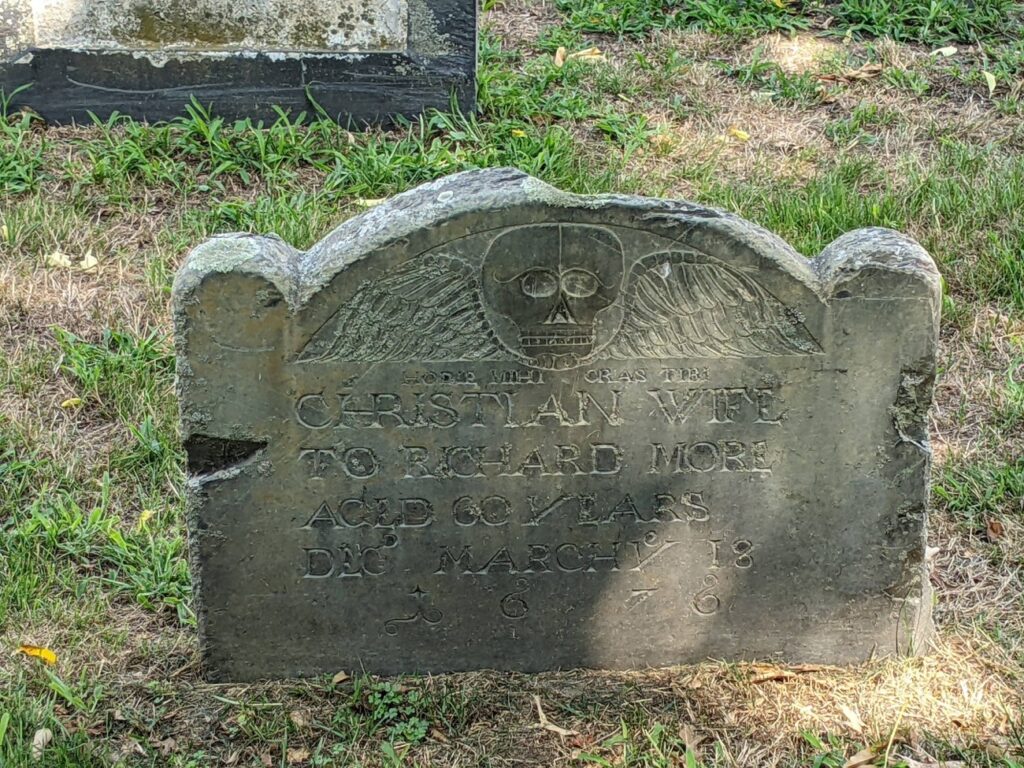
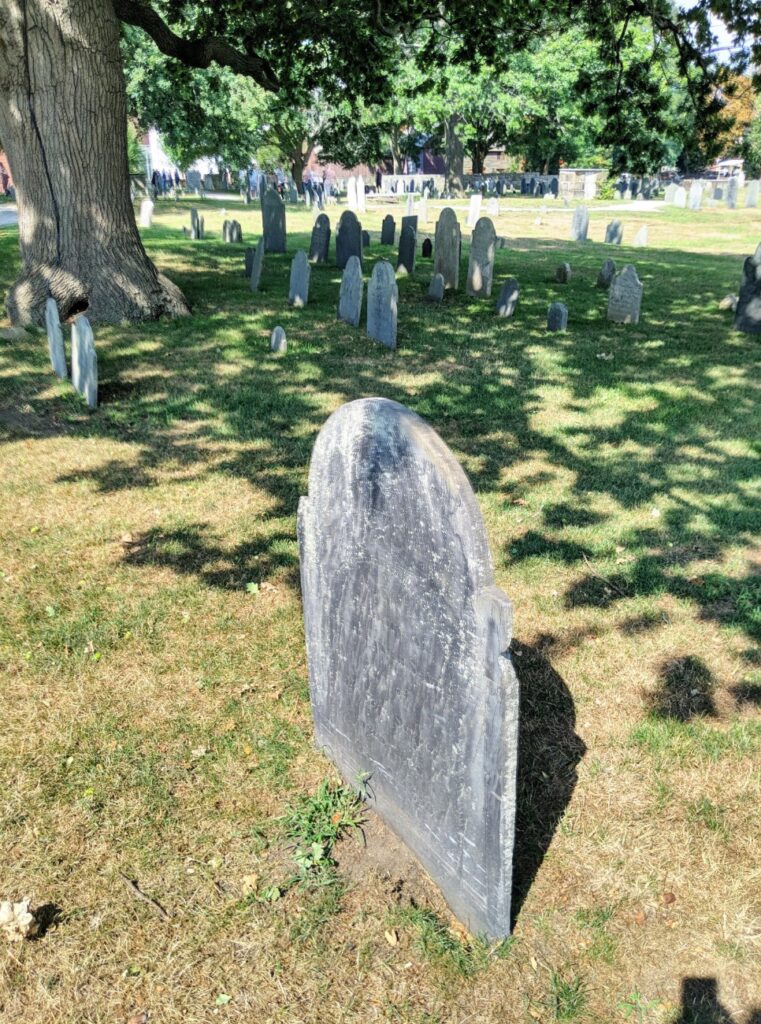
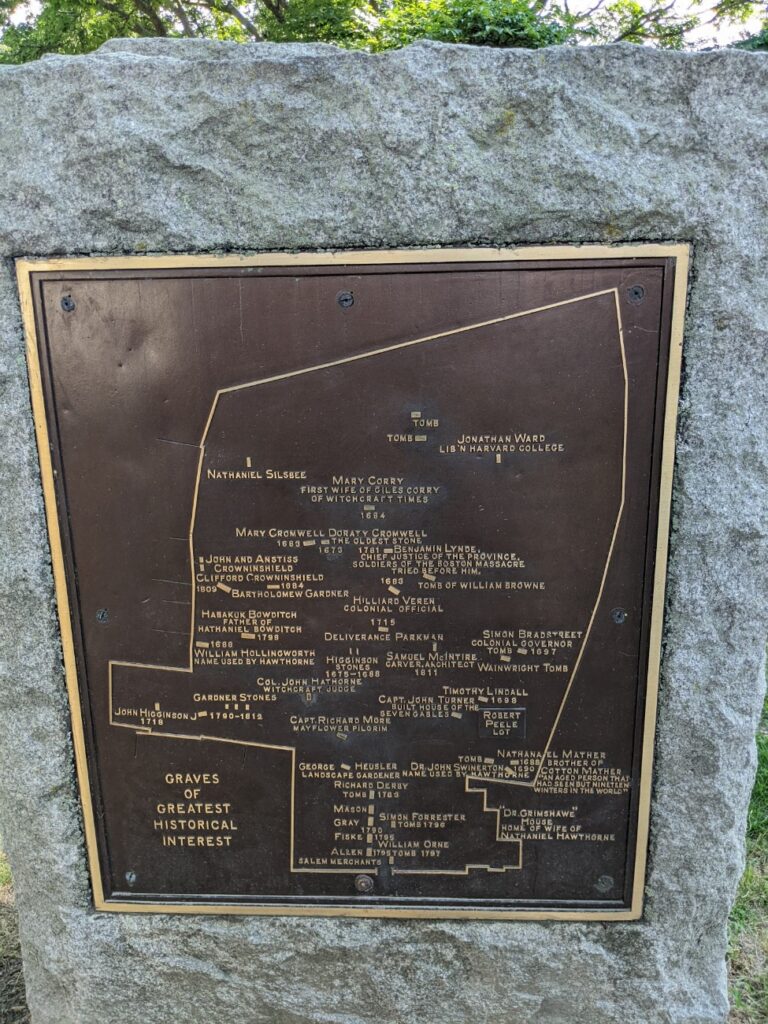
Salem Witch Trials Memorial
Surrounded by the Charter Street Cemetery, the Salem Witch Trials Memorial is a stone plaza memorializing the 20 men and women who were executed as witches during the Salem Witch Trials. In contrast to the thin stone headstones of the cemetery, the memorial uses thick stone blocks that jut out from the wall, inscribed with the names of each of the victims. Across the entrance, some of their final words can be seen.
I will tell you the truth, I totally thought the stone blocks were benches that the city had thoughtfully provided for visitors. But if you watch for more than a minute or two, you’ll notice the tour groups walking through, some placing flowers or small stones on each memorial. It’s really a lovely spot and definitely the center of tourist activity.
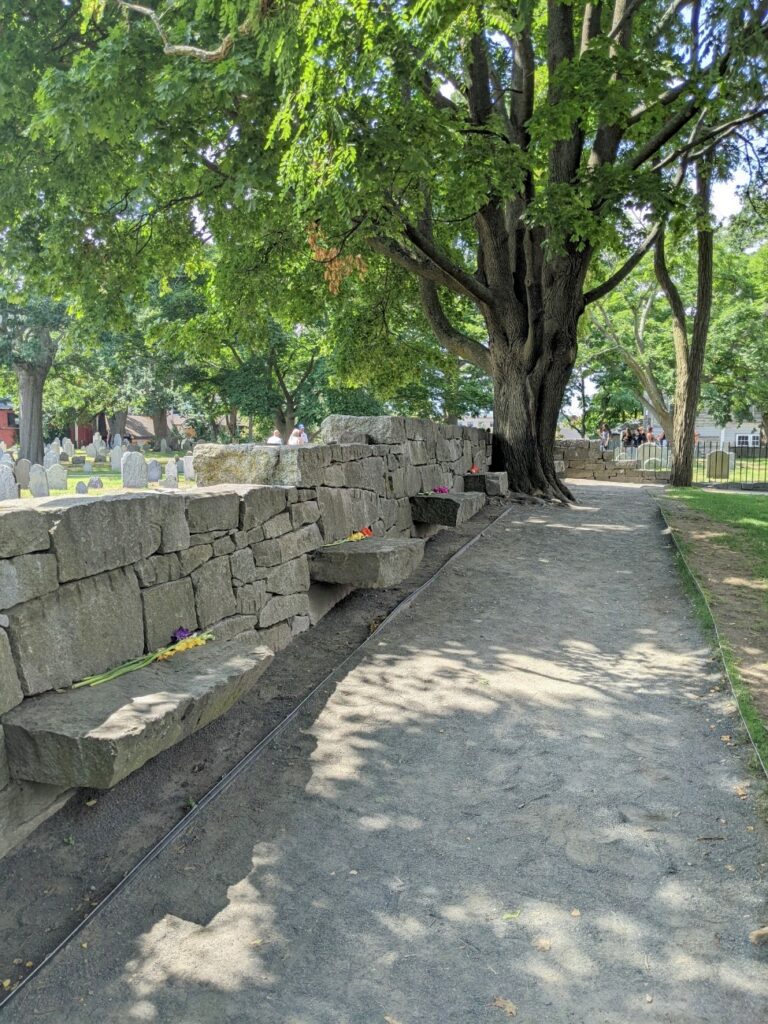
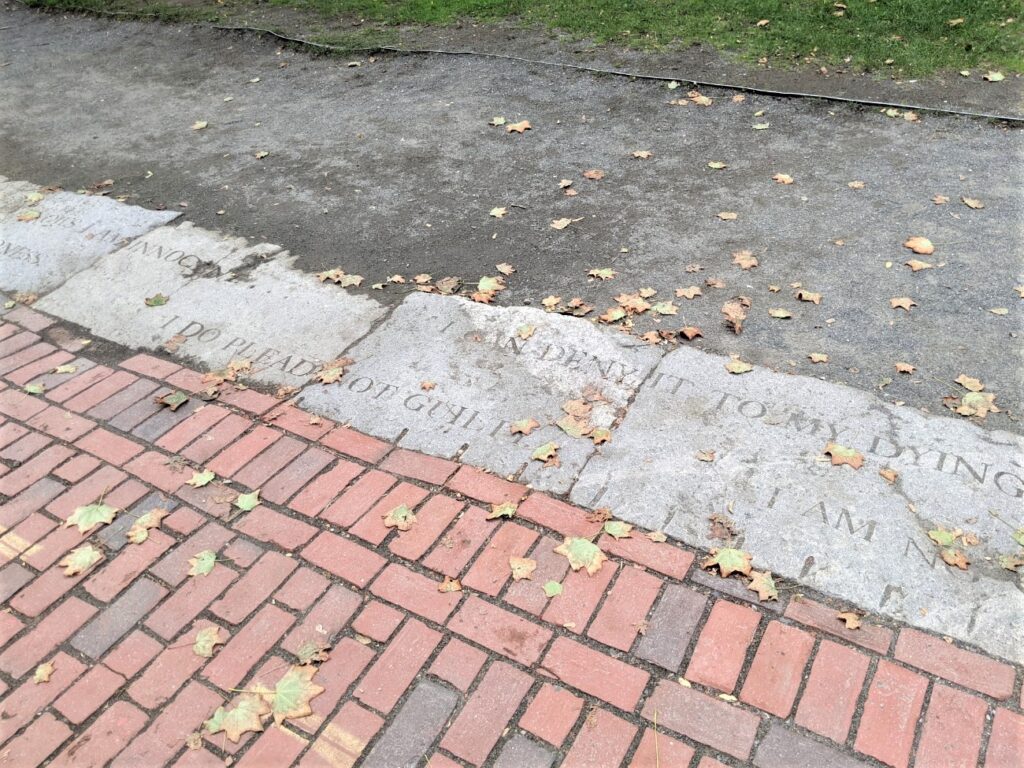
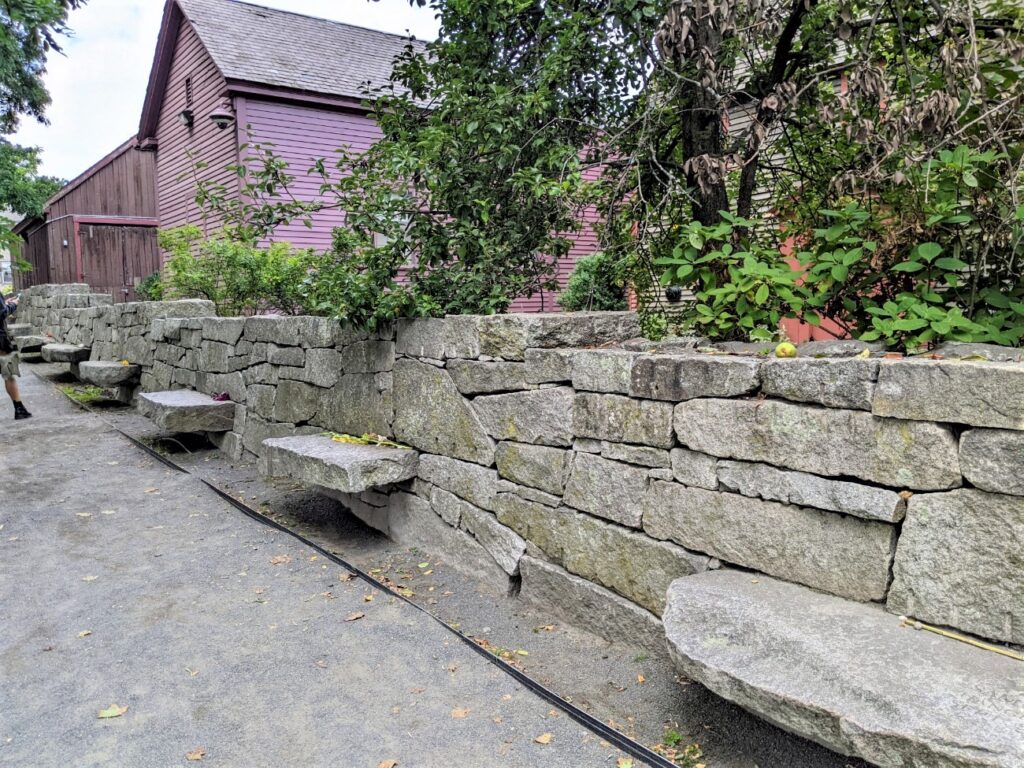
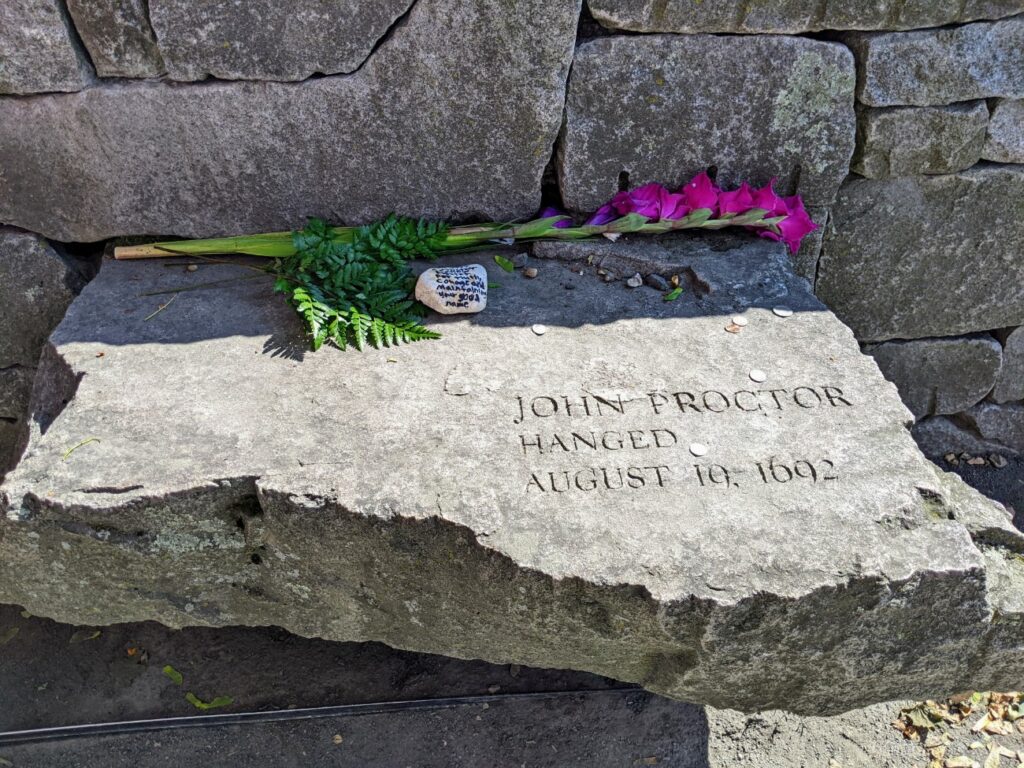
Bewitched Statue
My particular walk down the Heritage Trail took us down Essex Street, a pedestrian mall of shops and tours. The Peabody Essex Museum is here, along with the Witch History Museum and lots of spooky shops. My friends and I enjoyed Wicked Good Books, a fantastic little bookshop.
Along here is the historic East India Marine Hall and Derby Square – they’re on the official Heritage Trail map. But we made a bee-line to the statue of Elisabeth Montgomery as her character in the 60’s sitcom Bewitched. I guess she counts as a witch too, and a few episodes were even filmed in Salem. Still, it’s a stretch.
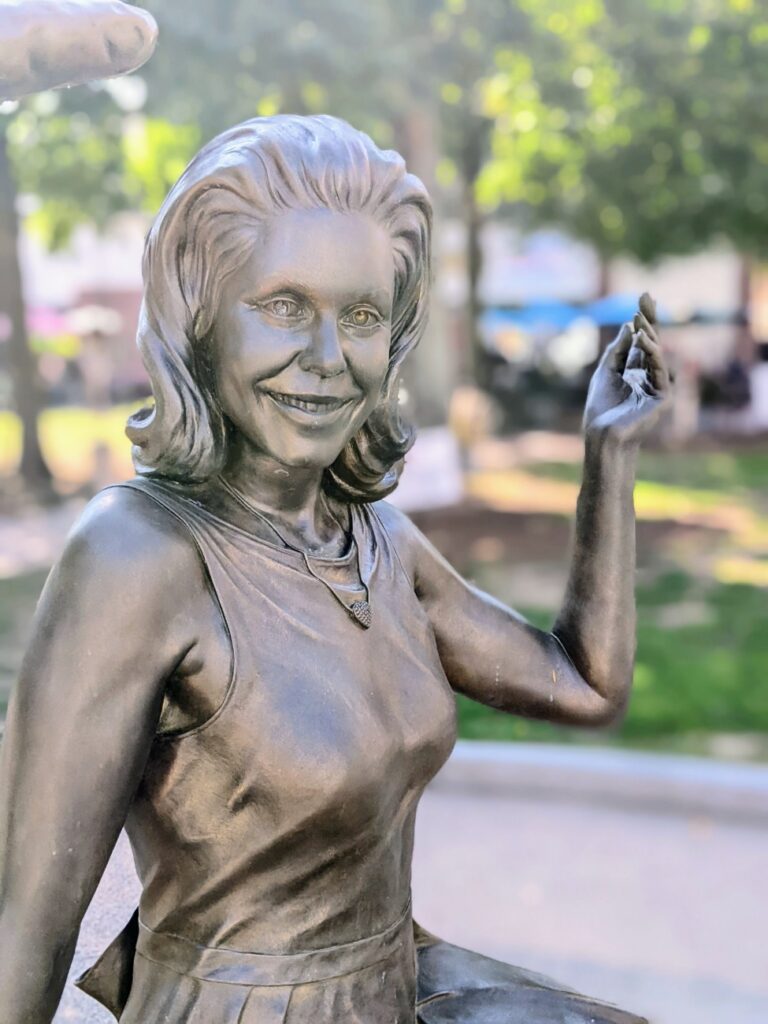
Salem Witch House
At the furthest end of the Salem Heritage Trail is the Corwin House, or the Salem Witch House. The owner of this house was a prominent judge during the early days of the witch trials and was on a court that sentenced 28 people to death. Built in the early 1660’s, this is the oldest house still standing that connects directly to the witch trials.
You can take a self-guided tour for $9, and children under 3 are free. Current hours are noon-4 pm, Thursday-Sunday, though those hours are extended during the warmer months.
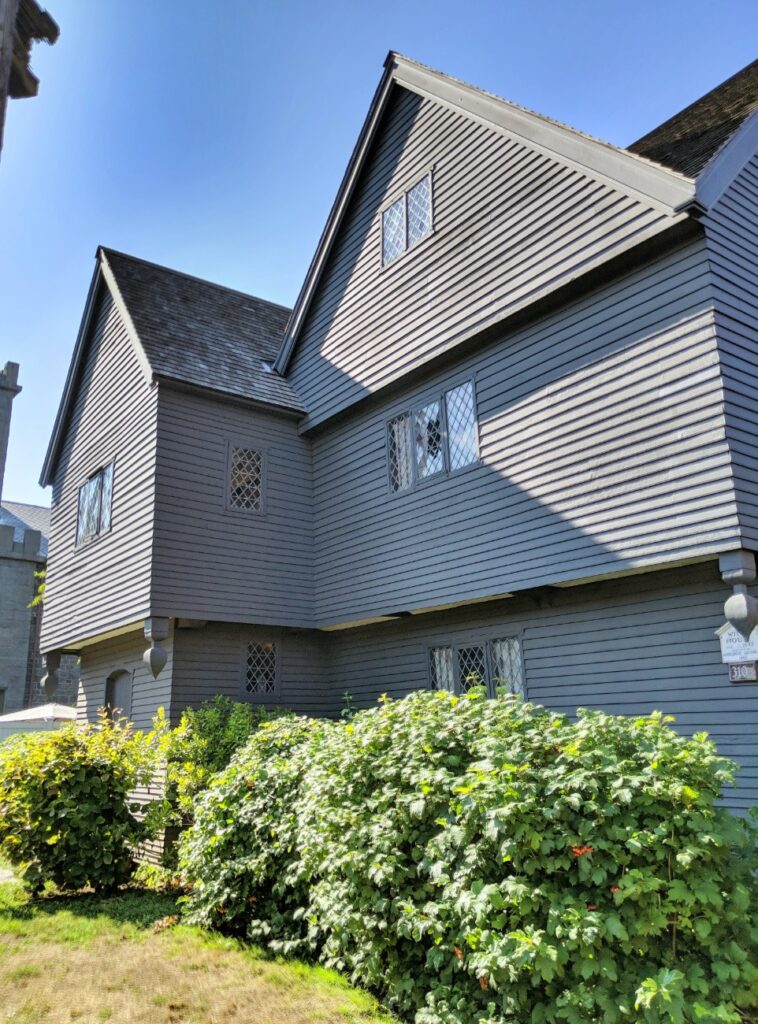
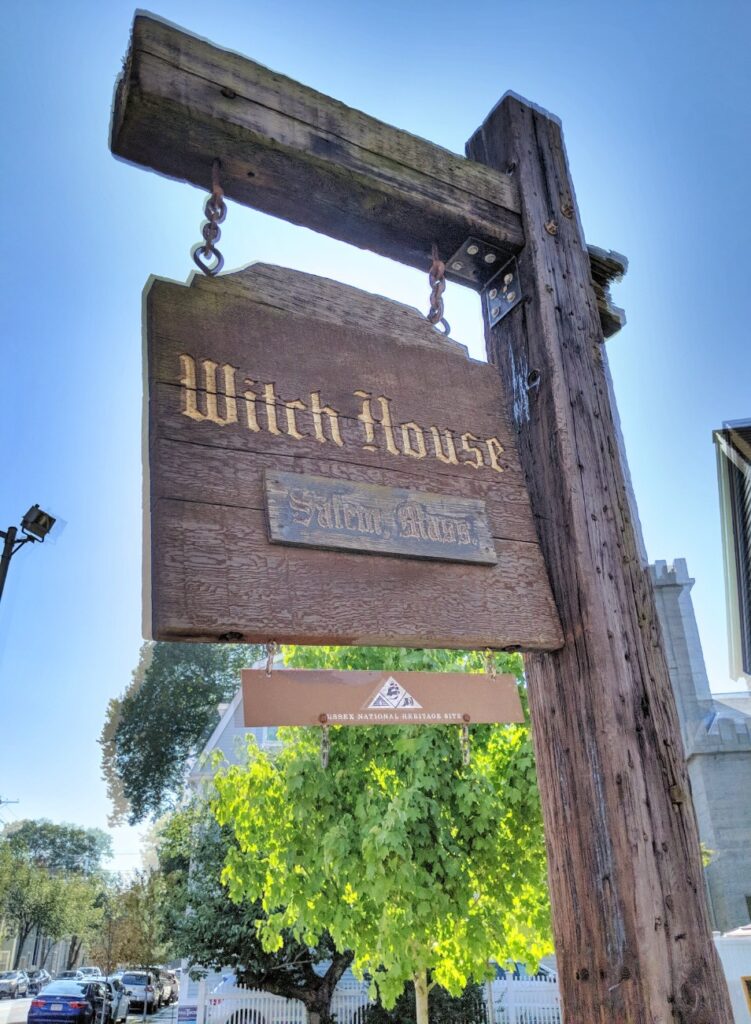
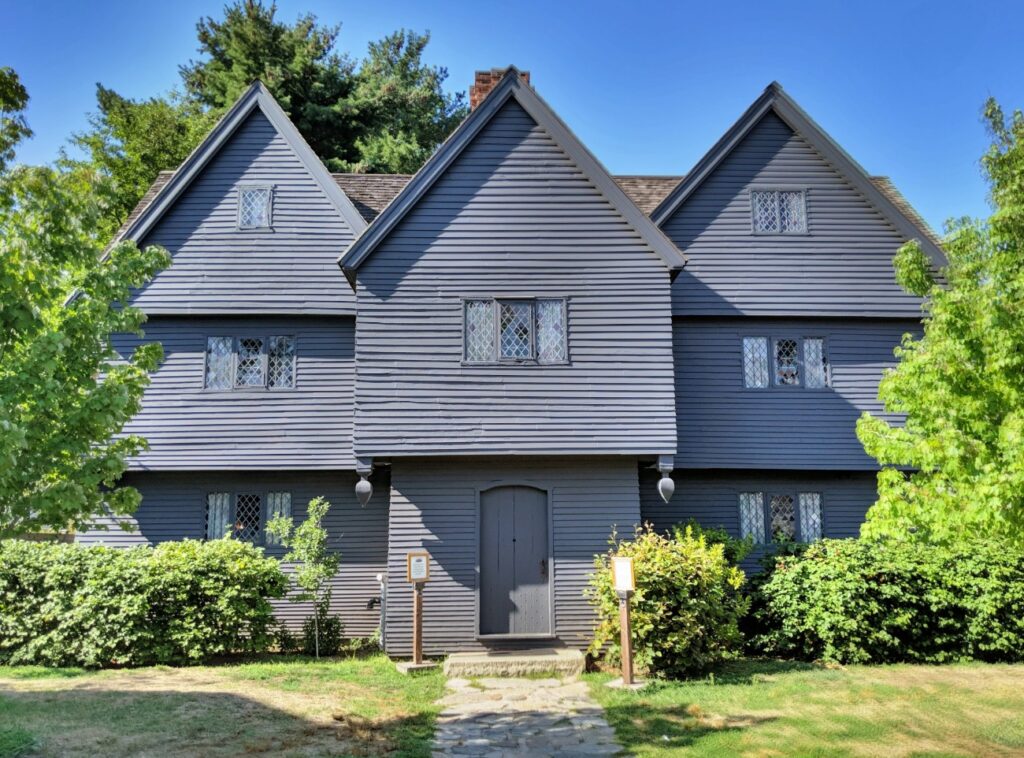
Witch Dungeon Museum
On our way back, we walked on Lynde Street to see the Witch Dungeon Museum. Inside, you can see a live re-enactment of the witch trials and tour the dank prison where they were held for execution. The museum opened in 1979 in a chapel built in 1897 on some old fortifications. Tickets cost $13 and can be combined with the Witch History Museum and the New England Pirate Museum for an $8 savings overall. Hours are 10-5, with last entry at 4 pm. And the museum is only open from April 1-Nov. 30, not year-round.
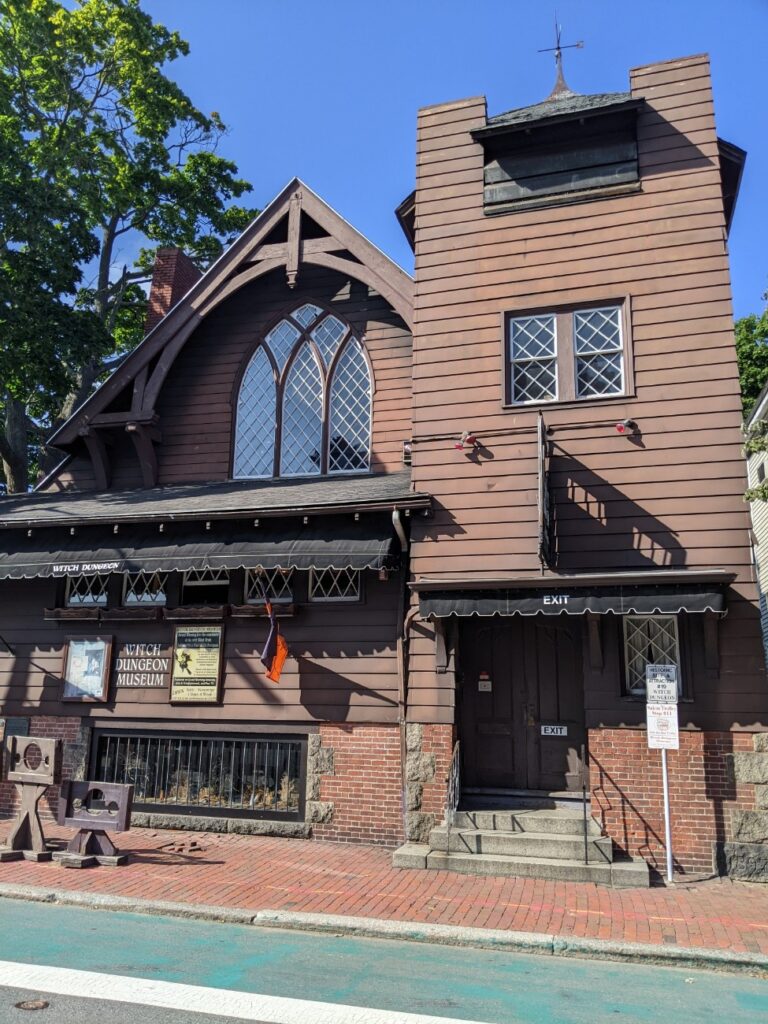
BONUS: Proctor’s Ledge
Proctor’s Ledge is a ways out of town, definitely out of walking distance. Tucked in a normal neighborhood is a small area where the witches were actually executed. Names and dates memorialize the desceased.
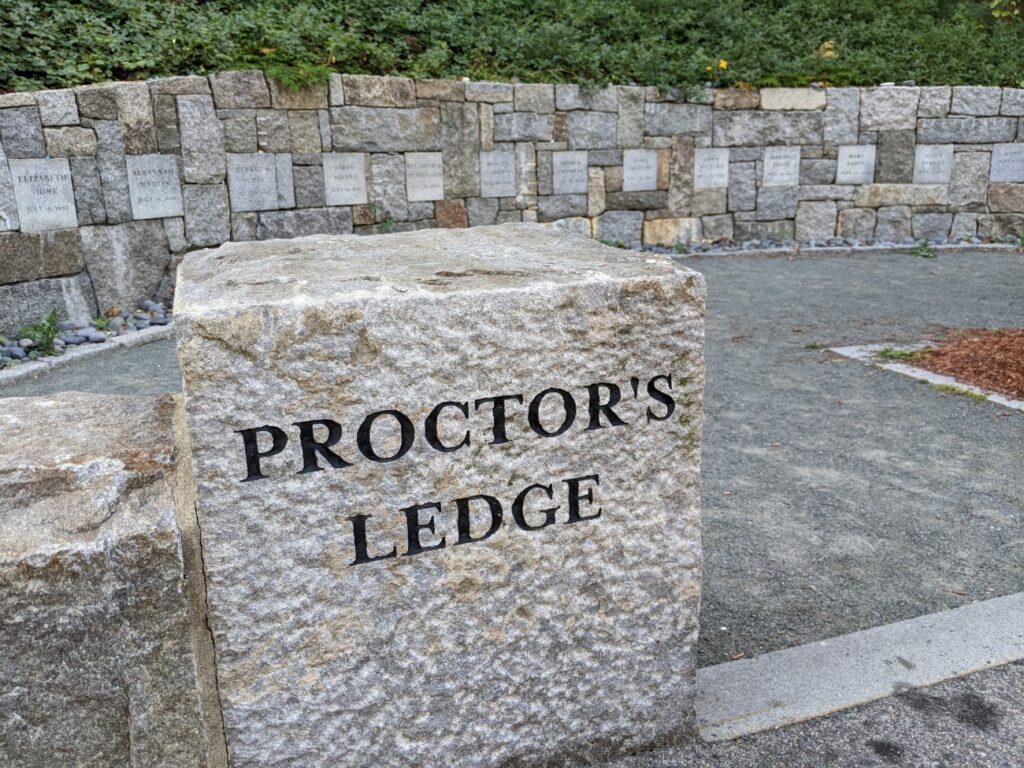
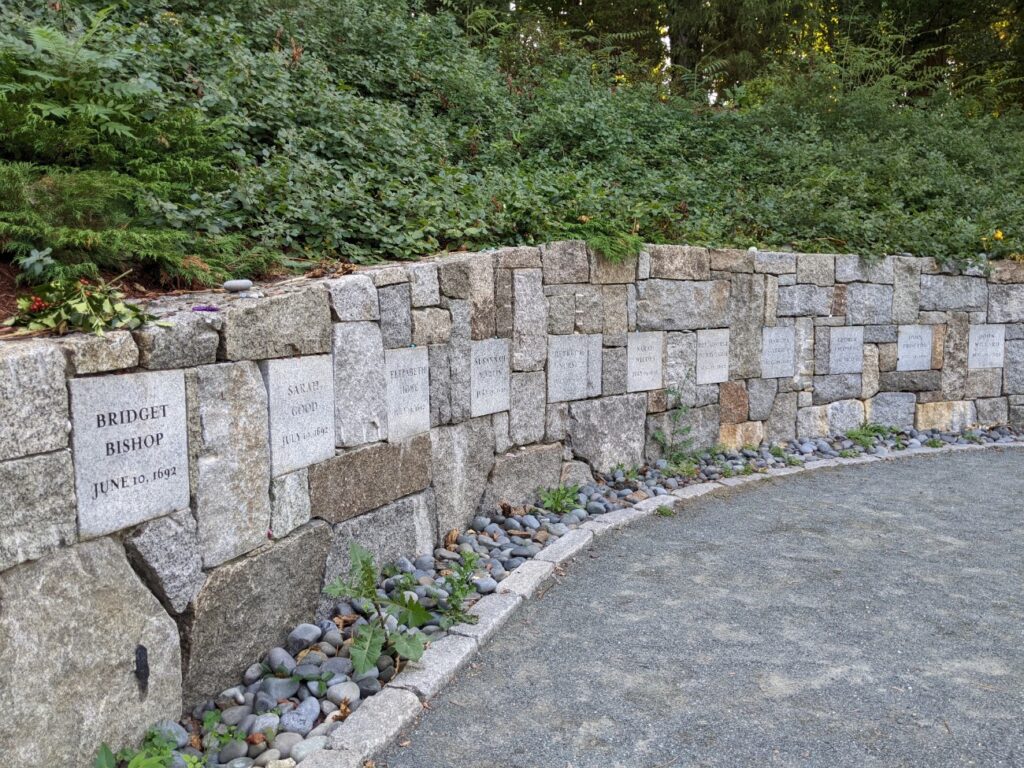
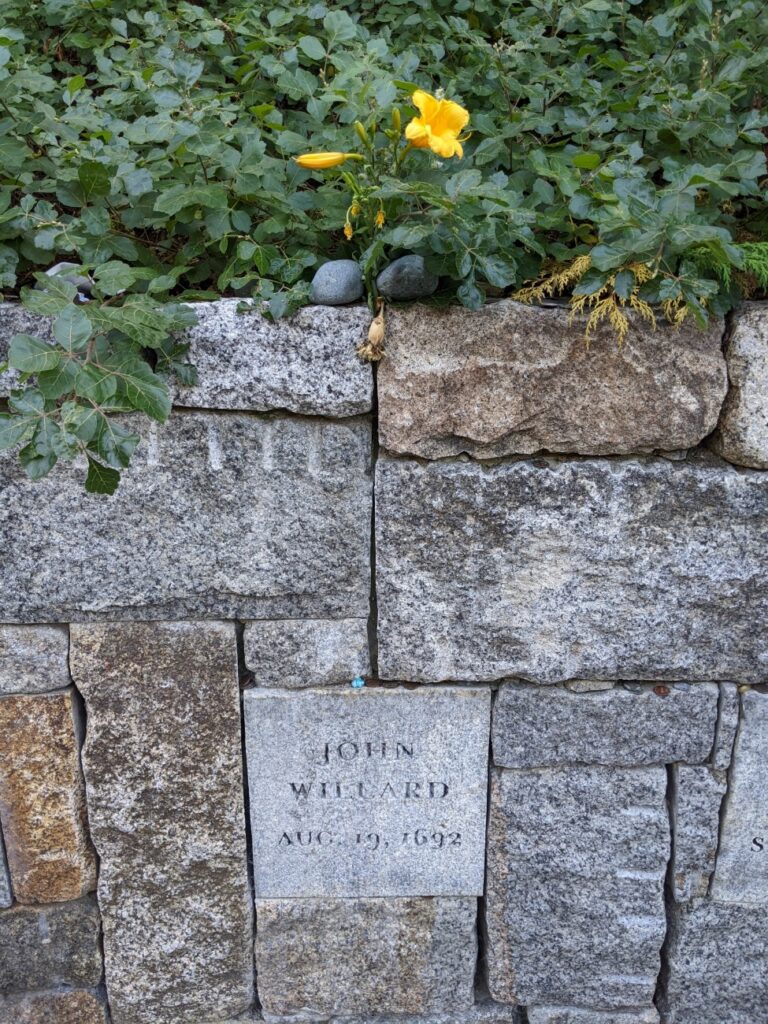
Other stops that I didn’t officially visit or take pictures of that are on the official Heritage Trail include the Charlotte Forten Park, named for an early African-American activist. The official Salem Witch Museum (not the same as the Witch History Museum) housed in the grand East Church. And adjacent Salem Common, the city park known as the birthplace of the US National Guard.
Other salem sites listed on Atlas Obscura include Count Orlock’s Nightmare Gallery of movie monsters, found on Essex. The Salem Witch Board Museum full of ouija boards, also on Essex. The Black Veil Shoppe of Drear & Wonder offers wonderfully grim photo ops, though it is farther from the center of town. Lyceum Hall, home to several notable speakers, including Alexander Graham Bell’s first demonstration of the telephone, now houses a seafood restaurant. The Joshua Ward House is now a boutique hotel, and the Stephen Phillips House was built using four intact rooms from a different estate.
However you visit Salem, the history is rich and deep and worth exploring, but it’s also easy to walk around and really fun and whimsical, in a macabre sort of way. I’d love to go back and see more of it. I was there for not even a day, and I would say that a long weekend would be enough to see everything and have a good time.
Be First to Comment